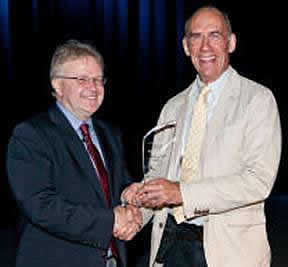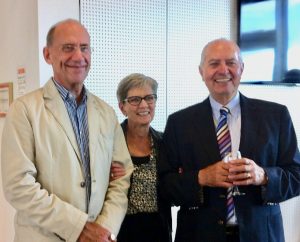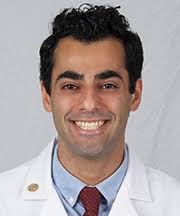History – 2020 M to Z
First author M to Z
Janusz Marcinkiewicz , Henryk Mazurek, Grzegorz Majka, Benjamin Chain. Are patients with lung cystic fibrosis at increased risk for severe and fatal COVID-19? Interleukin-6 as a predictor of COVID-19 outcome. Pol Arch Intern Med 2020 Oct 5.doi: 10.20452/pamw.15630. Online ahead of print.[Pubmed]Free article

Fig. 1 Janusz Marcinkiewicz Wikidata
Sars-CoV-2 (severe acute respiratory syndrome coronavirus) primarily targets the lungs resulting in pneumonia and acute respiratory distress syndrome (ARDS). Therefore, it is more likely to develop severe symptoms if patients have pre-existing lung problems Surprisingly, recent epidemiological data show that comorbid chronic respiratory conditions are not major risk factors in patients with COVID-19. An interesting example is cystic fibrosis (CF) where there is emerging evidence that severity of Sars-CoV-2 infection is milder than predicted, even though CF is frequently associated with diabetes, a strong predictor of severe Sars-CoV- 2 disease.[2] Furthermore, CF patients are at enhanced risk of severe infection with other respiratory viruses. Influenza viruses, the H1N1 pandemic in particular, have been shown to cause disease progression in CF lung disease. Therefore, many countries have categorised people with CF as highly vulnerable to COVID-19 infections and have advised them to stay at home to minimise the risk of contracting the virus.[3] The fatal outcome of COVID-19 is associated with cytokine storm and ARDS. Interleukin-6 (IL-6) is considered to be the key cytokine in pathogenesis of cytokine storm. Remarkably, IL-6 is the most frequently reported cytokine to be increased in severe COVID-19 and IL-6 elevated levels have been associated with higher mortality.[4]
We propose that constitutively low levels of IL-6 present in the inflamed airway tract of CF patients may contribute to inhibiting the cytokine storm associated with severe Sars-CoV-2 and hence limit the severity of the infection in these individuals. We investigated a group of 39 patients with advanced CF lung disease and confirmed chronic P. aeruginosa infection, and found that their sputa contained an unusual combination of high levels of pro- inflammatory IL-8 (median of 1178 pg/ml), associated with extremely low levels of the pro- inflammatory cytokine IL-6 (median of 243 pg/ml) and the anti-inflammatory cytokine IL-10 (median of 196 pg/ml) in sputum. Low sputum IL-6 levels were also associated with high TNF-alpha in an independent study of CF patients Importantly, IL-6 suppression was localised to sputum measurements, while systemic IL-6 production was normal.[5] This phenomenon is not observed in other chronic inflammatory lung diseases.
The mechanism of suppressed IL-6 production in airways of CF patients is unresolved. However, these observations have important implications for treatment of Sars-CoV-2. The association between localised suppression of IL-6 in the airways of CF patients and decreased Sars-CoV-2 morbidity provide strong support for targeting IL-6 production or IL-6 receptor blockade in COVID-19 patients. Furthermore, the localized cytokine imbalance in CF patients highlight the importance of monitoring local (sputum) cytokine levels during any therapeutic intervention.
Professor Janusz Marcinkiewicz (fig.1) is at Jagiellonian University Medical College, Faculty of Medicine, Chair of Immunology, Kraków, Poland.
Marcus A Mall ENaC inhibition in cystic fibrosis: potential role in the new era of CFTR modulator therapies. Eur Respir J 2020 Jul 30;2000946.doi: 10.1183/13993003.00946-2020.Online ahead of print [Pubmed]

Fig. 2 Marcus A Mall charite.de
Cystic fibrosis transmembrane conductance regulator (CFTR) modulators are the first approved drugs targeting underlying epithelial ion/fluid transport defects in patients with cystic fibrosis (CF). Current CFTR modulators restore mutant CFTR activity to up to ∼50% of normal CFTR Cl– channel function, translating into improvements in percentage predicted FEV1 and other clinical outcomes. In addition, reductions in airway bacterial colonisation are observed; however, patients fail to eradicate bacteria over time and still experience pulmonary exacerbations, and long-term safety of CFTR modulator therapy remains unknown. Currently approved CFTR modulators are predicted to be effective for up to 90% of patients. A mutation-agnostic approach could address the remaining 10% with CFTR mutations unresponsive to CFTR modulator therapy and may act together with CFTR modulator therapy to further improve epithelial ion/fluid transport and clinical outcomes. Together with CFTR and other Cl– channels, the epithelial Na+ channel (ENaC) is key to regulating airway surface liquid homeostasis. ENaC activity is limiting for Na+/fluid absorption and remains intact or may even be increased in CF airways, leading to increased Na+/fluid absorption, airway surface dehydration, impaired mucociliary clearance, bacterial infection, inflammation and progressive lung damage – the major cause of CF-related morbidity and mortality. Inhibition of ENaC in the airways is therefore an attractive therapeutic target to counteract airway surface dehydration and downstream consequences in CF lung disease. This review examines ENaC inhibition in CF therapy, and describes a new ENaC inhibitor with potential mutation-agnostic therapeutic benefit, both alone, and in synergy with CFTR modulators
Professor Marcus Mall (fig.2) is at Department of Pediatric Pulmonology, Immunology and Critical Care Medicine, Charité – Universitätsmedizin Berlin, Berlin Institute of Health and the German Center for Lung Research (DZL), associated partner site, Berlin.
Helena Meyer-Berg, Lucia Zhou Yang, María Pilar de Lucas, Alberto Zambrano, Stephen C Hyde, Deborah R Gill Identification of AAV serotypes for lung gene therapy in human embryonic stem cell-derived lung organoids. Stem Cell Res Ther 2020 Oct 23;11(1):448. doi: 10.1186/s13287-020-01950-x. Free PMC article [Pubmed]

Fig. 3 Helena Meyer-Berg. LinkedIn
Gene therapy is being investigated for a range of serious lung diseases, such as cystic fibrosis and emphysema. Recombinant adeno-associated virus (rAAV) is a well-established, safe, viral vector for gene delivery with multiple naturally occurring and artificial serotypes available displaying alternate cell, tissue, and species-specific tropisms. Efficient AAV serotypes for the transduction of the conducting airways have been identified for several species; however, efficient serotypes for human lung parenchyma have not yet been identified. Here, we screened the ability of multiple AAV serotypes to transduce lung bud organoids (LBOs)-a model of human lung parenchyma generated from human embryonic stem cells. Microinjection of LBOs allowed us to model transduction from the luminal surface, similar to dosing via vector inhalation. We identified the naturally occurring rAAV2 and rAAV6 serotypes, along with synthetic rAAV6 variants, as having tropism for the human lung parenchyma. Positive staining of LBOs for surfactant proteins B and C confirmed distal lung identity and suggested the suitability of these vectors for the transduction of alveolar type II cells. Our findings establish LBOs as a new model for pulmonary gene therapy and stress the relevance of LBOs as a viral infection model of the lung parenchyma as relevant in SARS-CoV-2 research.
Dr Helena Meyer-Berg (fig.3 ) is in the Gill and Hyde Gene Medicine Research Group, Nuffield Division of Clinical Laboratory Sciences, Radcliffe Department of Medicine, University of Oxford, Oxford, UK.
Mayer-Hamblett N, van Koningsbruggen-Rietschel S, Nichols DP, VanDevanter DR, Davies JC, Lee T, Durmowicz AG, Ratjen F, Konstan MW, Pearson K, Bell SC, Clancy JP, Taylor-Cousar JL, De Boeck K, Donaldson SH, Downey DG, Flume PA, Drevinek P, Goss CH, Fajac I, Magaret AS, Quon BS, Singleton SM, VanDalfsen JM, Retsch-Bogart GZ. Building global development strategies for cf therapeutics during a transitional cftr modulator era. J Cyst Fibros. 2020 Jun 7:S1569-1993(20)30161-2. doi:10.1016/j.jcf.2020.05.011. Online ahead of print. [Pubmed]

Fig. 4 Nicole Mayer-Hamblett cystic fibrosis foundation
As CFTR modulator therapy transforms the landscape of cystic fibrosis (CF) care, its lack of uniform access across the globe combined with the shift towards a new standard of care creates unique challenges for the development of future CF therapies. The advancement of a full and promising CF therapeutics pipeline remains a necessary priority to ensure maximal clinical benefits for all people with CF. It is through collaboration across the global CF community that we can optimize the evaluation and approval process of new therapies. To this end, we must identify areas for which harmonization is lacking and for which efficiencies can be gained to promote ethical, feasible, and credible study designs amidst the changing CF care landscape. This article summarizes the counsel from core advisors across multiple international regions and clinical trial networks, developed during a one-day workshop in October 2019. The goal of the workshop was to identify, in consideration of the highly transitional era of CFTR modulator availability, the drug development areas for which global alignment is currently uncertain, and paths forward that will enable advancement of CF therapeutic development.
Nicole Hamblett (fig.4) is an Associate Professor in the Department of Pediatrics and Adjunct Associate Professor in the Department of Biostatistic in the University of Washington, Seattle, WA; Seattle Children’s Hospital, Seattle, WA.
Elliot McClenaghan, Rebecca Cosgriff, Keith Brownlee, Susannah Ahern, Pierre-Régis Burgel, Catherine A Byrnes et al. The global impact of SARS-CoV-2 in 181 people with cystic fibrosis. J Cyst Fibros 2020 Nov;19(6):868-871.doi: 10.1016/j.jcf.2020.10.003. Epub 2020 Nov 4. [Pubmed]

Fig.5 Elliot McClenaghan
The London School of Hygiene
With the growing SARS-CoV-2 pandemic, we need to better understand its impact in specific patient groups like those with Cystic Fibrosis (CF). We report on 181 people with CF (32 post-transplant) from 19 countries diagnosed with SARS-CoV-2 prior to 13 June 2020. Infection with SARS-CoV-2 appears to exhibit a similar spectrum of outcomes to that seen in the general population, with 11 people admitted to intensive care (7 post-transplant), and 7 deaths (3 post-transplant). A more severe clinical course may be associated with older age, CF-related diabetes, lower lung function in the year prior to infection, and having received an organ transplant. Whilst outcomes in this large cohort are better than initially feared overall, possibly due to a protective effect of the relatively younger age of the CF population compared to other chronic conditions, SARS-CoV-2 is not a benign disease for all people in this patient group.
Elliot McClenaghan (fig.5) is a medical statistician at the UK Cystic Fibrosis Trust, London.
Oliver J McElvaney, Eoin O’Connor, Natalie L McEvoy, Daniel D Fraughan, Jennifer Clarke, Oisín F McElvaney, Cedric Gunaratnam, James O’Rourke, Gerard F Curley, Noel G McElvaney. Alpha-1 antitrypsin for cystic fibrosis complicated by severe cytokinemic COVID-19. J Cyst Fibros 2020 Nov 20;S1569-1993(20)30915-2.doi: 10.1016/j.jcf.2020.11.012.Online ahead of print. [Pubmed]

Fig. 6 Oliver McElvaney ResearchGate
Background: The clinical course of severe COVID-19 in cystic fibrosis (CF) is incompletely understood. We describe the use of alpha-1 antitrypsin (AAT) as a salvage therapy in a critically unwell patient with CF (PWCF) who developed COVID-19 while awaiting lung transplantation.
Methods: IV AAT was administered at 120 mg/kg/week for 4 consecutive weeks. Levels of interleukin (IL)-1β, IL-6, IL-8, and soluble TNF receptor 1 (sTNFR1) were assessed at regular intervals in plasma, with IL-1β, IL-6, IL-8 and neutrophil elastase (NE) activity measured in airway secretions. Levels were compared to baseline and historic severe exacerbation measurements.
Results: Systemic and airway inflammatory markers were increased compared to both prior exacerbation and baseline levels, in particular IL-6, IL-1β and NE activity. Following each AAT dose, rapid decreases in each inflammatory parameter were observed. These were matched by marked clinical and radiographic improvement.
Conclusions: The results support further investigation of AAT as a COVID-19 therapeutic, and re-exploration of its use in CF.
Dr Oliver J McElvaney (fig.6) is pulmonary/critical care physician in the Department of Medicine, Royal College of Surgeons in Ireland, Dublin,and Beaumont Hospital, Dublin, Ireland.
Meeker SM, Mears KS, Sangwan N, Brittnacher MJ, Weiss EJ, Treuting PM, Tolley N, Pope CE, Hager KR, Vo AT, Paik J, Frevert CW, Hayden HS, Hoffman LR, Miller SI, Hajjar AM. CFTR dysregulation drives active selection of the gut microbiome.
PLoS Pathog. 2020 Jan 21;16(1):e1008251. doi: 10.1371/journal.ppat.1008251. eCollection 2020 Jan.Free full text [Pubmed]

Fig. 7 Stacy M Meeker depts.washington.edu
Patients with cystic fibrosis (CF) have altered fecal microbiomes compared to those of healthy controls. The magnitude of this dysbiosis correlates with measures of CF gastrointestinal (GI) disease, including GI inflammation and nutrient malabsorption. However, whether this dysbiosis is caused by mutations in the CFTR gene, the underlying defect in CF, or whether CF-associated dysbiosis augments GI disease was not clear. To test the relationships between CFTR dysfunction, microbes, and intestinal health, the authors established a germ-free (GF) CF mouse model and demonstrated that CFTR gene mutations are sufficient to alter the GI microbiome. Furthermore, flow cytometric analysis demonstrated that colonized CF mice have increased mesenteric lymph node and spleen TH17+ cells compared with non-CF mice, suggesting that CFTR defects alter adaptive immune respo
The authors consider their findings demonstrate that CFTR mutations modulate both the host adaptive immune response and the intestinal microbiome.
Dr Stacy M Meeker (fig.7) is in the Department of Comparative Medicine, University of Washington, Seattle, WA, United States of America.
McKinzie CJ, Chen L, Ehlert K, et al. Off-label use of intravenous antimicrobials for inhalation in patients with cystic fibrosis. Pediatr Pulmonol. 2019;54 Suppl 3:S27‐S45. doi:10.1002/ppul.24511 [Pubmed]

Fig.8 Cameron J McKinzie
Management of infections in patients with cystic fibrosis (CF) presents challenges for healthcare providers, including the eradication of initial acquisition, treatment of acute exacerbations, and chronic infection with suppressive therapy. Inhaled antimicrobial therapy for infections in patients with CF has been used in these capacities, often in an effort to achieve optimal concentrations in sputum for antimicrobial efficacy while mitigating potential toxicities associated with systemic therapy. Unfortunately, there are few commercially available products formulated for inhalation, resulting in the off-label use of other formulations, such as intravenous products, administered via nebulization. This review aims to examine the evidence supporting the efficacy of these off-label formulations for management of acute and chronic infections associated with CF, as well as adverse effects associated with their
Dr Cameron McKinzie (fig.8) is in the Department of Pharmacy, University of North Carolina Medical Center, Chapel Hill, North Carolina.
Alberto Montero-Ruiz, Laura A Fuentes, Estela Pérez Ruiz, Nuria García-Agua Soler, Francisca Rius-Diaz, Pilar Caro Aguilera , Javier Pérez Frías, Elisa Martín-Montañez Effects of music therapy as an adjunct to chest physiotherapy in children with cystic fibrosis: A randomized controlled trial. PLoS One 2020 Oct 30;15(10):e0241334.doi: 10.1371/journal.pone.0241334. eCollection 2020. [Pubmed] Free PMC article

Fig. 9 Alberto Montero Ruiz
Discogs
Airway clearance therapy (ACT) is considered an important approach to improve airway clearance in children with cystic fibrosis (CF). Daily ACT administration requires substantial commitments of time and energy that complicate ACT and reduce its benefits. It is crucial to establish ACT as a positive routine. Music therapy (MT) is an aspect of integrative strategies to ameliorate the psycho-emotional consequences of chronic diseases, and a MT intervention could help children with CF between the ages of 2 and 17 develop a positive response.
The aim of this randomized controlled trial was to evaluate the effects of specifically composed and recorded instrumental music as an adjunct to ACT. We compared the use of specifically composed music (Treated Group, TG), music that the patient liked (Placebo Group, PG), and no music (Control Group, CG) during the usual ACT routine in children with CF aged from 2 to 17.
The primary outcomes, i.e., enjoyment and perception of time, were evaluated via validated questionnaires. The secondary outcome, i.e., efficiency, was evaluated in terms of avoided healthcare resources. Enjoyment increased after the use of the specifically composed music (children +0.9 units/parents +1.7 units; p<0.05) compared to enjoyment with no music (0 units) and familiar music (+0.5 units). Perception of time was 11.1 min (±3.9) less than the actual time in the TG (p<0.05), 3.9 min (±4.2) more than the actual time in the PG and unchanged in the CG. The potential cost saving related to respiratory exacerbations was €6,704.87, while the cost increased to €33,524.35 in the CG and to €13,409.74 in the PG.
In conclusion, the specifically composed, played and compiled instrumental recorded music is an effective adjunct to ACT to establish a positive response and is an efficient option in terms of avoided costs. Trial registered as ISRCTN11161411. ISRCTN registry (www.isrctn.com).
Alberto Montero-Ruiz (fig.9) , Departamento de Farmacología y Pediatría, Universidad de Málaga, Instituto de Investigación Biomédica de Málaga, Facultad de Medicina, Málaga, Spain and Consejería de Educación, Junta de Andalucía, Delegación Territorial de Málaga, Málaga, Spain.
Corinne A Muirhead , Natalie Lanocha, Sheila Markwardt, Kelvin D MacDonald. Evaluation of Rescue Oral Glucocorticoid Therapy during Inpatient Cystic Fibrosis Exacerbations. Pediatr Pulmonol 2020 Dec 7.doi: 10.1002/ppul.25204. Online ahead of print.[Pubmed]

Fig. 10 Kelvin MacDonald doximetry
An acute pulmonary exacerbation (APE) in Cystic Fibrosis (CF) is characterized by increased pulmonary symptoms attributed to bacterial colonization, neutrophil recruitment and inflammation. Antimicrobials, airway clearance and nutrition are the mainstay of therapy. However, when patients fail to improve, corticosteroids have been added to therapy. We retrospectively examined the use of rescue steroids in a children’s hospital from 2013 – 2017 during CF APE treatment following at least one week of inpatient therapy without expected clinical improvement.
106 encounters, of 53 unique patients: aged 6-20 years; who had FEV1 percent predicted (FEV1pp) data at baseline, admission, midpoint, and discharge; and had admission duration of at least 12 days were studied. Encounters treated with steroids had less improvement at midpoint percent change from admission in FEV1pp (4.9, ±11.3) than non-steroid group change in FEV1pp (20.1, ±24.6; p-value<0.001). Failure to improve as expected was the rationale for steroid use. At discharge, there was no difference in mean FEV1pp (p=0.76). Delays in steroid therapy by waiting until the end of the second week increased the total length of stay. Propensity matching comparing outcomes in patients without midpoint improvement in FEV1pp was also evaluated. There was no difference in admission or discharge FEV1pp between groups. Equally, no difference in FEV1pp at follow-up visit or in time until next APE was detected. Secondary analysis for associations including gender, genotype, fungal colonization, or inhaled antimicrobials were non-significant.
These data suggest rescue use of corticosteroids during APE does not predictably impact important outcome measures during CF APE treatment.
Corinne A Muirhead is in the Department of Pharmacy, Oregon Health and Science University.
Kelvin D MacDonald (fig.10) is paediatric pulmonologist, Oregon Health and Science University.
Munck A, Bourmaud A, Bellon G, Picq P, Farrell PM; DPAM Study Group. Phenotype of children with inconclusive cystic fibrosis diagnosis after newborn screening. Pediatr Pulmonol. 2020 Jan 9. doi: 10.1002/ppul.24634. [Epub ahead of print] [Pubmed

Fig. 11 Anne Munck
European CF Society
To characterize the phenotypic expression of children with conductance regulator-related metabolic syndrome (CRMS)/cystic fibrosis screen positive inconclusive diagnosis (CFSPID) designation after positive newborn screening, reassign labelling if applicable and better define these children’s prognosis.
A multicentre cohort with CRMS/CFSPID designation was matched with cystic fibrosis (CF)-diagnosed cohort. Cohorts were prospectively compared on baseline characteristics, cumulative data and when they reached 6 to 7 years at endpoint assessment.
Results – Compared to infants with CF (n = 63), the CRMS/CFSPID cohort (n = 63) had initially lower immunoreactive trypsinogen (IRT) and sweat chloride (SC) values, delayed visits, less symptoms, and better nutritional status; during follow-up, they had fewer hospitalizations, Pseudomonas aeruginosa and methicillin-resistant Staphylococcus aureus identification, CF comorbidities, and treatment burden. At endpoint assessment, they presented a milder pulmonary phenotype on Brody computed tomography scores (0.0[0.0; 2.0] vs 13[2.0; 31.0]; P < .0001, respectively), Wisconsin and Brasfield chest radiograph scores, pulmonary function tests, and improved nutritional status. Among the inconclusive CF diagnosis cohort, 28 cases (44%) converted to CF diagnosis based on genotype (44%), SC (28%) or both (28%); yet, comparing those with or without final CF diagnosis, we found no differences, possibly related to their young age and mild degree of lung disease. In the total cohort, we found significant associations between Brody scores and IRT, SC values, genotype, Wisconsin and Brasfield score and spirometry.
The authors concluded the matched CRMS/CFSPID and CF cohorts showed differences in outcomes. By a mean age of 7.6 years, a high proportion of the CRMS/CFSPID cohort converted to CF. Our results highlight that monitoring at CF clinics until at least 6 years is needed as well as further studies.
Dr Anne Munck (fig.11) is paediatrician at the Service des maladies digestives et respiratoires de l’enfant, CRCM, Hôpital Robert Debré, Paris, France.
— The final practical message of this useful paper is important – these infants should be followed up by experts in CF for a long time.
Anne Munck. Inconclusive Diagnosis after Newborn Screening for Cystic Fibrosis. Int J Neonatal Screen 2020 Mar 12;6(1):19.doi: 10.3390/ijns6010019.eCollection 2020 Mar.Free PMC article [Pubmed]
An unintended consequence of newborn screening for cystic fibrosis (CF) is the identification of infants with a positive screening test but an inconclusive diagnostic testing. These infants are designated as CF transmembrane conductance regulator-related metabolic syndrome (CRMS) in the US and CF screen-positive, inconclusive diagnosis (CFSPID) in Europe. Recently, experts agreed on a unified international definition of CRMS/CFSPID which will improve our knowledge on the epidemiology and outcomes of these infants and optimize comparisons between cohorts. Many of these children will remain free of symptoms, but a number may develop clinical features suggestive of CFTR-related disorder (CFTR-RD) or CF later in life. Clinicians should to be prepared to identify these infants and communicate with parents about this challenging and stressful situation for both healthcare professionals and families. In this review, we present the recent publications on infants designated as CRMS/CFSPID, including the definition, the incidence across Europe, the assessment of the CFTR protein function, the outcomes with the rates of conversion to a final diagnosis of CF and their management.
Dr Anne Munck (fig.11) is at the Hopital Necker Enfants-Malades, AP-HP, CF centre, Université Paris Descartes, 75015 Paris, France;
Aaron C Miller , Alejandro P Comellas , Douglas B Hornick , David A Stoltz , Joseph E Cavanaugh, Alicia K Gerke, Michael J Welsh, Joseph Zabner, Philip M Polgreen. Cystic fibrosis carriers are at increased risk for a wide range of cystic fibrosis-related conditions. Proc Natl Acad Sci U S A . 2020 Jan 21;117(3):1621-1627.doi: 10.1073/pnas.1914912117.Epub 2019 Dec 27. Free PMC article [Pubmed]

Fig.12 Aaron Miller informatics.grad.uiowa.edu
Some studies indicate that CF carriers are at increased risk for some conditions associated with CF. These investigations focused on single conditions and included small numbers of subjects. Our goal was to determine whether CF carriers are at increased risk for a range of CF-related conditions.Using the Truven Health MarketScan Commercial Claims database (2001-2017), we performed a population-based retrospective matched-cohort study. We identified 19,802 CF carriers and matched each carrier with 5 controls. The prevalence of 59 CF-related diagnostic conditions was evaluated in each cohort. Odds ratios for each condition were computed for CF carriers relative to controls. All 59 CF-related conditions were more prevalent among carriers compared with controls, with significantly increased risk (P < 0.05) for 57 conditions. Risk was increased for some conditions previously linked to CF carriers (e.g., pancreatitis, male infertility, bronchiectasis), as well as some conditions not previously reported (e.g., diabetes, constipation, cholelithiasis, short stature, failure to thrive). We compared our results with 23,557 subjects with CF, who were also matched with controls; as the relative odds of a given condition increased among subjects with CF, so did the corresponding relative odds for carriers (P < 0.001). Although individual-level risk remained low for most conditions, because there are more than 10 million carriers in the US, population-level morbidity attributable to the CF carrier state is likely substantial. Genetic testing may inform prevention, diagnosis, and treatment for a broad range of CF carrier-related conditio
Dr Aaron Miller (Fig.12) is in the Department of Epidemiology, College of Public Health, University of Iowa, Iowa City
Fisman D. Cystic fibrosis heterozygosity: Carrier state or haploinsufficiency? Proc Natl Acad Sci U S A. 2020 Feb 11;117(6):2740-2742. doi: 10.1073/pnas.1921730117. Epub 2020 Jan 28.FREE article [Pubmed]

Fig.13 David Fisman COVID-19 update series
This commentary on Miller et al (above) concludes as follows In addition to forcing us to rethink the relationship between CF heterozygosity and burden of disease, Miller et al.’s study should flag the emerging likelihood that common genetic variants will be linked to elevated risk of disease occurrence, as genetic testing data, and genomic sequencing data, become more widely available. Are we at risk for pathologizing widespread and important genetic vari- ation within human populations? Will existing legislation that forbids stigmatization by insurers and employers, based on genetic informa- tion, prove sufficiently robust to protect carriers ? Could fear of stigma result in a decline in preconception genetic testing and un- dermine efforts to prevent CF? These questions are critically impor- tant for, but transcend, CF. The rapid growth in availability of genetic and genomic information means that we will come to see disease pathways more clearly, and differently, in the near future. We need a firm ethical footing to be able to handle this new knowledge.
David Fisman (fig.13) is Professor of Epidemiology at the University of Toronto.
Misgault B, Chatron E, Reynaud Q, Touzet S, Abely M, Melly L, Dominique S, Troussier F, Ronsin-Pradel O, Gerardin M, Mankikian J, Cosson L, Chiron R, Bounyar L, Porzio M, Durieu I, Weiss L, Kessler R, Kessler L. Effect of one-year lumacaftor-ivacaftor treatment on glucose tolerance abnormalities in cystic fibrosis patients. J Cyst Fibros. 2020 Mar 19. pii: S1569-1993(20)30073-4. doi: 10.1016/j.jcf.2020.03.002. [Epub ahead of print] [Pubmed]
To investigate the effects of 1-year lumacaftor-ivacaftor treatment on abnormalities in glucose tolerance (AGT) in Phe508del homozygous cystic fibrosis (CF) patients. Untreated CF patients with glucose intolerance or newly diagnosed diabetes were included in a prospective, observational study. After 1-year lumacaftor-ivacaftor treatment, AGT were evaluated by using oral glucose tolerance test.
Forty patients participated. 78% of patients had glucose intolerance and 22% diabetes at baseline. After one-year treatment, 50% of patients had normal glucose tolerance, 40% glucose intolerance, and 10% diabetes (p <0.001). The two-hour OGTT glycemia decreased from 171 (153-197) to 139 (117-162) mg/dL (p <0.001). 57.5% (n = 23) of patients improved their glucose tolerance with a significant decrease in both 1-hour (p<0.01) and 2-hour (p<0.001) OGTT glycemia.
The authors concluded improvements in AGT were observed following 1-year lumacaftor-ivacaftor treatment. Larger studies are needed to comprehensively assess CF transmembrane conductance regulator (CFTR) modulators.
Dr B Misgault is at the Service d’endocrinologie, diabète et nutrition, Hôpitaux Universitaires de Strasbourg, place de l’hôpital, Strasbourg 67091, France
Mithal A, Capilla A, Heinze D, Berical A, Villacorta-Martin C, Vedaie M, Jacob A, Abo K, Szymaniak A, Peasley M, Stuffer A, Mahoney J, Kotton DN, Hawkins F, Mostoslavsky G. Generation of mesenchyme free intestinal organoids from human induced pluripotent stem cells. Nat Commun. 2020 Jan 10;11(1):215. doi: 10.1038/s41467-019-13916-6. [Pubmed] Free PMC Article

Fig. 15 Gustavo Mostoslavsky X-MOL

Fig 14 Aditya Mithal
X.com
Efficient generation of human induced pluripotent stem cell (hiPSC)-derived human intestinal organoids (HIOs) would facilitate the development of in vitro models for a variety of diseases that affect the gastrointestinal tract, such as inflammatory bowel disease or Cystic Fibrosis. Here, the authors report a directed differentiation protocol for the generation of mesenchyme-free HIOs that can be primed towards more colonic or proximal intestinal lineages in serum-free defined conditions. Using a CDX2eGFP iPSC knock-in reporter line to track the emergence of hindgut progenitors, they follow the kinetics of CDX2 expression throughout directed differentiation, enabling the purification of intestinal progenitors and robust generation of mesenchyme-free organoids expressing characteristic markers of small intestinal or colonic epithelium. They employ HIOs generated in this way to measure CFTR function using cystic fibrosis patient-derived iPSC lines before and after correction of the CFTR mutation, demonstrating their future potential for disease modelling and therapeutic screening applications.
Dr Aditya Mithal (fig.14) is at the Center for Regenerative Medicine of Boston University and Boston Medical Center.
Dr Gustavo Mostoslavsky (fig. 15) is Associate Professor of Medicine and Microbiology Boston University School of Medicine.
Mingione A, Dei Cas M, Bonezzi F, Caretti A, Piccoli M, Anastasia L, Ghidoni R, Paroni R, Signorelli P.Inhibition of Sphingolipid Synthesis as a Phenotype-Modifying Therapy in Cystic Fibrosis. Cell Physiol Biochem. 2020 Jan 31;54(1):110-125. doi: 10.33594/000000208. Free full text [Pubmed]

Fig. 16 Alessandra Mingione
LinkedIn.com
Cystic Fibrosis (CF) is an inherited disease associated with a variety of mutations affecting the CFTR gene. A deletion of phenylalanine 508 (F508) affects more than 70% of patients and results in unfolded proteins accumulation, originating a proteinopathy responsible for inflammation, impaired trafficking, altered metabolism, cholesterol and lipids accumulation, impaired autophagy at the cellular level. Lung inflammation has been extensively related to the accumulation of the lipotoxin ceramide. We recently proved that inhibition of ceramide synthesis by Myriocin reduces inflammation and ameliorates the defence response against pathogens infection, which is downregulated in CF. Here, we describe the mechanisms of Myriocin therapeutic effects in Cystic Fibrosis broncho-epithelial cells.
Cystic Fibrosis bronchial epithelia accumulate lipids, exacerbating inflammation. Myriocin administration: i) activates the transcriptions of genes involved in enhancing autophagy-mediated stress clearance; ii) reduces the content of several lipid species and, at the same time, iii) enhances mitochondrial lipid oxidation. Silencing the expression of Sptlc1 reproduces Myriocin induced autophagy and transcriptional activities, demonstrating that the inhibition of sphingolipid synthesis drives a transcriptional program aimed at addressing cell metabolism towards lipid oxidation and at exploiting autophagy mediated clearance of stress. They speculate that regulating sphingolipid de novo synthesis can relieve from chronic inflammation, improving energy supply and anti-oxidant responses, indicating an innovative therapeutic strategy for CF.
Alessandra Mingione (fig.16) is in the Biochemistry and Molecular Biology Laboratory, Health Sciences Department, University of Milan, Italy.
Alexander Moeller, Leo Thanikkel , Liesbeth Duijts , Erol A Gaillard , Luis Garcia-Marcos , Ahmad Kantar, Nathalie Tabin, Steven Turner, Angela Zacharasiewicz, Mariëlle W H Pijnenburg. COVID-19 in children with underlying chronic respiratory diseases: survey results from 174 centres. ERJ Open Res 2020 Oct 26;6(4):00409-2020.doi: 10.1183/23120541.00409-2020.eCollection 2020 Oct. Free PMC article [Pubmed]

Fig 18 Leo Thanikkel X.com

Fig. 17 Alexander Moeller LinkedIn
Early reports suggest that most children infected with severe acute respiratory syndrome coronavirus 2 (“SARS-CoV-2”) have mild symptoms. What is not known is whether children with chronic respiratory illnesses have exacerbations associated with SARS-CoV-2 virus.
Methods: An expert panel created a survey, which was circulated twice (in April and May 2020) to members of the Paediatric Assembly of the European Respiratory Society (ERS) and via the social media of the ERS. The survey stratified patients by the following conditions: asthma, cystic fibrosis (CF), bronchopulmonary dysplasia (BPD) and other respiratory conditions.
Results: In total 174 centres responded to at least one survey. 80 centres reported no cases, whereas 94 entered data from 945 children with coronavirus disease 2019 (COVID-19). SARS-CoV-2 was isolated from 49 children with asthma of whom 29 required no treatment, 19 needed supplemental oxygen and four children required mechanical ventilation. Of the 14 children with CF and COVID-19, 10 required no treatment and four had only minor symptoms. Among the nine children with BPD and COVID-19, two required no treatment, five required inpatient care and oxygen and two were admitted to a paediatric intensive care unit (PICU) requiring invasive ventilation. Data were available from 33 children with other conditions and SARS-CoV-2 of whom 20 required supplemental oxygen and 11 needed noninvasive or invasive ventilation.
Conclusions: Within the participating centres, in children with asthma and CF, infection with SARS-CoV-2 was well tolerated, but a substantial minority of children with BPD and other conditions required ventilatory support indicating that these latter groups are at risk from SARS-CoV-2 infection.
Alexander Moeller (fig.17) is Professor and Head of Department, Division of Respiratory Medicine and Childhood Research Center, University Children’s Hospital Zurich, Zurich, Switzerland.
Leo Thanikkel (Fig 18) , is a paediatrician, in the Division of Respiratory Medicine and Childhood Research Center, University Children’s Hospital Zurich, Zurich, Switzerland.
Samuel T Montgomery, Dario L Frey, Marcus A Mall, Stephen M Stick, Anthony Kicic , AREST CF. Rhinovirus Infection Is Associated With Airway Epithelial Cell Necrosis and Inflammation via Interleukin-1 in Young Children With Cystic Fibrosis. Front Immunol 2020 Apr 9;11:596. doi: 10.3389/fimmu.2020.00596. eCollection 2020.[Pubmed]

Fig. 19 Samuel T Montgomery ResearchGate
The responses of cystic fibrosis (CF) airway epithelial cells (AEC) to rhinovirus (RV) infection are likely to contribute to early pathobiology of lung disease with increased neutrophilic inflammation and lower apoptosis reported. Necrosis of AEC resulting in airway inflammation driven by IL-1 signalling is a characteristic finding in CF detectable in airways of young children. Being the most common early-life infection, RV-induced epithelial necrosis may contribute to early neutrophilic inflammation in CF via IL-1 signalling. As little is known about IL-1 and biology of CF lung disease, this study assessed cellular and pro-inflammatory responses of CF and non-CF AEC following RV infection, with the hypothesis that RV infection drives epithelial necrosis and IL-1 driven inflammation.
Conclusions: This study found rhinovirus (RV) infection drives necrotic cell death in CF airway epithelial cells (AEC). Furthermore, RV induced IL-1 strongly correlated with necrotic cell death in these cells. As IL-1R signalling drives airway neutrophilia and mucin production, these observations suggest RV infection early in life may exacerbate inflammation and mucin accumulation driving early CF lung disease. Since IL-1R can be targeted therapeutically with IL-1Ra, these data suggest a new anti-inflammatory therapeutic approach targeting downstream effects of IL-1R signalling to mitigate viral-induced, muco-inflammatory triggers of early lung disease.
Dr Samuel T Montgomery (fig 19) is at the Faculty of Health and Medical Sciences, School of Biomedical Sciences, The University of Western Australia, Crawley, WA, Australia.
Morlacchi LC, Rossetti V, Gigli L, Amati F, Rosso L, Aliberti S, Nosotti M, Blasi F. COVID-19 In Lung Transplant Recipients: A Case Series From Milan, Italy. Transpl Infect Dis. 2020 Jun 8:e13356. doi: 10.1111/tid.13356. Online ahead of print. [Pubmed]

Fig.20 Letzia Morlacchi Loop (Frontiers)
Limited data is currently available regarding the course of COVID-19 in lung and solid organ transplant recipients. We hereby present 4 cases of SARS-CoV-2 pneumonia in lung transplant recipients from our centre, set in Milan, Italy. We reduced immunosuppressive regimen in all these patients, typically holding the antiproliferative agent and augmenting steroids; everybody received hydroxychloroquine, initial empiric antibiotic treatment with piperacillin/tazobactam and high dose low molecular weight heparin. Clinical course seemed favourable in three of our patients, but one of them deteriorated after 10 days of hospitalization, probably due to an acute form of graft dysfunction triggered both by COVID19 and a nosocomial bacterial infection, and eventually died. Although short-term prognosis could be considered benign in the majority of our patients, we should carefully monitor these individuals in order to detect early sign of clinical deterioration and graft dysfunction in the next few months.
Dr Letizia Corrina Morlacchi (fig. 20) of the Respiratory Unit and Adult Cystic, Fibrosis Centre, Internal Medicine Dept, Fondazione IRCCS Ca’ Granda Ospedale Maggiore Policlinico di Milano; and Department of Pathophysiology and Transplantation, Università degli Studi di Milano, Milano, Italy.
Mroz MS, Harvey BJ. Ursodeoxycholic acid inhibits ENaC and Na/K pump activity to restore airway surface liquid height in cystic fibrosis bronchial epithelial cells. Steroids. 2019;151:108461. doi:10.1016/j.steroids.2019.108461 [Pubmed]

Fig. 21 Magdalene Mroz LinkedIn

Fig. 22 Brian Harvey Royal Irish Academy
Cystic fibrosis (CF) is a disease caused by mutations in the cystic fibrosis transmembrane conductance regulator (CFTR) that in the airways result in reduced Cl– secretion and increased Na+ absorption, airway surface liquid (ASL) dehydration, decreased mucociliary clearance, infection and inflammation leading to lung injury. Cystic fibrosis patients often present with bile acids in the lower airways, however the effects of bile acids on ASL and ion transport in CF airways are not known. Secondary bile acids, such as ursodeoxycholic acid (UDCA), have been shown to modulate immune responses and epithelial ion transport. Here we investigated the effects of UDCA in normal and CF airway epithelial cell models. NuLi-1 (normal genotype) and CuFi-1 (CF genotype, Δ508/Δ508) primary immortalized airway epithelial cells were grown under an air-liquid interface. Electrogenic transepithelial ion transport was measured by short-circuit current (Isc) across cell monolayers mounted in Ussing chambers. We observed that UDCA (500 μM, 60 min, bilateral) decreased the basal Isc and ENaC currents in both NuLi-1 and CuFi-1 cells. UDCA inhibited the amiloride-sensitive ENaC current by 44% in NulI-1 monolayers and by 30% in CuFi-1 cells. Interestingly, UDCA also inhibited currents through the basolateral Na/K pump in both Nuli-1 and CuFi-1 monolayers without alterting the expression of ENaC or Na+/K+-ATPase proteins. The airway surface liquid height is regulated by transpeithelial Na+ absorption (ENaC) and Cl–secretion (CFTR) in normal airway but mainly by ENaC activity in CF epithelia when Cl– secretion is compromised by CFTR mutations. UDCA increased ASL height by 50% in Nuli-1 and by 40% in CUFI-1 monolayers. In conclusion, we demonstrate a previously unknown effect of UDCA to inhibit ENaC activity and increase ASL height in normal and CF human airway epithelial cells suggesting a therapeutic potential for UDCA in CF lung disease.
Dr Magdalena Mroz (fig.21) is a postdoctoral researcher in the Department of Molecular Medicine, Royal College of Surgeons in Ireland, RCSI ERC Beaumont Hospital, Dublin 9, Ireland.
Professor Brian J Harvey (fig. 22) Chair of Molecular Medicine, Royal College of Surgeons in Ireland, RCSI ERC Beaumont Hospital, Dublin 9, Ireland; Centro di Estudios Cientificos CECs, Valdivia, Chile.
Munck A, Kerem E, Ellemunter H, Campbell D, Wang LT, Ahluwalia N, Owen CA, Wainwright C. Tezacaftor/ivacaftor in people with cystic fibrosis heterozygous for minimal function CFTR mutations. J Cyst Fibros. 2020 Jun 13:S1569-1993(20)30128-4. doi: 10.1016/j.jcf.2020.04.015. Online ahead of print. [Pubmed]

Fig 23 Anne Munck
Tezacaftor/ivacaftor is a CFTR modulator approved to treat people with cystic fibrosis (pwCF) who are homozygous (F/F) or heterozygous for the F508del-CFTR mutation and a residual function mutation (F/RF).
This randomized, double-blind, placebo-controlled Phase 3 study evaluated the efficacy, safety, tolerability, and pharmacokinetics (PK) of tezacaftor/ivacaftor in participants ≥12 years of age heterozygous for the F508del-CFTR mutation and a minimal function mutation (F/MF), which produces no CFTR protein or a protein unresponsive to tezacaftor/ivacaftor in vitro.
Participants were randomized 1:1 to receive tezacaftor/ivacaftor or placebo for 12 weeks. The primary endpoint was the absolute change from baseline in percent predicted forced expiratory volume in 1 second (ppFEV1) between the tezacaftor/ivacaftor and placebo groups through week 12. Key secondary endpoints included absolute change from baseline in CF Questionnaire-Revised respiratory domain scores and the number of pulmonary exacerbations through week 12 and the absolute change from baseline in body mass index at week 12. A prespecified interim analysis (IA) for futility was conducted when approximately 50% of a planned enrolment of 300 participants reached week 12 of the study.
At the time of the interim analysis 83 participants were randomized to tezacaftor/ivacaftor and 85 to placebo; 165 participants completed treatment. The study failed to demonstrate that tezacaftor/ivacaftor significantly improved ppFEV1 or any of the key secondary endpoints and was terminated for futility. The safety profile and PK parameters of tezacaftor/ivacaftor were similar to those reported in prior studies in participants ≥12 years of age with CF.
Conclusions: Tezacaftor/ivacaftor did not show a clinically meaningful benefit in participants with F/MF genotypes but was generally safe and well tolerated, consistent with the safety profile reported in other Phase 3 studies (NCT02516410).
Dr Anne Munck (fig.23) is at the Robert Debré Hospital, Assistance Publique-Hopitaux de Paris, Université Paris Diderot, Paris, France.
Muston HN, Perrem L, Davis MD, Ratjen F, Ren CL. The Remaining Barriers to Normalcy in CF: Advances in Assessment of CF Lung Disease [published online ahead of print, 2020 Jun 26]. Pediatr Pulmonol. 2020;10.1002/ppul.24929.doi:10.1002/ppul.24929 [Pubmed]

Fig.24 Heather Muston Riley Children’s Health
Despite early diagnosis of cystic fibrosis (CF) through newborn screening, a substantial proportion of infants and young children with CF still demonstrate physiologic and structural evidence of lung disease progression, such as obstructive airway disease and bronchiectasis. The growing availability of highly effective CF transmembrane conductance regulatory modulator therapy to the vast majority of people with CF has led to the potential to alter the natural history of CF lung disease, but in order to assess the full impact of these therapies on CF lung disease and to help guide treatment, sensitive measures of early and mild disease are needed. Chest imaging using computed tomography or magnetic resonance imaging is one approach, but technologic barriers and/or concern about exposure to ionizing radiation may limit its use. However, advances in physiologic measurement techniques and exhaled breath analysis offer another option for assessment of CF lung disease.
Dr Heather N Muston (fig. 24) from the Division of Pediatric Pulmonology, Allergy, and Sleep Medicine, Indiana University School of Medicine, Indianapolis, IN, USA.
Nabi Z, Talukdar R, Venkata R, Aslam M, Shava U, Reddy DN. Genetic Evaluation of Children with Idiopathic Recurrent Acute Pancreatitis. Dig Dis Sci. 2020 Jan 3. doi: 10.1007/s10620-019-06026-2. [Epub ahead of print] [Pubmed]

Fig. 23 Zaheer Nabi
ResearchGate
Several genetic risk factors have been identified in adults with idiopathic acute recurrent pancreatitis (IARP). However, the literature regarding the genetics of IARP is sparse in children. In this study, we aimed to analyse the genetic risk factors in children with IARP.
All children (< 18 years) with ARP from January 2015 to May 2018 were prospectively enrolled in the study. Children with a known cause of ARP like obstructive, toxic/metabolic, and autoimmune were excluded from the final analysis. Children with IARP underwent genetic testing for mutations/polymorphisms in genes known to predispose to pancreatitis including cationic trypsinogen protease serine 1 (PRSS1), serine protease inhibitor Kazal type 1 (SPINK1), cystic fibrosis transmembrane conductance regulator gene (CFTR), chymotrypsin C (CTRC), claudin-2 (CLDN2) and cathepsin B (CTSB).
Results: A total of 239 children (116 boys, 10.3 ± 3.7 years) were enrolled during the study period. Of these, 204 (85.35%) children were identified as IARP. The mean age of symptom onset and the number of pancreatitis episodes were 8.3 ± 3.7 years and 3.3 ± 1.8, respectively. A family history of pancreatitis was noted in 4.6% children. Mutations/polymorphisms in at least 1 gene were identified in 89.5% (129/144) children including SPINK1 in 41.9%, PRSS1 (rs10273639) in 58.2%, CTRC in 25.6%, CTSB in 54.9%, CLDN2 in 72.9%, and CFTR in 2.3%. There was no significant incidence of genetic mutations/polymorphisms in IARP with or without pancreas divisum (95.7 vs 88.4%; p = 0.467).
The authors concluded genetic alterations are present in the majority of the children with IARP. The incidence of genetic mutations is similar in children with or without pancreas divisum
Dr Zaheer Nabi (fig.25) is at the Asian Institute of Gastroenterology, Hyderabad, India
— Interesting that only 2.3% of the mutations were of CFTR.
Lutz Naehrlich. The Changing Face of Cystic Fibrosis and Its Implications for Screening. Int J Neonatal Screen. 2020 Jul 3;6(3):54.doi: 10.3390/ijns6030054.eCollection 2020 Sep. Free PMC article [Pubmed]

Fig 26 Lutz Naehrlich
Early diagnosis, multidisciplinary care, and optimized and preventive treatments have changed the face of cystic fibrosis. Life expectancy has been expanded in the last decades. Formerly a pediatric disease, cystic fibrosis has reached adulthood. Mutation-specific treatments will expand treatment options and give hope for further improvement of quality of life and life expectancy. Newborn screening for CF fits perfectly into these care structures and offers the possibility of preventive treatment even before symptoms occur. Especially in countries without screening, newborn screening will fulfil that promise only with increased awareness and new care structures.
Dr Lutz Naehrlich (fig.26) is at the Department of Pediatrics, Justus-Liebig-University Giessen, Germany.
— This is a clear concise history of CF leading to the point that if neonatal CF screening is to be a “game changer” its integration into well-establish CF care structures, interaction with other professionals and health authorities will be required.
Nash EF, Middleton PG, Taylor-Cousar JL. Outcomes of pregnancy in women with cystic fibrosis (CF) taking CFTR modulators – an international survey. J Cyst Fibros. 2020 Mar 6. pii: S1569-1993(20)30067-9. doi: 10.1016/j.jcf.2020.02.018. [Epub ahead of print] [Pubmed]

Fig. 26 Edward Nash Nuffield Health
A survey was sent to lead clinicians of adult CF centres in Europe, the United Kingdom (UK), United States of America (USA), Australia and Israel requesting anonymised data on pregnancy outcomes in women using CFTR modulators before and during pregnancy and lactation. The survey identified 64 pregnancies in 61 women taking IVA (n = 31), LUM/IVA (n = 26) or TEZ/IVA (n = 7), resulting in 60 live births. In 44 pregnancies, CFTR modulators were either continued throughout pregnancy or temporarily stopped and then restarted. Two maternal complications were deemed related to CFTR modulator therapy; cessation of modulator therapy resulted in clinical decline in 9 women prompting resumption of therapy during pregnancy. No modulator-related complications were reported in infants exposed in utero and/or during breastfeeding.
CFTR modulators were reported to be generally well tolerated in pregnancy and breastfeeding, with only 2 maternal complications that were deemed related to CFTR modulator therapy. Women stopping CFTR modulators in pregnancy may experience a decline in clinical status and in the cases identified in this survey, restarting therapy led to a clinical improvement. Current experience remains limited and longer-term prospective follow-up is required to exclude delayed adverse effects.
Dr Edward Nash (fig.26) is a Pulmonologist West Midlands Adult Cystic Fibrosis Centre, University Hospitals Birmingham NHS Foundation Trust, Birmingham
New Drug Hailed as Major Breakthrough in Cystic Fibrosis. Am J Med Genet A. 2020 Jan;182(1):8-9. doi: 10.1002/ajmg.a.61420.[Pubmed] My summary as their is no abstract: No authors are listed for this neat account of the progress in the development of CFTR modulator therapy from the FDA approval of ivacaftor (VX-771) in January 2012 for patients with one copy of the G551D mutation, to Orkambi, the combination of lumacaftor (VX-809) and ivacaftor, for those with 2 copies of the F508del mutation in 2015, to another drug combination of tezacaftor (VX-661) and ivacaftor (Symdeko) in 2018 for those people with at least one F508del mutation.
In 2019 the combination drug Trikafta, combining elexacaftor (VX-445), ivacaftor (Kalydeco) and tezacaftor (VX-661), was approved for patients aged 12 years and over with at least one F508del – a group comprising some 90% of the CF population. Approval was based on two phase III clinical trials (Middleton et al, 2019; Heijerman et al, 2019). Sadly these drugs are very expensive and funding is and will remain a major problem.
Christabella Ng, Neele S Dellschaft, Caroline L Hoad, Luca Marciani, Lu Ban, Andrew P Prayle , Helen L Barr, Anke Jaudszus, Jochen G Mainz, Robin C Spiller, Penny Gowland, Giles Major, Alan R Smyth Postprandial changes in gastrointestinal function and transit in cystic fibrosis assessed by Magnetic Resonance Imaging. J Cyst Fibros 2020 Jun 16;S1569-1993(20)30733-5.doi: 10.1016/j.jcf.2020.06.004.Online ahead of print. [Pubmed]

Fig. 26 Christabella Ng
Background: Cystic fibrosis (CF) is a multi-system genetic disorder affecting >72,000 people worldwide. Most CF patients experience gastrointestinal symptoms and can develop complications. However, the mechanisms of CF gut disease are not well understood. We evaluated gut function and transit in CF using magnetic resonance imaging (MRI). We hypothesised oro-caecal transit time (OCTT) is longer in CF; with lower small bowel water content (SBWC).
Methods: Twelve CF patients aged 12-40 years and 12 age and sex-matched controls underwent serial MRIs over 1 day with standardised meals. The primary endpoint was OCTT, assessed by the appearance of a food bolus in the caecum. Other measures included corrected SBWC and corrected colonic volume (both area under the curve, AUC), gastric half-emptying time and gastrointestinal symptoms.
Results: OCTT was longer in CF (CF 330 mins [270, >360] vs. controls 210 mins [173, 315], p = 0.04), with no difference in gastric half-emptying times. Corrected SBWC was higher in CF (CF 62 L.min/m2 [36, 80] vs. controls 34 L.min/m2 [28, 41], p = 0.021); minimal postprandial decrease between T240 and T300 (CF 13 mL/m2 [-13, 57] vs. controls 102 mL/m2 [67, 108], p = 0.002) suggests impaired ileal emptying. Corrected colonic volumes were higher in CF (CF 186 L.min/m2[167, 206] vs. controls 123 L.min/m2 [89, 146], p = 0.012). There were no differences in gastrointestinal symptoms.
Conclusions: MRI provides novel insights into CF pathophysiology. Sub-clinical ileal obstruction may be more prevalent than previously thought. Gastrointestinal MRI shows promise as an investigational tool in CF.
Dr Christabella Ng (fig.26) is CF Research Fellow in Division of Child Health, Obstetrics and Gynaecology, University of Nottingham, UK
Nichols AL, Davies JC, Jones D, Carr SB. Restoration of exocrine pancreatic function in older children with cystic fibrosis on ivacaftor. Paediatr Respir Rev. 2020 Apr 14. pii: S1526-0542(20)30073-7. doi: 10.1016/j.prrv.2020.04.003. [Epub ahead of print] Review. [Pubmed]
Prior to the use of cystic fibrosis (CF) modulator therapy, exocrine pancreatic insufficiency in CF was thought to be irreversible. Improvement in pancreatic function on ivacaftor has been reported in open label studies in 1-5 year olds. The mechanism by which ivacaftor might improve exocrine pancreatic function is unclear. Although the effect of ivacaftor on pancreatic function may be more significant in younger children, evidence is mounting that there may still be potential for improvement in older children on long term therapy.
Dr A L Nichols is in the Department of Paediatric Respiratory Medicine, Royal Brompton and Harefield NHS Foundation Trust, London, UK.
Nichols DP, Moss RB. Early Aspergillosis in Cystic Fibrosis and Air Trapping: Guilt by Association? Am J Respir Crit Care Med. 2020 Jan 6. doi: 10.1164/rccm.201912-2309ED. [Epub ahead of print] [Pubmed]

Fig. 28 Richard Moss author’s photo

Fig. 27 David Nichols University of Washington
These authors discuss recent work on the significance of Aspergillus in young children and in particular the study of Breuer et. (Am J Respir Crit Care Med [online ahead of print] 20 November 2019) that provides substantial further evidence for relatively high prevalence and potential pathogenicity of early lower airways Aspergillus infection without allergic sensitization. They find the longitudinal patterns of association and a clear dose-response between Aspergillus positive cultures and CT abnormalities are compelling. They are encouraged by reports indicating that effective CFTR modulator drugs significantly reduce Aspergillus positivity in respiratory cultures, and the years ahead may allow us to test the impact of early introduction of these therapies in young children with CF. Despite anticipated advances in care, they consider it is important to continue to wrestle with how best to detect, diagnose, and treat lower airway infections in young children with this disease. An increased appreciation for the role of non-allergic fungal infections appears to be an important part of that discussio
-Wise advice from two experts. Once infection in the airways causes damage the course is relentlesly downwards – the speed of which is dependent on the intensity of treatment.
Dr Dave P Nichols (fig.27) is at Seattle Children’s Hospital, 7274, Pediatrics, Seattle, Washington, United States.
Dr Richard Moss (fig.28) is at the Department of Pedaitrics, Stanford University School of Medicine, Palo Alto, California.
Claire Nissenbaum , Gwyneth Davies , Alexander Horsley, Jane C Davies Monitoring early stage lung disease in cystic fibrosis. Curr Opin Pulm Med 2020 Sep 10. doi: 10.1097/MCP.0000000000000732.Online ahead of print. [Pubmed]

Fig. 29 Claire Nissenbaum ResearchGate
Early stage lung disease has long been synonymous with infancy and childhood. As diagnosis happens earlier and conventional management improves, we are seeing larger proportions of people with cystic fibrosis) in adolescence and even adulthood with well-preserved lung health. The availability of highly effective cystic fibrosis transmembrane conductance regulator modulator drugs for a large proportion of the CF population will impact even further. Transitioning into adult care with ‘normal’ lung function will become more common. However, it is crucial that we are not blasé about this phase, which sets the scene for future lung health. It is well recognized that lung function assessed by spirometry is insensitive to ‘early’ changes occurring in the distal, small airways. Much of our learning has come from studies in infants and young children, which have allowed assessment and optimization of alternative forms of monitoring.
Here, as a group of paediatric and adult CF specialists, the authors review the evidence base for sensitive physiological testing based on multibreath washout, lung imaging, exercise and activity monitoring, assessment of infection and quality of life measures. They seek to emphasise the importance of further work in these areas, as outcome measures become widely applicable to a growing CF population.
Dr Claire Nissenbaum (fig.29) is in the Division of Infection, Immunity & Respiratory Medicine, Manchester University and the Manchester Adult Cystic Fibrosis Centre.
O’Connor KE, Goodwin DL, NeSmith A, Garcia B, Mingora C, Ladores SL, et al. Elexacafator/tezacaftor/ivacaftor resolves subfertility in females with CF: A two center case series. J Cyst Fibros. 2021;20:399-401. DOI:10.1016/j.jcf.2020.12.011
Ogbolu C, Arregui-Fresneda I, Daniels T, Holt RIG. Some young adults with cystic fibrosis-related diabetes may safely stop insulin without any adverse clinical sequelae. Diabet Med. 2020 Mar 1. doi: 10.1111/dme.14288. [Epub ahead of print] [Pubmed]

Fig. 30 Richard Holt
University Hospital Southampton NHS Foundation Trust hosts the Wessex regional CFRD service. In 2018, there were 45 men and 31 women aged 18–25 years attending the service. Of these, 34 had CRFD, 12 had impaired glucose tolerance and 30 had normal glucose tolerance. Of the 34 with CFRD, 29 were treated with insulin at transition from the paediatric to adult services. The organization of care across our region means that children are seen by paediatric teams at different hospitals prior to transition to adult services in Southampton. We were therefore unable to determine why insulin was initiated as we did not have access to the paediatric records. The remaining five people with CFRD were managing their diabetes with lifestyle modification alone.
Fourteen (53%) of the 26 people treated with insulin at the point of transition stopped taking insulin at a mean ± SD age of 20.6 ± 2.4 years. The mean dose of insulin and the mean HbA1c at insulin cessation were 5.8 ± 1.3 units/day and 38 ± 6 mmol/mol (5.7 ± 0.7%), respectively. There were 1-year post-insulin cessation assessments available for all 14 people; 12 were followed for 2 years and eight had 3-year post-insulin cessation data. There were no differences in sex, gene mutation, baseline BMI or lung function between those who stopped insulin compared with those who continued, but those who stopped insulin were older when CFRD was diagnosed (Table 1). After the insulin was stopped, there was no deterioration in HbA1c (P=0.923) or decrease in body weight (P=0.588; Figs 1a,b). No one needed to re-start insulin. Figure 1c shows a small expected decline in lung function with time, but the rate of decline was unaffected by the decision to stop insulin (P=0.135).
In conclusion, although further work is needed to ascertain who can stop insulin safely in early adulthood, the authors suggest that stopping insulin in selected people with CFRD may be one way to simplify their treatment burden.
From the Human Development and Health Academic Unit, Faculty of Medicine, University of Southampton, and the Wessex Adult Cystic Fibrosis Service, Southampton, UK.
Richard Holt (fig.30) is Professor in Diabetes and Endocrinology within Medicine at the University of Southampton.
Olivereau L, Nave V, Garcia S, Perceval M, Rabilloud M, Durieu I, Reynaud Q. Adherence to lumacaftor-ivacaftor therapy in patients with cystic fibrosis in France. J Cyst Fibros. 2020 Jan 2. pii: S1569-1993(19)30901-4. doi: 10.1016/j.jcf.2019.09.018. [Epub ahead of print] [Pubmed]
This retrospective study used pharmacy refills data to calculate proportion of days covered (PDC). Adherence was defined as a PDC ≥80%. A logistic regression analysis was conducted to examine factors associated with medication adherence.
Ninety-six patients were included in the final cohort for analysis. The mean PDC was 96% ± 14 at 6 months, and 91% ± 17 at 12 months. The proportion of adherent patients was 89% and 83% at 6 and 12 months respectively. Age and ppFEV1 were found to affect medication adherence.
Considering the medico-economic impact of CFTR modulator therapy, high adherence rates to lumacaftor-ivacaftor found in this study are encouraging.
Dr Lucie Olivereau is at the Pharmacie Centrale, Hospices Civils de Lyon, F-69230 Saint Genis Laval, France.
Oudraad MCJ, Kuo W, Rosenow T, Andrinopoulou ER, Stick SM, Tiddens HAWM Assessment of early lung disease in young children with CF: A comparison between pressure-controlled and free-breathing chest computed tomography. Pediatr Pulmonol. 2020 Mar 2. doi: 10.1002/ppul.24702. [Epub ahead of print] [Pubmed]

Fig. 31 Merel Oudraad
Chest computed tomography (CT) in children with cystic fibrosis (CF) is sensitive in detecting early airways disease. The pressure-controlled CT-protocol combines a total lung capacity scan (TLC PC-CT) with a near functional residual capacity scan (FRC PC-CT) under general anaesthesia, while another CT-protocol is acquired during free breathing (FB-CT) near functional residual capacity. The aim of this study was to evaluate the sensitivity in detecting airways disease of both protocols in two cohorts.
Routine PC-CTs (Princess Margaret Children’s Hospital) and FB-CTs (Erasmus MC-Sophia Children’s Hospital) were retrospectively collected from CF children aged 2 to 6 years. Total airways disease (%disease), bronchiectasis (%Bx), and low attenuation regions (%LAR) were scored on CTs using the Perth-Rotterdam annotated grid morphometric analysis-CF method. The Wilcoxon signed-rank test was used for differences between TLC and FRC PC-CTs and the Wilcoxon rank-sum test for differences between FRC PC-CTs and FB-CTs.
RESULTS: Fifty patients with PC-CTs (21 male, aged 2.5-5.5 years) and 42 patients with FB-CTs (26 male, aged 2.3-6.8 years) were included. %Disease was higher on TLC PC-CTs compared with FRC PC-CTs (median 4.51 vs 2.49; P < .001). %Disease and %Bx were not significantly different between TLC PC-CTs and FB-CTs (median 4.51% vs 3.75%; P = .143 and 0.52% vs 0.57%; P = .849). %Disease, %Bx, and %LAR were not significantly different between FRC PC-CTs and FB-CTs (median 2.49% vs 3.75%; P = .055, 0.54% vs 0.57%; P = .797, and 2.49% vs 1.53%; P = .448).
The authors consider their data suggest that FRC PC-CTs are less sensitive than TLC PC-CTs and that FB-CTs have similar sensitivity to PC-CTs in detecting lung disease. FB-CTs seem to be a viable alternative for PC-CTs to track CF lung disease in young patients with CF.
Dr Merel C J Oudraad (fig.31) was Student researcher of the Lung Analysis research group Erasmus MC and now Clinical Fellow Emergency Department Royal Infirmary Edinburgh.
Elizabeth Owen, Jane E Williams, Gwyneth Davies, Colin Wallis, Robert L Grant , Mary S Fewtrell. Growth, Body Composition, and Lung Function in Prepubertal Children with Cystic Fibrosis Diagnosed by Newborn Screening. Nutr Clin Pract. 2020 Dec 10.doi: 10.1002/ncp.10604. Online ahead of print. [Pubmed]

Fig. 32 Elizabeth Owen gosh.nhs.uk
Background: Children with cystic fibrosis (CF) are at risk of altered body composition (BC). Newborn screening (NBS) may lead to improved BC outcomes. We investigated BC and its relationship with lung function in prepubertal children diagnosed with CF by NBS. Secondary aims explored predictors of fat-free mass (FFM) and lung function.
Methods: Thirty-seven screened (non-meconium ileus) children with CF (20 boys) born 2007-2012 had a dual-energy x-ray absorptiometry scan at 5-8 years to determine whole-body (WB) and appendicular BC. Anthropometry was performed and routine spirometry recorded. Results were converted to z-scores, height-adjusted (fat mass index [FMI] and FFM index [FFMI]) and compared with population mean values. Predictors of forced expiratory volume in 1 second (FEV1 ) were assessed using linear regression.
Results: Height, body mass index (BMI), and FEV1 were within normal limits, however, weight and BC were significantly low compared with reference data (weight, P = .03; WB FMI, P = .001; WB FFMI, P = .009). Gender differences were detected, with lower appendicular BC in boys and lower weight, BMI, and BC in girls. The association between FEV1 and WB FFMI (r = 0.38; P = .02) was stronger than with BMI (r = 0.29; P = .08). WB FFMI was the only significant predictor of FEV1 in a multivariable model (95% CI, 0.11-0.99; P = .016).
Conclusion: In this NBS CF population, gender differences in growth and BC were apparent despite preserved lung function. These results support BC assessment in prepubertal children, particularly girls, with an opportunity to direct interventions to optimize FFM.
Elizabeth Owen(fig.32) is a Specialist Dietitian at Great Ormond Street Hospital for Children NHS Foundation Trust, London, UK.
Sandra Kwarteng Owusu, Brenda M Morrow, Debbie White, Susan Klugman, Aneesa Vanker, Diane Gray, Marco Zampoli. Cystic fibrosis in black African children in South Africa: a case control study. J Cyst Fibros 2020 Jul;19(4):540-545. doi: 10.1016/j.jcf.2019.09.007. Epub 2019 Oct 31. [Pubmed]

Fig. 33 Sandra Kwarteng Owusu ResearchGate
Background: Cystic fibrosis (CF) is described more commonly in Caucasian populations in whom p.Phe508del is the most common mutation. There is a paucity of data of CF in black African children. The aim of this study was to describe and compare the presentation and outcomes of black African children with CF to those with p.Phe508del genotype.
Methods: A retrospective case-controlled study was conducted from January 2000 – March 2018 of children with CF attending two CF centres in South Africa. Presentation, genotype, nutrition and pulmonary function outcomes of black African children were compared to matched controls with the p.Phe508del mutation.
Results: Thirty-four black African children (cases) with median age of diagnosis (5.5 months, IQR 2.0-15.0) were matched to 34 controls. Among cases, 3120+1G->A CFTR mutation was most commonly identified; homozygous n=22 (64.7%) and heterozygous=7(20.5%). Compared to controls, cases at diagnosis were more malnourished and fewer presented with neonatal bowel obstruction [cases n=2 (5.9%) vs. controls n=10 (29.4%); p = 0.03]. Nutrition and pulmonary function (FEV1 in children ≥ 6 years) outcomes and changes over time from ages 3-16 years were similar in both groups; median FEV1 z-score at age 6,10 and 14 years was -0.9 (±1.5), -1.8 (±2.0) and -1.8 (±1.9) respectively for all patients. Deaths were recorded in three cases (8.8%) and one control (2.9%) (p = 0.6).
Conclusion: Black African children with CF were more malnourished at diagnosis, and fewer presented with neonatal bowel obstruction. Cases and controls had comparable nutritional, pulmonary function and early mortality outcomes.
Dr Sandra Kwarteng Owusu (fig. 33) s in the Division of Paediatric Pulmonology, Department of Paediatrics and Child Health, Red Cross War Memorial Children’s Hospital, University of Cape Town, South Africa and the Department of Child Health and Paediatrics, Komfo Anokye Teaching Hospital Kumasi, Ghana.
— An interesting comprehensive review of the situation regarding CF in African children
Papale M, Parisi GF, Spicuzza L, Licari A, Bongiovanni A, Mulè E, Rotolo N, Manti S, Leonardi S. Lung clearance index evaluation in detecting nocturnal hypoxemia in cystic fibrosis patients: Toward a new diagnostic tool. Respir Med. 2020 Apr;164:105906. doi: 10.1016/j.rmed.2020.105906. Epub 2020 Feb 19. [Pubmed]
Nocturnal hypoxemia adversely affects outcomes in patients with cystic fibrosis (CF). Although an early detection of this abnormality may be desirable, still its predictability remains uncertain. The Lung Clearance Index (LCI) is a measure of lung ventilation distribution obtained from a multiple-breath washout technique (MBW), recently implemented in patients with CF. This study aimed to establish whether the LCI predicts nocturnal hypoxemia in patients with stable CF, with mild to moderate disease, and normal diurnal gas exchange.
31 stable patients (15 males, mean age 17.4 ± 5.2 years) with mild to moderate CF, normoxic when awake, were enrolled. In all patients we performed nocturnal cardio-respiratory polygraphy, lung function measurement, and MBW test to derive LCI values.
LCI was abnormal in most of the patients and inversely correlated with mean nocturnal SpO2 (r = -0.880 p < 0.01). A receiver operating characteristic (ROC) analysis, performed to assess whether LCI predicted nocturnal hypoxemia, revealed a high predictive accuracy of LCI for nocturnal desaturation (AUC = 0.96; Youden index = 0.79). Forced expiratory volume in 1 s (FEV1) was predictive only in patients with more severe airway obstruction, with a moderate degree of accuracy (AUC 0.71).
The authors concluded the LCI showed a high effectiveness in predicting nocturnal hypoxemia in stable patients with CF, particularly when compared with a traditional parameter of lung function such as FEV1.
Maria Papale is at the Respiratory Unit, AOU Policlinico-Vittorio Emanuele, Department of Clinical and Experimental Medicine, University of Catania, Via Santa Sofia 78, I-95123, Catania, Italy.
Patel D, Popple S, Claydon A, Modha DE, Gaillard EA. Posaconazole therapy in children with cystic fibrosis and Aspergillus-related lung disease Med Mycol. 2020 Jan 1;58(1):11-21. doi: 10.1093/mmy/myz0 [Pubmed]

Fig. 34 Erol Gaillard
A prospective study over a fifty-three month period evaluating the safety, tolerability, and efficacy of posaconazole in pediatric CF. Fourteen children (seven males, median age 13 years, range 3-17 years) received a total of twenty-three courses of posaconazole (13 oral suspension and 10 tablet formulation). Of these patient episodes, nine received posaconazole for emerging or active allergic bronchopulmonary aspergillosis (ABPA) and two required a combination of posaconazole and systemic corticosteroids for difficult-to-treat ABPA. A subgroup of patients (n = 12) with persistent isolates of Aspergillus fumigatus, in the absence of serological markers of ABPA, received posaconazole monotherapy for pulmonary exacerbations not responding to conventional broad-spectrum antibiotic treatment. Posaconazole levels, full blood count, electrolytes, and liver function were monitored on day 7 of treatment and then monthly. Posaconazole was well tolerated in all but three patients. Therapeutic plasma levels >1 mg/l were achieved in all receiving the tablet formulation in comparison to 60% on the liquid preparation. There was a modest but significant improvement in FEV1 (% predicted) demonstrated for the cohort as a whole (p = 0.015) following posaconazole therapy.
Posaconazole is well tolerated in children as young as six years old, improvements in lung function are observed, and therapeutic plasma levels are readily achieved in patients taking the tablet formulation and in adherent patients taking the liquid formulation.
Dr Erol Gaillard, (fig.34) Senior Lecturer in Child Heath and Honorary Consultant in Paediatric Respiratory Medicine. Department of Respiratory Sciences, NIHR Biomedical Research Centre (Respiratory theme) and Institute for Lung Health, University of Leicester, Leicester, United Kingdom and the Department of Paediatric Respiratory Medicine, University Hospitals of Leicester NHS Trust, Leicester, United Kingdom.
Vipul Patel, Tilottama Majumdar, Isha Samreen, Harpreet Grewal, Thomas Kaleekal. Primary lung carcinoma in cystic fibrosis: A case report and literature review. Case Reports Respir Med Case Rep 2020 Oct 10;31:101242.doi: 10.1016/j.rmcr.2020.101242. eCollection 2020. FREE [Pubmed]

Fog. 35 Vipul Patel
Patients with cystic fibrosis (CF) have increased life span because of improved care over last 50 years. With increasing survival, predisposition of cancer may become evident. We have observed increase risk of gastrointestinal tract cancer, testicular cancer and lymphoid leukemia. Lung cancer in patients with CF is rare. Our patient developed chronic respiratory failure due to CF related bronchiectasis. Patient had progressive disease despite optimum treatment, requiring lung transplantation. Pathology of explant lung showed focus of invasive adenocarcinoma of lung origin. Patient had no evidence of lung carcinoma recurrence in one year. To our knowledge this is the fourth reported lung cancer case in a patient with CF.
Dr Vipul Patel (fig.35) is a critical care specialist in the Division of Pulmonary and Critical Care Medicine, Department of Medicine, Newark Beth Israel Medical Center, New Jersey USA.
Daniel Peckham, Michael F McDermott, Sinisa Savic, Anil Mehta. COVID-19 meets Cystic Fibrosis: for better or worse? Genes Immun 2020 Aug;21(4):260-262.doi: 10.1038/s41435-020-0103-y.Epub 2020 Jul 1. [Pubmed]

Fig. 36. Daniel Packham author’s photo
Cystic fibrosis (CF) is one of the most common autosomal recessive life-limiting conditions affecting Caucasians. The resulting defect in the cystic fibrosis transmembrane conductance regulator protein (CFTR) results in defective chloride and bicarbonate secretion, as well as dysregulation of epithelial sodium channels (ENaC). These changes bring about defective mucociliary clearance, reduced airway surface liquid and an exaggerated proinflammatory response driven, in part, by infection. In this short article we explore the overlap in the pathophysiology of CF and COVID-19 infection and discuss how understanding the interaction between both diseases may shed light on future treatments.
Daniel Peckham (fig.36) is Professor at the Leeds Institute of Medical Research at St James’s, University of Leeds, Leeds, UK.
Pedemonte N, Bertozzi F, Caci E, Sorana F, Di Fruscia P, Tomati V, Ferrera L, Rodríguez-Gimeno A, Berti F2, Pesce E, Sondo E, Gianotti A, Scudieri P, Bandiera T, Galietta LJV. Discovery of a picomolar potency pharmacological corrector of the mutant CFTR chloride channel. Sci Adv. 2020 Feb 21;6(8):eaay9669. doi: 10.1126/sciadv.aay9669. eCollection 2020 Feb. [Pubmed] Free PMC Article

Fig. 38 Luis Gallietta enterpristherapeutics.com

Fig. 37 Tiziano Bandieri
F508del, the most frequent mutation causing cystic fibrosis (CF), results in mistrafficking and premature degradation of the CFTR chloride channel. Small molecules named correctors may rescue F508del-CFTR and therefore represent promising drugs to target the basic defect in CF. The authors screened a carefully designed chemical library to find F508del-CFTR correctors. The initial active compound resulting from the primary screening underwent extensive chemical optimization.
The final compound, ARN23765, showed an extremely high potency in bronchial epithelial cells from F508del homozygous patients, with an EC50 of 38 picomolar, which is more than 5000-fold lower compared to presently available corrector drugs. ARN23765 also showed high efficacy, synergy with other types of correctors, and compatibility with chronic VX-770 potentiator. Besides being a promising drug, particularly suited for drug combinations, ARN23765 represents a high-affinity probe for CFTR structure-function studies.
Corresponding authors: Tiziano Bandiera (fig.37) of D3 PharmaChemistry, Fondazione Istituto Italiano di Tecnologia, Genova, Italy and Luis J V Gallietta (fig.38) of Telethon Institute of Genetics and Medicine (TIGEM) Possuoli and University of Naples.
Perrem L, Ratjen F. Anti-inflammatories and mucociliary clearance therapies in the age of CFTR modulators. Pediatr Pulmonol. 2019;54 Suppl 3:S46‐S55. doi:10.1002/ppul.24364 [Pubmed]

Fig. 39 Lucy Perrem LinkedIn.com
The combination of CFTR dysfunction, mucus obstruction, and infection drive an exaggerated and dysfunctional inflammatory response, which contributes to irreversible airway destruction and fibrosis. CFTR modulators, an exciting new class of drugs, increase the expression and/or function of CFTR variant protein and improve multiple clinical endpoints, such as lung function, pulmonary exacerbation rates, and nutritional status.
However, these genotype-specific drugs are not universally available, the clinical response is variable, and lung function still declines over time when bronchiectasis is established. Consequently, even in the age of CFTR modulators, we must target other important aspects of the CF airway disease, such as inflammation and mucociliary clearance. This review highlights the mechanisms of inflammation and mucus accumulation in the CF lung and discusses anti-inflammatory and mucociliary clearance agents that are currently in development focusing on compounds for which clinical trial data have recently become available.
Dr Lucy Perrem (fig.39) is in the Division of Respiratory Medicine, The Department of Paediatrics, The Hospital for Sick Children, Toronto, Canada. Subsequently consultant respiratory paedaitrician Royal College of Surgeons Ireland, Dublin.
Lucy Perrem , Sanja Stanojevic , Michelle Shaw , Renee Jensen , Nancy McDonald , Sarah M Isaac , Miriam Davis , Charles Clem , Julia Guido, Sylvia Jara, Lisa France, Melinda Solomon , Hartmut Grasemann , Valerie Waters, Neil Sweezey, Don B Sanders, Stephanie Davis, Felix Ratjen. Lung Clearance Index to Track Acute Respiratory Events in School-age Children with Cystic Fibrosis. Am J Respir Crit Care Med 2020 Oct 8. doi: 10.1164/rccm.202006-2433OC.Online ahead of print.[Pubmed]
Objective: The lung clearance index (LCI) is responsive to acute respiratory events in preschool children with cystic fibrosis (CF) but its’ utility to identify and manage these events in school-age children with CF is not well defined.
Methods: In a multisite prospective observational study, LCI and forced expiratory volume in 1 second (FEV1) were measured quarterly and during acute respiratory events. Linear regression was used to compare relative changes in LCI and FEV1 % predicted at acute respiratory events. Logistic regression was used to compare the odds of a significant worsening in LCI and FEV1 % predicted at acute respiratory events. Generalized estimating equation models were used to account for repeated events in the same subject.
Results: A total of 98 children with CF were followed for two years. There were 265 acute respiratory events. Relative to a stable baseline measure, LCI (+8.9%; 95% CI 6.5 to 11.3) and FEV1% predicted (-6.6%; 95% CI -8.3 to -5.0) worsened with acute respiratory events. A greater proportion of events had a worsening in LCI compared to a decline in FEV1% predicted (41.7% vs 30.0%; p=0.012); 53.9% events were associated with worsening in LCI or FEV1. Neither LCI nor FEV1 recovered to baseline values at the next follow-up visit.
Conclusions: In school-age children with CF, LCI is a sensitive measure to assess lung function worsening with acute respiratory events and incomplete recovery at follow-up. LCI and FEV1 in combination capture a higher proportion of events with functional impairment.
Dr Lucy Perrem (fig 39) is at The Hospital for Sick Children, Toronto, Ontario, Canada, Subsequently. consultant respiratory Paedaitrician RCSI Dublin.
Pierre-Régis Burgel , Anne Munck , Isabelle Durieu , Raphaël Chiron , Laurent Mely , Anne Prevotat et al, French Cystic Fibrosis Reference Network Study Group. Real-Life Safety and Effectiveness of Lumacaftor-Ivacaftor in Patients With Cystic Fibrosis. Am J Respir Crit Care Med. 2020 Jan 15;201(2):188-197. doi: 10.1164/rccm.201906-1227OC. [Pubmed]

Fig. 40 Pierre-Regis Burgel. ResearchGate
To evaluate the safety and effectiveness of lumacaftor-ivacaftor in adolescents (≥12 yr) and adults (≥18 yr) in a real-life post approval setting. The study was conducted in the 47 CF reference centers in France. All patients who initiated lumacaftor-ivacaftor from January 1 to December 31, 2016, were eligible. Patients were evaluated for lumacaftor-ivacaftor safety and effectiveness over the first year of treatment following the French CF Learning Society’s recommendations.
Main findings – Among the 845 patients (292 adolescents and 553 adults) who initiated lumacaftor-ivacaftor, 18.2% (154 patients) discontinued treatment, often owing to respiratory (48.1%, 74 patients) or non-respiratory (27.9%, 43 patients) adverse events. In multivariable logistic regression, factors associated with increased rates of discontinuation included adult age group, percent predicted FEV1 (ppFEV1) less than 40%, and numbers of intravenous antibiotic courses during the year before lumacaftor-ivacaftor initiation. Patients with continuous exposure to lumacaftor-ivacaftor showed an absolute increase in ppFEV1 (+3.67%), an increase in body mass index (+0.73 kg/m2), and a decrease in intravenous antibiotic courses by 35%. Patients who discontinued treatment had significant decrease in ppFEV1, without improvement in body mass index or decrease in intravenous antibiotic courses.
The authors concluded Lumacaftor-ivacaftor was associated with improvement in lung disease and nutritional status in patients who tolerated treatment. Adults who discontinued lumacaftor-ivacaftor, often owing to adverse events, were found at high risk of clinical deterioration.
Dr Pierre-Régis Burgel (fig.40) is at the Faculty of Medicine, Paris Descartes CPSC.
Joseph M Pilewski , Kris De Boeck, Jerry A Nick, Simon Tian, Cynthia DeSouza, Mark Higgins, Richard B Moss. Long-Term Ivacaftor in People Aged 6 Years and Older with Cystic Fibrosis with Ivacaftor-Responsive Mutations. Pulm Ther . 2020 Sep 23. doi: 10.1007/s41030-020-00129-2. Online ahead of print. [Pubmed]

Fig.41 Joseph Pilewski profiles.dom.pitt.edu
The study evaluated the long-term safety and efficacy of ivacaftor in people with CF aged 6 years and older with non-G551D-CFTR ivacaftor-responsive mutations. Efficacy and safety data from a phase 3, multicenter, open-label, extension study for participants from Study 110 (R117H-CFTR mutations), Study 111 (non-G551D-CFTR gating mutations), and Study 113 (n-of-1 pilot study in participants with residual CFTR function) were analyzed. Following washout from the randomized parent study, participants received oral ivacaftor 150 mg once every 12 h for 104 weeks.
Forty-one of 121 participants completed treatment through 104 weeks; 59 participants who did not complete the extension study continued treatment with commercial ivacaftor. The most common adverse events were pulmonary exacerbation (46.3%) and cough (33.9%). Most treatment-emergent adverse events were mild/moderate in severity and consistent with manifestations of CF or the ivacaftor safety profile. Rapid, durable improvement occurred across all efficacy endpoints.
Ivacaftor was generally safe and well tolerated with no new safety concerns for up to 104 weeks in people with CF with ivacaftor-responsive mutations. The pattern of improvement across efficacy endpoints was durable and generally consistent with parent-study outcomes. (NCT01707290).
Dr Joseph M Pilewski (fig.41) is Associate Chief, Division of Pulmonary, Allergy & Critical Care Medicine and Associate Professor of Medicine, Cell Biology, Physiology & Pediatrics, University of Pittsburgh,
M Pollak , M Shaw , S Balkovec , D Wilson , K Kowalik , P Subbarao, F Ratjen Infant spirometry as a predictor of lung function at early childhood in cystic fibrosis patients. J Cyst Fibros. 2020 Sep 17;2116. doi: 10.1016/j.jcf.2020.09.005. Online ahead of print. [Pubmed]

Fig. 42 Mordechai Pollak
LinkedIn.com
Infant pulmonary function testing using the raised volume rapid thoracoabdominal compression (RVRTC) technique requires sedation and is time consuming. Many cystic fibrosis (CF) centers do not have access to equipment and the utility of routine testing remains to be determined. The authors aimed to assess whether RVRTC tests performed during infancy predict spirometry at early school age.
The RVRTC-based forced expiratory flow measures in infants were compared to the first adequately performed spirometry at school age. All tests were carried out during routine clinic visits and expressed as age related z-scores; only test occasions where patients were considered stable were included in the analysis
The infant RVRTC measures were not predictive of pulmonary function in early school age, likely due to the high proportion of measures of forced expiratory flows within the normal range at both time points.
Dr Mordechai Pollak (fig.42) is in the Division of Respiratory Medicine Hospital for Sick Children, Toronto, ON, Canada.
Leonardo Pozo, Fatimah Bello, Yamely Mendez, Salim Surani. Cystic Fibrosis-Related Diabetes: The Unmet Need. World J Diabetes 2020 Jun 15;11(6):213-217. doi: 10.4239/wjd.v11.i6.213.[Pubmed]
The prevalence of CF-related diabetes (CFRD) increases exponentially as patients’ age. Clinical care guidelines for CFRD from 2010, recommend insulin as the mainstay of treatment. Many patients with CFRD may not require exogenous insulin due to the heterogeneity of this clinical entity. Maintenance of euglycemia by enhancing endogenous insulin production, secretion and degradation with novel pharmacological therapies like glucagon-like peptide-1 agonist is an option that remains to be fully explored. As such, the scope of this article will focus on our perspective of glucagon-like peptide-1 receptor agonist in the context of CFRD. Other potential options such as sodium-glucose cotransporter-2 and dipeptidyl peptidase 4 inhibitors and their impact on this patient population is limited and further studies are required.
Dr Leonardo Pozo is in the Department of Internal Medicine, University of Texas Rio Grande Valley, Edinburg, United States.
Prentice BJ, Ooi CY, Verge CF, Hameed S, Widger J. Glucose abnormalities detected by continuous glucose monitoring are common in young children with Cystic Fibrosis. J Cyst Fibros. 2020 Feb 25. pii: S1569-1993(20)30057-6. doi: 10.1016/j.jcf.2020.02.009. [Epub ahead of print] [Pubmed]

Fig.43 Bernadette Prentice. The Children’s Clinic
It is not yet known whether continuous glucose monitoring (CGM) abnormalities persist in young children with CF. We evaluated longitudinal CGM results for children with CF < 10 years of age. We performed 3-day CGM at baseline, 12 months, and 24 months on 11 CF children (1 female) initially aged mean (SD) 3.8 (2.5) years. CGM analysis included (i) mean sensor glucose (SG), (ii) standard deviation (SD) for SG, (iii) peak SG and (iv)% time spent above a threshold of 7.8 mmol/L. Only three (3/11, 27%) had normal CGM at all time-points. Nearly three quarters of the participants (8/11, 73%) spent more than 4.5 percent time > 7.8 mmol/L at one time-point, five of whom had an elevated percent time on a subsequent test.
Young children with CF have glucose abnormalities detected by CGM that fluctuate over time.
Dr Bernadette Prentice (fig.43) is a respiratory paediatrician in the Department of Respiratory Medicine, Sydney Children’s Hospital, Randwick, NSW, Australia.
Lara C Pullen. A New Future for Patients With Cystic Fibrosis. Am J Transplant. 2020 May;20(5):1213-1214.doi: 10.1111/ajt.15893. Free Access

Fig. 44 Lara Pullen X.com
The key points in this article are –Recently developed clinical guidelines and an improved transplant referral process are bringing hope to patients in the US with CF; Canadian systems and practice’s show how the US could produce more favourable pre- and post-transplant results; a newly formulated drug Trikafta (elexacaftor, tezacaftor and ivacaftor) has been shown to improve lung function and delay the need for transplant; the transplant and CF communities are working together to bring about more successful treatment outcomes for pat
Dr Lara Pullen (fig.44) is a medical writer who has covered a wide range of topics.
Melissa S Putman, Logan B Greenblatt, Michael Bruce, Taisha Joseph, Hang Lee, Gregory Sawicki, Ahmet Uluer, Leonard Sicilian, Isabel Neuringer, Catherine M Gordon, Mary L Bouxsein, Joel S Finkelstein. The Effects of Ivacaftor on Bone Density and Microarchitecture in Children and Adults with Cystic Fibrosis. J Clin Endocrinol Metab. 2020 Dec 1:dgaa890. doi: 10.1210/clinem/dgaa890. Online ahead of print [Pubmed]

Fig. 45 Melissa Putman. Find a Researcher
Context: Cystic fibrosis transmembrane conductance (CFTR) dysfunction may play a role in CF-related bone disease (CFBD). Ivacaftor is a CFTR potentiator effective in improving pulmonary and nutritional outcomes in patients with the G551D-CFTR mutation. The effects of ivacaftor on bone health are unknown.
Objective: To determine the impact of ivacaftor on bone density and microarchitecture in children and adults with CF.
Design: Prospective observational multiple cohort study.
Setting: Outpatient clinical research center within a tertiary academic medical center.
Patients or other participants: Three cohorts of age-, race-, and gender-matched subjects were enrolled: 26 subjects (15 adults and 11 children) with CF and the G551D-CFTR mutation who were planning to start or had started treatment with ivacaftor within three months (Ivacaftor cohort); 26 subjects with CF were not treated with ivacaftor (CF Control cohort); and 26 healthy volunteers.
Interventions: All treatments, including ivacaftor, were managed by the subjects’ pulmonologists.
Main outcome measures: Bone microarchitecture by high resolution peripheral quantitative computed tomography (HR-pQCT), areal bone mineral density (aBMD) by dual-energy X-ray absorptiometry (DXA) and bone turnover markers at baseline, 1, and 2 years.
Results: Cortical volume, area, and porosity at the radius and tibia increased significantly in adults in the Ivacaftor cohort. No significant differences were observed in changes in aBMD, trabecular microarchitecture, or estimated bone strength in adults or in any outcome measures in children.
Conclusions: Treatment with ivacaftor was associated with increases in cortical microarchitecture in adults with CF. Further studies are needed to understand the implications of these findings.
Dr Melissa S Putman (fig.45) is a paediatric and adult endocrinologist in the Endocrine Unit, Department of Medicine, Massachusetts General Hospital, Boston, MA. and the Division of Endocrinology, Boston Children’s Hospital, Boston, MA.
Fiona Qiu, Mark Habgood, Elena K Schneider-Futschik The Balance between the Safety of Mother, Fetus, and Newborn Undergoing Cystic Fibrosis Transmembrane Conductance Regulator Treatments during Pregnancy. ACS Pharmacol Transl Sci . 2020 Aug 19;3(5):835-843. doi: 10.1021/acsptsci.0c00098. eCollection 2020 Oct 9. [Pubmed]

Fig. 46 Elena Schneider-Futschik School of Biomedical Sciences
The recent development of modulators of cystic fibrosis transmembrane conductance regulator (CFTR) has allowed the life expectancy of cystic fibrosis patients to increase substantially resulting in more women with cystic fibrosis reaching child-bearing age. This however raises the issue of whether long-term use of CFTR modulators during pregnancy and breastfeeding is safe for the fetus and newborn, especially for their developing brain. A very limited number of case reports available so far has shown that the fetus or breastfed newborn is likely to be exposed to maternally administered CFTR modulators. Potential impacts of drug exposure on the developing brain are of particular importance as the consequences might not be immediately noticeable upon birth but may manifest later in life as permanent neurobehavioral problems. In order for drugs in maternal circulation to enter the fetal brain, they must overcome the placental barrier followed by a series of brain barriers, each consisting of cellular components and physiological mechanisms such as efflux transporters. The extent of protection they offer during development will provide valuable insights into the potential entry and the effects of CFTR modulators in the developing brain. This review aims to explore the current understanding of the safety of CFTR modulators, especially ivacaftor, during pregnancy and breastfeeding, characterize the pharmacokinetics and pharmacodynamics of ivacaftor, both under normal conditions and during pregnancy, to provide context for its potential impact on the developing brain. Finally, we discuss the determinants that need to be taken into consideration when investigating the entry of drugs into the fetus and newborn.
Fiona Qiu is at the Department of Pharmacology & Therapeutics, Lung Health Research Centre, School of Biomedical Sciences, Faculty of Medicine, Dentistry and Health Sciences, The University of Melbourne, Parkville, Victoria 3010, Australia.
Dr Elena K Schneider-Futschik (Fig. 46) is the senior research fellow at the Institute.
Rang C, Keating D, Wilson J, Kotsimbos T. Re-Imagining Cystic Fibrosis Care: Next Generation Thinking. Eur Respir J. 2020 Mar 5. pii: 1902443. doi: 10.1183/13993003.02443-2019. [Epub ahead of print][Pubmed]

Fig. 47 Tom Kotsimbos Monash University
Cystic fibrosis is a common multi-system genetically inherited condition, predominately found in individuals of Caucasian decent. Since the identification of the cystic fibrosis transmembrane conductance regulator (CFTR) gene in 1989, and the subsequent improvement in understanding of CF pathophysiology, significant increases in life-expectancy have followed. Initially this was related to improvements in the management and systems of care for treating the various affected organ systems. These cornerstone treatments are still essential for CF patients born today. However, over the last decade, the major advance has been in therapies that target the resultant genetic defect – the dysfunctional CFTR protein. Small molecule agents that target this dysfunctional protein via a variety of mechanisms have led to lung function improvements, reductions in pulmonary exacerbation rates and increases in weight and quality of life indices. As more patients receive these agents earlier and earlier in life, it is likely that general CF care will increasingly pivot around these specific therapies, although it is also likely that effects other than those identified in the initial trials will be discovered and need to be managed. Despite great excitement for modulator therapies, they are unlikely to be suitable or available for all: whether this is due to a lack of availability for specific CFTR mutations, drug-reactions or the health economic set-up in certain countries. Nevertheless, the CF community must be applauded for its ongoing focus on research and development for this life-limiting disease. With time, personalised individualised therapy would ideally be the mainstay of CF care.
— This is a clear summary of the future changing nature of CF care. As with many other such articles in recent times there is no mention of prevention.
Dr Tom Kotsimbos (fig.47) is Associate Professor and Head of Respiratory Medicine Laboratory, AIRMed Department, Central Clinical School, Monash University.
Reynaud Q, Rousset Jablonski C, Poupon-Bourdy S, Denis A, Rabilloud M, Lemonnier L, Nove-Josserand R, Durupt S, Touzet S, Durieu I; Participating Centers of the French Cystic Fibrosis Registry. Pregnancy outcome in women with cystic fibrosis and poor pulmonary function. J Cyst Fibros. 2020 Jan;19(1):80-83. doi: 10.1016/j.jcf.2019.06.003. Epub 2019 Jul 1.[Pubmed]

Fig. 48 Quitterie Raynaud. Centre de Resource
A study to investigate how poor pre-gestational pulmonary function influenced pregnancy outcome and clinical status evolution in women with cystic fibrosis. Pregnancies in women without lung transplantation with a first delivery reported to the French cystic fibrosis registry between 2000 and 2012 were identified. Pregnancy outcomes and clinical trends (body mass index – BMI, and pulmonary function) over a 4-year follow-up in women with poor pre-gestational pulmonary function, defined as forced expiratory volume (FEV1) ≤ 50%, were compared to those in women with FEV1 ˃ 50%.
A total of 149 women had a first delivery and 36 (24.2%) of these had pre-gestational FEV1 ≤ 50%. There was no significant difference in age or frequency of assisted conception between the 2 groups. The rate of caesarean section was significantly higher in women with FEV1 ≤ 50% (43.7% vs. 21.1%, p = .01). The frequency of preterm birth did not differ significantly between the two groups, but median infant birthweight was significantly lower in women with FEV1 ≤ 50% (2705 g; range: 650-3700 vs. 3044 g; range: 1590-3860, p = .003). Despite significantly lower FEV1 and BMI the year before pregnancy for women with poor pulmonary function, the decline in these parameters during the study period did not differ significantly between the two groups.
Poor pre-gestational pulmonary function in women with cystic fibrosis was associated with a higher rate of caesarean section and a clinically significant impact on fetal growth, but was not associated with more important pulmonary and nutritional decline over the study period.
Dr Quitterie Reynaud (fig.48) is a Sub-Investigator at the Centre de référence Adulte de la Mucoviscidose, Service de médecine interne, Hospices Civils de Lyon and the Universite de Lyon
Giada Righetti, Monica Casale, Michele Tonelli, Nara Liessi , Paola Fossa, Nicoletta Pedemonte, Enrico Millo , Elena Cichero. New Insights into the Binding Features of F508del CFTR Potentiators: A Molecular Docking, Pharmacophore Mapping and QSAR Analysis Approach. Pharmaceuticals (Basel) 2020 Dec 4;13(12):E445.doi: 10.3390/ph13120445. [Pubmed]

Fig.49 Giada Righetti
Cystic fibrosis (CF) is the autosomal recessive disorder most recurrent in Caucasian populations. To combat this disease, many life-prolonging therapies are required and deeply investigated, including the development of the so-called cystic fibrosis transmembrane conductance regulator (CFTR) modulators, such as correctors and potentiators. Combination therapy with the two series of drugs led to the approval of several multi-drug effective treatments, such as Orkambi, and to the recent promising evaluation of the triple-combination Elexacaftor-Tezacaftor-Ivacaftor.
This scenario enlightened the effectiveness of the multi-drug approach to pave the way for the discovery of novel therapeutic agents to contrast CF. The recent X-crystallographic data about the human CFTR in complex with the well-known potentiator Ivacaftor (VX-770) opened the possibility to apply a computational study aimed to explore the key features involved in the potentiator binding.
Herein, we discussed molecular docking studies performed onto the chemotypes so far discussed in the literature as CFTR potentiator, reporting the most relevant interactions responsible for their mechanism of action, involving Van der Waals interactions and π-π stacking with F236, Y304, F305 and F312, as well as H-bonding F931, Y304, S308 and R933.
This kind of positioning will stabilize the effective potentiator at the CFTR channel. These data have been accompanied by pharmacophore analyses, which promoted the design of novel derivatives endowed with a main (hetero)aromatic core connected to proper substituents, featuring H-bonding moieties. A highly predictive quantitative-structure activity relationship (QSAR) model has been developed, giving a cross-validated r2 (r2cv) = 0.74, a non-cross validated r2 (r2ncv) = 0.90, root mean square error (RMSE) = 0.347, and a test set r2 (r2pred) = 0.86.
On the whole, the results are expected to gain useful information to guide the further development and optimization of new CFTR potentiators
Giada Righetti (fig.49) is a PhD student in the Department of Pharmacy, Section of Medicinal Chemistry, School of Medical and Pharmaceutical Sciences, University of Genoa, Viale Benedetto XV 3, 16132 Genoa, Italy.
Geraint B Rogers, Steven L Taylor, Lucas R Hoffman, Lucy D Burr. The impact of CFTR modulator therapies on CF airway microbiology. J Cyst Fibros 2020 May;19(3):359-364. doi: 10.1016/j.jcf.2019.07.008.Epub 2019 Aug [Pubmed]

Fig. 50 Geraint Rodgers Research@Finders
Major historical advances in cystic fibrosis (CF) respiratory clinical care, including mechanical airway clearance and inhaled medications, have aimed to address the consequences of cystic fibrosis transmembrane conductance regulator (CFTR) dysfunction. In contrast, CFTR modulator therapies instead target the underlying protein defect that leads to CF lung disease. The extent to which these therapies might reduce susceptibility to chronic lung infections remains to be seen. However, by improving airway clearance, reducing the requirement for antibiotics, and in some cases, through direct antimicrobial effects, CFTR modulators are likely to result in substantial changes in CF airway microbiology. These changes could contribute substantially to the clinical benefit associated with modulator therapies, as well as providing an important indicator of treatment efficacy and residual pathophysiology. Indeed, the widespread introduction of modulator therapies might require us to re-consider our models of CF airway microbiology
Prof Geraint B Rogers (fig.50)is a molecular microbiologist and microbial ecologist. He is the Director, Microbiome Research at SAHMRI, leads a laboratory based within the Flinders University School of Medicine, Adelaide
Margaret Rosenfeld, Oli Rayner, Alan R Smyth. Prophylactic anti-staphylococcal antibiotics for cystic fibrosis. Cochrane Database Syst Rev 2020 Sep 30;9:CD001912.doi:10.1002/14651858.CD001912.pub5 [Pubmed]

Fig.52 Oli Raynor

Fig.51 Margaret Rosenfield
Staphylococcus aureus causes pulmonary infection in young children with cystic fibrosis. Prophylactic antibiotics are prescribed hoping to prevent such infection and lung damage. Antibiotics have adverse effects and long-term use might lead to infection with Pseudomonas aeruginosa. This is an update of a previously published review.More detailed account of the review on Pubmed)
Authors’ conclusions: Anti-staphylococcal antibiotic prophylaxis may lead to fewer children having isolates of Staphylococcus aureus, when commenced early in infancy and continued up to six years of age. The clinical importance of this finding is uncertain. Further research may establish whether the trend towards more children with CF with Pseudomonas aeruginosa, after four to six years of prophylaxis, is a chance finding and whether choice of antibiotic or duration of treatment might influence this.
Oli Rayner (Fig 52) is the CF Trust’s Special Adviser on Research and Patient Involvement. He has cystic fibrosis.
Margaret Rosenfield (fig.51) in Associate Professor and paediatric pulmonologist at Seattle Children’s
Alan Smyth is Professor Paediatrics in Nottingham UK
— The risk of anti-staphylococcal therapy encouraging the growth of Pseudomonas aeruginosa has been raised for many years on unconvincing almost now historical clinical evidence. However, it is true that once an organism has been eradicated from the CF airways another soon takes its place. Before the introduction of early eradication treatment for P. aeruginosa this was a major concern but is less of a disaster since early P. aeruginosa can be eradicated. For those opposed to prophylactic anti-staphylococcal antibiotics regular monthly cultures (not less frequently) and vigorous antibiotic therapy whenever a culture is a positive is a satisfactory alternative which been the successful practice in Copenhagen under Niels Hoiby’s guidance for many years.
Tim Rosenow, L Clara Mok, Lidija Turkovic, Luke J Berry, Peter D Sly, Sarath Ranganathan, Harm A W M Tiddens, Stephen M Stick The cumulative effect of inflammation and infection on structural lung disease in early cystic fibrosis. Eur Respir J 2019 Jul 11;54(1):1801771.doi: 10.1183/13993003.01771-2018. Print 2019 Jul. [Pubmed]

Fig. 53 Tim Rosenow. UWA Research repository
Introduction: Pulmonary inflammation and infection are important clinical and prognostic markers of lung disease in cystic fibrosis (CF). However, whether in young children they are transient findings or have cumulative, long-term impacts on respiratory health is largely unknown. We aimed to determine whether their repeated detection has a deleterious effect on structural lung disease.
Methods: All patients aged <6 years with annual computed tomography (CT) and bronchoalveolar lavage (BAL) were included. Structural lung disease on CT (%Disease) was determined using the PRAGMA-CF (Perth-Rotterdam Annotated Grid Morphometric Analysis for CF) method. The number of times free neutrophil elastase (NE) and infection were detected in BAL were counted, to determine cumulative BAL history. Linear mixed model analysis, accounting for repeat visits and adjusted for age, was used to determine associations.
Results: 265 children (683 scans) were included for analysis, with BAL history comprising 1161 visits. %Disease was significantly associated with the number of prior NE (0.31, 95% CI 0.09-0.54; p=0.007) but not infection (0.23, 95% CI -0.01-0.47; p=0.060) detections. Reference equations were determined.
Conclusions: Pulmonary inflammation in surveillance BAL has a cumulative effect on structural lung disease extent, more so than infection. This provides a strong rationale for therapies aimed at reducing inflammation in young children.
Dr Tim Rosenow (fig.53) is a physicist and senior research fellow at the Telethon Kids Institute, Centre for Child Health Research, University of Western Australia, Subiaco, Australia
Shannon M Rotolo, Stephanie Duehlmeyer, Sarah M Slack, Hollyann R Jacobs, Brian Heckman. Testicular pain following initiation of elexacaftor/tezacaftor/ivacaftor in males with cystic fibrosis. J Cyst Fibros 2020 Sep;19(5):e39-e41.doi: 10.1016/j.jcf.2020.04.017.Epub 2020 May 27. [Pubmed]

Fig. 54 Shannon Rotolo
IMPACT
There were no documented reports of testicular pain during clinical trials. In this case series, we discuss 7 males between 17 and 39 years of age who reported testicular pain or discomfort within the first two weeks of starting therapy. The precise mechanism of this side effect is unknown, but it may be related to restoration of CFTR function in the male reproductive tract. All patients experienced resolution of this side effect within a week after onset, regardless of the management, except for one. Further research is needed to determine short- and long-term impact of this drug on male fertility. Until more data is available, the authors recommend counselling patients on contraceptive options.
Shannon M Rotolo (fig.54) is Clinical Pharmacy Specialist at the University of Chicago Medicine, Department of Pharmacy, Chicago, IL 60637, USA.
Steven M Rowe, Ieuan Jones Mark T Dransfield, Nazmul Haque, Stephen Gleason , Katy A Hayes , Kenneth Kulmatycki , Denise P Yates, Henry Danahay, Martin Gosling , David J Rowlands, Sarah S Grant Efficacy and Safety of the CFTR Potentiator Icenticaftor (QBW251) in COPD: Results from a Phase 2 Randomized Trial Int J Chron Obstruct Pulmon Dis 2020 Oct 5;15:2399-2409.doi: 10.2147/COPD.S257474. eCollection 2020. Free PMC article [Pubmed]

Fig. 55 Steven Rowe SoundCloud
Rationale: Excess mucus plays a key role in COPD pathogenesis. Cigarette smoke-induced cystic fibrosis transmembrane conductance regulator (CFTR) dysfunction may contribute to disease pathogenesis by depleting airway surface liquid and reducing mucociliary transport; these defects can be corrected in vitro by potentiating CFTR.
Objective: To assess the efficacy of the CFTR potentiator icenticaftor in improving airflow obstruction in COPD patients with symptoms of chronic bronchitis.
Methods: In this double-blind, placebo-controlled study, COPD patients were randomized (2:1) to either icenticaftor 300 mg or placebo b.i.d. This non-confirmatory proof of concept study was powered for lung clearance index (LCI) and pre-bronchodilator FEV1, with an estimated sample size of 90 patients. The primary endpoint was change from baseline in LCI for icenticaftor versus placebo at Day 29; key secondary endpoints included change from baseline in pre- and post-bronchodilator FEV1 on Day 29. Key exploratory endpoints included change from baseline in sweat chloride, plasma fibrinogen levels, and sputum colonization.
Results: Ninety-two patients were randomized (icenticaftor, n=64; placebo, n=28). At Day 29, icenticaftor showed no improvement in change in LCI (treatment difference: 0.28 [19% probability of being better than placebo]), an improvement in pre-bronchodilator FEV1 (mean: 50 mL [84% probability]) and an improvement in post-bronchodilator FEV1 (mean: 63 mL [91% probability]) over placebo. Improvements in sweat chloride, fibrinogen and sputum bacterial colonization were also observed. Icenticaftor was safe and well tolerated.
Conclusion: The CFTR potentiator icenticaftor increased FEV1 versus placebo after 28 days and was associated with improvements in systemic inflammation and sputum bacterial colonization in COPD patients; no improvements in LCI with icenticaftor were observed.
Dr Steven M Rowe (fig.55) is Professor and Director, Cystic Fibrosis Research Centeris at the University of Alabama at Birmingham, Department of Medicine, Birmingham, AL, USA.
Amy L Ryan. Correcting CFTR: New Gene Editing Strategies for Rescuing CFTR Function Ex Vivo. Cell Stem Cell. 2020 Apr 2;26(4):476-478. doi: 10.1016/j.stem.2020.03.012. [Pubmed]

Fig. 56 Amy Ryan USC Stem Cell
Gene correction presents one of few options for a cure for all patients with cystic fibrosis. This commentary discusses new applications of CRISPR-based gene editing technology with increased efficiency and specificity to correct the cystic fibrosis transmembrane regulator (CFTR) function in patient-specific primary epithelial cells.
Dr Amy L Ryan (fig. 56) is Assistant Professor of Medicine at the Hastings Center for Pulmonary Research, Division of Pulmonary, Critical Care and Sleep Medicine, Department of Medicine, University of Southern California, Los Angles, CA, USA; Department of Stem Cell Biology and Regenerative Medicine, University of Southern California.
Donatello Salvatore, Vito Terlizzi, Michela Francalanci, Giovanni Taccetti, Barbara Messore, Carlotta Biglia, Giovanna Pisi, Maria Adelaide Calderazzo, Mimma Caloiero, Giovanna Pizzamiglio, Fabio Majo, Federico Cresta, Giuseppina Leonetti, Domenica De Venuto Ivacaftor improves lung disease in patients with advanced CF carrying CFTR mutations that confer residual function. Respir Med 2020 Sep;171:106073. doi: 10.1016/j.rmed.2020.106073.Epub 2020 Jul 3. [Pubmed]

Fig. 57 Donatello Salvatore
LinkedIn
Methods: Data were collected from Italian CF centers with patients enrolled in an ivacaftor compassionate use program. Data were collected 1 year before and 1 year after commencement of ivacaftor.
Results: Twenty-six patients received ivacaftor. The mean [standard deviation (SD)] percent predicted FEV1 significantly increased from 33.9% (8.3) before treatment to 44.0% (10.7) after 12 months of treatment (p < 0.00001). The mean distance in the 6-min walking-test significantly improved from 458.2 (110.5) m at baseline to 524.8 (91.9) m after 12 months (p < 0.00001). The overall number of days of antibiotic therapy decreased from 1693 during the year before ivacaftor to 714 in the year following ivacaftor, and the number of days of intravenous antibiotic treatment dropped from 714 to 88; both results were statistically significant (p < 0.00001). Patients needing intravenous therapy decreased from 23 to 5 of 26. The mean (SD) sweat chloride level decreased from a baseline of 79 (22.3) mmol/L to 65 (30.6) mmol/L, but this variation was not significant (p = 0.26). No safety concerns were registered.
Conclusions: In patients with CFTR mutations that confer RF with severe lung disease, treatment with Ivacaftor is safe and results in a clinically significant improvement that was evident at 1 month and maintained at 12 months.
Donatello Salvatorei (fig. 57) is Professor at the Fibrosis Center, AOR Ospedale San Carlo, Potenza, Italy.
Rikke Mulvad Sandvik, Thomas Kongstad, Kent Green, Christian Voldby, Frederik Buchvald, Marianne Skov Tacjana Pressler, Kim Gjerum Nielsen Prospective longitudinal association between repeated multiple breath washout measurements and computed tomography scores in children with cystic fibrosis. J Cyst Fibros. 2020 Oct 4;2121 doi: 10.1016/j.jcf.2020.09.010. Online ahead of print. [Pubmed]

Fig. 58 Rikke Mulvad Sandvik. LinkedIn
Background: Progression of structural lung disease (SLD) is a major risk factor for morbidity in patients with cystic fibrosis (CF). We studied changes in SLD and correlations with spirometry and nitrogen multiple breath washout (N2MBW) outcomes to explore associations in contemporary evolution between structural and functional abnormalities in CF lung disease.
Methods: Spirometry-controlled chest-CTs using PRAGMA-CF for scoring extent of SLD, spirometry, and N2MBW were performed at two-year intervals in school-age children with CF
Results: Fifty-seven children aged 6-18 years were included. No significant progression in mean PRAGMA-CF scores was observed. Half of the children showed improvement in the proportion of bronchiectasis (%Bx). Lung Clearance Index (LCI) and the second moment ratio (M2) increased significantly and baseline values correlated significantly with SLD at follow-up (p ≤ 0.0002). The correlation between the change in M2 (∆M2) and the change in total SLD was R = 0.27 (p = 0.048). We found high negative predictive values (100%) for ∆M2<10% to exclude progression in SLD. For stable or improving values of LCI and M2, the predicted probability for progression in SLD was 16% and 14%, respectively (upper 95% confidence limit: 33%). Evolution in N2MBW and CT outcomes was discordant in half of the children.
Conclusions: We found no progression in structural lung disease (SL) over 2 years in school-age children with CF, in contrast to both LCI and M2, which along with discordant outcomes in half of the children underlines that N2MBW and CT assess different aspects of CF lung disease. However, stable outcomes from N2MBW were associated with stable structural lung disease.
Rikke Mulvad Sandvik (fig.58) is a PHD student at the Danish PCD & CHILD Centre, CF Centre Copenhagen, Paediatric Pulmonary Service, ERN Accredited, Department of Paediatrics and Adolescent Medicine, Copenhagen University Hospital, Rigshospitalet, Denmark
Clare Saunders , Renee Jensen, Paul D Robinson, Sanja Stanojevic, Michelle Klingel, Christopher Short, Jane C Davies, Felix Ratjen. Integrating the multiple breath washout test into international multicentre trials. J Cyst Fibros 2020 Jul;19(4):602-607.doi: 10.1016/j.jcf.2019.11.006. Epub 2019 Nov 24. [Pubmed]

Fig. 59 Clare Saunders Recover study
The lung clearance index (LCI), derived from the Multiple Breath Washout (MBW) test, is sensitive to treatment effects and compared with spirometry has higher feasibility in younger children and requires smaller sample sizes. As a result, the LCI has been endorsed by the European CF Society Clinical Trials Network for use as a primary outcome measure in CF clinical trials.
Here the authors describe the implementation of standardised protocols for MBW test performance, data collection and quality control to successfully incorporate LCI as a novel outcome measure in a large multicentre phase III clinical trial.
Dr Clare Saunders (fig.59) is European Clinical Trails Network, LCI Core Facility Manager at the he Royal Brompton & Harefield NHS Foundation Trust, London, United Kingdom; National Heart and Lung Institute, Imperial College London.
Adrienne P Savant, Susanna A McColley. Cystic Fibrosis Year in Review 2019: Section 2 Pulmonary disease and infections. Pediatr Pulmonol 2020 Sep 24. doi: 10.1002/ppul.25091. Online ahead of print. [Pubmed]

Fig. 61 Susanna McColley

Fig. 60 Adrienne Savant
During the year 2019, research and case reports/series in the field of cystic fibrosis (CF) were in abundance. To adequately address the large body of CF research published during 2019, the CF year in review will be divided into three sections. This report is the second section, focusing specifically on new research related to pulmonary disease and infections. Additional sections will concentrate on CFTR modulators and the multisystem effects of CF. It is an exciting time to be providing care for patients and their families with CF with all the exciting new discoveries that will be shared in these reviews. This article is protected by copyright. All rights reserved.
Adrienne P Savant (fig. 60) of Children’s Hospital of New Orleans and the Department of Paediatrics Tulane University
Susanna McColley (fig. 61) Department of Pediatrics Northwestern University Feinberg School of Medicne Chicag
Schwarz C, Sutharsan S, Epaud R, Klingsberg RC, Fischer R, Rowe SM, Audhya PK, Ahluwalia N, You X, Ferro TJ, Duncan ME, Bruinsma BG. Tezacaftor/ivacaftor in people with cystic fibrosis who stopped lumacaftor/ivacaftor due to respiratory adverse events [published online ahead of print, 2020 Jun 22]. J Cyst Fibros. 2020;S1569-1993(20)30730-X. doi:10.1016/j.jcf.2020.06.001

Fig. 62 Carsten Schwarz ResearchGate
Increased rates of respiratory adverse events have been observed in people ≥12 years of age with cystic fibrosis homozygous for the Phe508del-CFTR mutation treated with lumacaftor/ivacaftor, particularly in those with percent predicted forced expiratory volume in 1 s (ppFEV1) of <40%. The safety, tolerability, and efficacy of tezacaftor/ivacaftor were evaluated in people with cystic fibrosis homozygous for Phe508del-CFTR who discontinued lumacaftor/ivacaftor due to treatment-related respiratory signs or symptoms.
Participants ≥12 years of age with cystic fibrosis homozygous for Phe508del-CFTR with ppFEV1 of ≥25% and ≤90% were randomized 1:1 and treated with tezacaftor/ivacaftor or placebo for 56 days.
Of 97 participants, 94 (96.9%) completed the study. The primary endpoint was incidence of predefined respiratory adverse events of special interest (chest discomfort, dyspnoea, respiration abnormal, asthma, bronchial hyperreactivity, bronchospasm, and wheezing): tezacaftor/ivacaftor, 14.0%; placebo, 21.3%. The adverse events were mild or moderate in severity. None were serious or led to treatment interruption or discontinuation. Overall, the discontinuation rate was similar between groups. The mean (SD) ppFEV1 at baseline was 44.6% (16.1%) with tezacaftor/ivacaftor and 48.0% (18.1%) with placebo. The posterior mean difference in absolute change in ppFEV1 from baseline to the average value of days 28 and 56 was 2.7 percentage points with tezacaftor/ivacaftor vs placebo.
The authors concluded tezacaftor/ivacaftor was generally safe, well tolerated, and efficacious in people ≥12 years of age with cystic fibrosis homozygous for Phe508del-CFTR with ppFEV1 of ≥25% and ≤90% who previously discontinued lumacaftor/ivacaftor due to treatment-related respiratory signs or symptoms.
Dr Carsten Schwarz (fig 62) at the Christiane Herzog Zentrum Berlin/Charité-Universitätsmedizin Berlin, Berlin, Germany.
Schwensen HF, Moser C, Perch M, Pressler T, Høiby N. Pseudomonas aeruginosa antibody response in cystic fibrosis decreases rapidly following lung transplantation. J Cyst Fibros. 2020 Feb 7. pii: S1569-1993(20)30044-8. doi: 10.1016/j.jcf.2020.01.012. [Epub ahead of print] [Pubmed]
Specific Pseudomonas aeruginosa (PA) precipitating immunoglobulin G antibodies in serum are correlated with PA biofilm infection and are used as diagnostic and prognostic markers in cystic fibrosis (CF). The aim of this study was to examine the change of PA antibody response in CF patients after bilateral sequential lung transplantation (LTx).
PA antibodies and airway bacteriology were retrospectively evaluated in 20 chronically infected CF patients, who underwent LTx between 2001 and 2016 at Rigshospitalet, Copenhagen. Yearly precipitin counts from one year before LTx and up to five years after LTx were compared. Monthly airway cultures were examined in the five-year period after LTx. In addition, crossed immunoelectrophoresis (CIE) were analysed for each patient for antigenic similarities from time of infection, pre-LTx and post-LTx.
Results: All patients experienced a significant drop in PA antibodies from one year pre-LTx to one year post-LTx (p < 0.0001). The PA antibody level did not differ between those, who became re-infected immediately after LTx, and those, who did not. No patients regained the high pre-LTx precipitin levels in the following five years. The antigenic specificities of the sera post-LTx were in each patient similar to the antigenic specificities at the beginning of infection indicating a decades long memory of their immune response like an “immunological fingerprint”.
The authors concluded that after LTx a significant and continuous reduction in PA antibodies was observed. The reduction was independent of immediate reinfection after LTx. A novel three-factor explanatory model is presented.
From the Department of Clinical Microbiology, Rigshospitalet (Copenhagen University Hospital), Denmark.

Niels Hoiby receives the ECFS Award 2012

Fig. 63 Niels Hoiby (L) – “25 years a Professor”
Professor Niels Hoiby. the late Dr Christian Koch and their colleagues in Copenhagen have been one of the major influences, well ahead of their time, in recognising the significance of P. aeruginosa infection (1973 Hoiby N, Axelsen NH. Identification and quantitation of precipitins against Pseudomonas aeruginosa in patients with cystic fibrosis by means of crossed immunoelectrophoresis with intermediate gel. Acta Path Microbiol Scand 1973; 81:298-308. [PubMed]) and introducing more aggressive treatment both for chronic infection (1983 Szaff M, Hoiby N, Flensborg EW. Frequent antibiotic therapy improves survival of cystic fibrosis patients with chronic Pseudomonas aeruginosa infection. Acta Paediatr Scand 1983; 72; 651-657.[PubMed]) and early infection (1991 Valerius NH, Koch C, Hoiby N. Prevention of chronic Pseudomonas aeruginosa infection in cystic fibrosis by early treatment. Lancet 1991; 338:725-726.[ PubMed]. All these papers are abstracted in the appropriate year section of this history
Niels Hoiby and his colleagues in Copenhagen have been one of the major influences, well ahead of their time, in recognising the significance of P. aeruginosa infection and introducing more aggressive treatment both for chronic and early infection. No one has made a more significant contribution to the treatment of CF than Niels and his colleagues at the Rigshospitalet in Copenhagen. Certainly they were a major influence on us at the Leeds Regional CF Centre in the Eighties. It was great privilege to be invited to speak at Niels’s celebration of 25 years as Professor at the University in Copenhagen (fig.63) .
Patricia Scott, Kyle Anderson, Mekhla Singhania, Robert Cormier. Cystic Fibrosis, CFTR, and Colorectal Cancer. Int J Mol Sci.2020 Apr 21;21(8):E2891. doi: 10.3390/ijms21082891.[Pubmed]

Fig. 64 Patricia Scott. med.umn.edu
Cystic fibrosis (CF), caused by biallelic inactivating mutations in the cystic fibrosis transmembrane conductance regulator (CFTR) gene, has recently been categorized as a familial colorectal cancer (CRC) syndrome. CF patients are highly susceptible to early, aggressive colorectal tumor development. Endoscopic screening studies have revealed that by the age of forty 50% of CF patients will develop adenomas, with 25% developing aggressive advanced adenomas, some of which will have already advanced to adenocarcinomas. This enhanced risk has led to new CF colorectal cancer screening recommendations, lowering the initiation of endoscopic screening to age forty in CF patients, and to age thirty in organ transplant recipients.
The enhanced risk for CRC also extends to the millions of people (more than 10 million in the US) who are heterozygous carriers of CFTR gene mutations. Further, lowered expression of CFTR is reported in sporadic CRC, where downregulation of CFTR is associated with poor survival. Mechanisms underlying the actions of CFTR as a tumor suppressor are not clearly understood. Dysregulation of Wnt/β-catenin signaling and disruption of intestinal stem cell homeostasis and intestinal barrier integrity, as well as intestinal dysbiosis, immune cell infiltration, stress responses, and intestinal inflammation have all been reported in human CF patients and in animal models. Notably, the development of new drug modalities to treat non-gastrointestinal pathologies in CF patients, especially pulmonary disease, offers hope that these drugs could be repurposed for gastrointestinal cancers.
Dr Patricia Scott (fig.64) is Assistant Professor in the Department of Biomedical Sciences, University of Minnesota Medical School, Duluth, MN 55812, USA.
Kevin J Scully, Gregory Sawicki, Jessica Kremen, Melissa S Putman. Monogenic Diabetes in a Child with Cystic Fibrosis: A Case Report and Review of the Literature. J Endocr Soc 2020 Nov 2;5(1):bvaa165.doi: 10.1210/jendso/bvaa165.eCollection 2021 Jan 1. Free PMC article [Pubmed]

Fig. 65 Kevin Scully Lifespan
Cystic fibrosis-related diabetes (CFRD) is associated with worsening pulmonary function, lower body mass index, increased infection frequency, and earlier mortality. While the incidence of CFRD is rising, its development in patients under the age of 10 years is uncommon. We present a 9-year-old girl with cystic fibrosis (CF) who presented with a 5-year history of nonprogressive hyperglycemia, demonstrated by abnormal oral glucose tolerance tests, glycated hemoglobin A1c (HbA1c) levels consistently >6.5%, and negative pancreatic autoantibodies. Subsequent genetic testing revealed a pathogenic heterozygous recessive mutation in the GCK gene at c.667G>A (p.Gly223Ser), consistent with a diagnosis of GCK-MODY.
Significant dysglycemia in young children with CF should raise suspicion for alternative aetiologies of diabetes and warrants further investigation. The clinical impact of underlying monogenic diabetes in patients with CF is unclear, and close follow-up is warranted. This case also offers unique insight on the impact of hyperglycemia in the absence of insulin deficiency on CF-specific outcomes.
Dr Kevin Scully (fig.65) is Clinical fellow in the Division of Endocrinology and Pedaitrics, Boston Children’s Hospital, Boston, Massachusetts.
Katharine E Secunda, Jennifer S Guimbellot, Borko Jovanovic, Sonya L Heltshe, Scott D Sagel, Steven M Rowe, Manu Jain. Females with Cystic Fibrosis Demonstrate a Differential Response Profile to Ivacaftor Compared with Males. Am J Respir Crit Care Med 2020 Apr 15;201(8):996-998.doi: 10.1164/rccm.201909-1845LE.[Pubmed]

Fig 66 Katherine Secunda. LinkedIn
In this letter, the authors report three novel findings. The first is that ivacaftor-treated females with CF had a greater reduction in PEx than males with CF, noting that the baseline rate was higher in females. Second, females had a greater reduction in sweat chloride in response to ivacaftor than males. Finally, the sweat chloride response to ivacaftor is correlated with baseline weight. These data suggest that although females and males with CF showed similar salutary responses to ivacaftor in FEV1 and BMI, there may be important differential responses based on both sex and body weight.
It should be noted that ivacaftor-mediated reductions in sweat chloride have recently been shown to correlate with attenuation of FEV1 decline, which suggests that decreases in sweat chloride may also correlate with reduced lung transplantation and mortality risk. Thus, one potential implication of our data is that optimization of CFTR modulator dosing based on maximal sweat chloride reduction may lead to reduced long-term risk for lung transplantation and mortality.
Dr Katherine E Secunda (fig.66) is a pulmonologist at the Northwestern University Feinberg School of Medicine Chicago, Illinois.
Zachary M Sellers. Pancreatic complications in children with cystic fibrosis. Curr Opin Pediatr. 2020 Aug 6.doi: 10.1097/MOP.0000000000000934. Online ahead of print.[Pubmed]

Fig. 67 Zachary M Sellers
Stanford Medicine
Purpose of review: The pancreas is highly affected in cystic fibrosis, with complications occurring early in childhood. This review highlights recent research in exocrine pancreatic function in the era of cystic fibrosis transmembrane conductance regulator (CFTR) modulator therapies and discusses how these are affecting pancreatitis and exocrine pancreatic insufficiency (EPI) in children. Additionally, new research into exocrine–endocrine interactions sheds light on how CFTR dysfunction in ductal cells may affect beta cells.
Recent findings: Ivacaftor has disproved the hypothesis that EPI in children with cystic fibrosis is irreversible. Improvements in pancreatic function have increased pancreatitis episodes in some children and reduced them in others. Imaging advances are providing complementary methods for exocrine pancreatic function testing. New research into the interplay between the exocrine and endocrine components of the pancreas are elucidating the intertwined and complex relationship between the exocrine and endocrine pancreas.
Summary: Pancreatic complications contribute to the morbidity and mortality of children with cystic fibrosis. Increasing use of highly effective CFTR modulators will not only abrogate these but will also advance our understanding of pancreatic pathophysiology in cystic fibrosis. New frontiers into pancreatic gene therapy and exocrine–endocrine research will help provide new therapeutic opportunities for pancreatitis, EPI, and diabetes in cystic fibrosis.
Zachary M Sellers (fig 67) . Specialist in Pediatric Gastroenterology, Hepatology, and Nutrition, Stanford University, Stanford, California, USA.
Jyoti Sharma, Kim M Keeling, Steven M Rowe. Pharmacological approaches for targeting cystic fibrosis nonsense mutations. Eur J Med Chem. 2020 Aug 15;200:112436.doi: 10.1016/j.ejmech.2020.112436.Epub 2020 May 21. Free PMC article pubmed.ncbi.nlm.nih.gov/32512483/

Fig. 68 Jyoti Sharma
Cystic fibrosis (CF) is a monogenic autosomal recessive disorder. The clinical manifestations of the disease are caused by ∼2,000 mutations in the cystic fibrosis transmembrane conductance regulator (CFTR) protein. It is unlikely that any one approach will be efficient in correcting all defects. The recent approvals of ivacaftor, lumacaftor/ivacaftor and elexacaftor/tezacaftor/ivacaftor represent the genesis of a new era of precision combination medicine for the CF patient population.
In this review, we discuss targeted translational readthrough approaches as mono and combination therapies for CFTR nonsense mutations. We examine the current status of efficacy of translational readthrough/nonsense suppression therapies and their limitations, including non-native amino acid incorporation at PTCs and nonsense-mediated mRNA decay (NMD), along with approaches to tackle these limitations. We further elaborate on combining various therapies such as readthrough agents, NMD inhibitors, and corrector/potentiators to improve the efficacy and safety of suppression therapy. These mutation specific strategies that are directed towards the basic CF defects should positively impact CF patients bearing nonsense mutations.
Jyoti Sharma (fig.68) is in the Department of Medicine, University of Alabama at Birmingham (UAB), USA; Department of Gregory Fleming James Cystic Fibrosis Research Center, University of Alabama at Birmingham (UAB), USA
Shaw M, Oppelaar MC, Jensen R, Stanojevic S, Davis SD, Retsch-Bogart G, Ratjen FA. The utility of moment ratios and abbreviated endpoints of the multiple breath washout test in preschool children with cystic fibrosis. Pediatr Pulmonol. 2020 Jan 3. doi: 10.1002/ppul.24618. [Epub ahead of print] [Pubmed]

Fig. 69 Michelle Shaw
LinkedIn.com
The multiple breath washout (MBW) test may be most useful in tracking disease progression over time to inform treatment decisions. In the clinical setting, alternative outcomes, which can be obtained quickly and easily, may facilitate interpretation of clinically relevant changes in lung function.
In this secondary analysis of data from 78 cystic fibrosis (CF) and 72 healthy control (HC) subjects between the ages of 2.6 and 5.9 years, MBW was performed at enrolment, 1, 3, 6, 9, and 12 months, as well as during symptomatic visits using the Exhalyzer D (EcoMedics AG, Duernten, Switzerland). The lung clearance index, LCI2.5, was compared to moment ratios (M1/M0 and M2 /M0 ) at the standard cutoff (1/40th of starting tracer gas concentration) as well as LCI5 and moment ratios at 1/20th of the starting concentration (M1 /M0 at LCI5 , and M2 /M0 at LCI5 ).
All outcomes were able to distinguish between health and disease. LCI5 reduced testing time by 40% and increased feasibility by more than 10%. The limits of biological reproducibility in healthy children were similar between LCI2.5 (15%), LCI5 (12%), M1 /M0 at LCI2.5 (14%), and M1 /M0 at LCI5 (12%), but markedly larger for M2 /M0 at LCI2.5 (30%) and M2/M0 at LCI5 (25%). Each outcome deteriorated significantly with worsening pulmonary symptoms, the magnitude of deterioration was greatest for M2 /M0 .
The authors concluded that in preschool children with CF, LCI5 was more feasible to obtain and track disease progression. The second moment ratio was most sensitive to pulmonary symptoms, but had the greatest variability both within and between subjects.
Dr Michelle Shaw (fig.69) is a biostatistician at the Translational Medicine Program, Research Institute, Hospital for Sick Children, Toronto, Ontario, Canada.
— LCI seems to be established as an effective non-invasive generally applicable way of monitoring respiratory function in pre-school children – filling a long present need.
Shaw M, Khan U, Clancy JP, Donaldson SH, Sagel SD, Rowe SM, Ratjen F; PROSPECT Investigators of the Cystic Fibrosis Foundation Therapeutics Development Network. Changes in LCI in F508del/F508del patients treated with lumacaftor/ivacaftor: Results from the prospect study. J Cyst Fibros. 2020 Jun 6:S1569-1993(20)30160-0. doi: 10.1016/j.jcf.2020.05.010. Online ahead of print. [Pubmed]
The PROSPECT study, a post-approval observational study in the U.S., showed no significant changes in lung function as measured by spirometry with clinical initiation of lumacaftor/ivacaftor (ORKAMBI). A sub-study within the PROSPECT study assessed the lung clearance index (LCI), as measured by multiple breath washout (MBW), a measure of lung function demonstrated to be sensitive among people with normal spirometry. Participants performed MBW prior to clinically initiating lumacaftor/ivacaftor therapy and for one year of follow-up.
Similar to the whole PROSPECT study, this sub-study cohort (N = 49) had no significant absolute or relative changes in FEV1% predicted at any time point. LCI, however, decreased (improved) by 0.81 units or 5.3% (95% CI -9.7, -0.9%) at 1 month, 0.77 units or 5.9% at 3 months, 0.67 units or 5.9% at 6 months, and 0.55 units or 4.3% at 12 months. These results demonstrate the utility of the LCI in assessing treatment effects of relatively modest size in a heterogenous study population.
Dr Michelle Shaw (fig.69) Department of Pediatrics, Hospital for Sick Children, Toronto, ON, Canada.
Zhuqing Shi, Jun Wei, Rong Na, W Kyle Resurreccion, S Lilly Zheng, Peter J Hulick, Brian T Helfand , Mark S Talamonti , Jianfeng Xu. Cystic Fibrosis F508del Carriers and Cancer Risk: Results from the UK Biobank. Int J Cancer 2020 Dec 10. doi: 10.1002/ijc.33431. Online ahead of print. [Pubmed]

Fig. 70 Zhuqing Shi
LinkedIn.com
Cystic fibrosis (CF) carriers carrying one defective copy of a CFTR germline mutation are common in the general population. A recent study reported associations of CF carriers with risk for cancers of digestive organs and pancreatic cancer. In the current study, we assessed associations of CFTR F508del carriers with the risk for 54 types of cancers in the UK Biobank, a large population-based study. In Caucasians, compared to the carrier rate of 3.15% (12,357/392,274) in non-cancer subjects, the rate was significantly higher in cancer patients overall (2,621/79,619=3.29%), especially in patients with colorectal cancer (247/6,667=3.70%), cancers of gallbladder and biliary tract (21/351=5.98%), thyroid cancer (30/665=4.51%), and unspecified non-Hodgkin’s lymphoma (74/1,805=4.10%), all P<=0.05. In contrast, the carrier rate in patients with cancers of lung and bronchus was significantly lower (89/3,463=2.57%), P=0.05. The association of CFTR F508del carriers with these types of cancer remained significant after adjusting for respective cancer-specific risk factors. For pancreatic cancer, although a higher carrier rate (38/1,004=3.78%) was found in patients with this cancer, the difference was not statistically significant (P=0.26). This null association was unlikely due to lack of statistical power; the large sample size of our study had >80% power, at a significance level of 0.05, to detect an association of >1.5-fold increased risk.
In conclusion, the identified associations of CFTR F508del carriers with multiple types of cancer may have potential biological and clinical implications if confirmed in independent study populations.
Dr Zhuqing Shi (fig.70) is from the Program for Personalized Cancer Care, NorthShore University Health System, Evanston, IL.
Shteinberg M, Taylor-Cousar JL. Impact of CFTR modulator use on outcomes in people with severe cystic fibrosis lung disease. Eur Respir Rev. 2020 Mar 20;29(155). pii: 190112. doi: 10.1183/16000617.0112-2019. Print 2020 Mar 31. Free full text [Pubmed]

Fig. 71 Michal Shteinberg
Drug compounds that augment the production and activity of the cystic fibrosis (CF) transmembrane regulator (CFTR) have revolutionised CF care. Many adults and some children with CF suffer advanced and severe lung disease or await lung transplantation. While the hope is that these drug compounds will prevent lung damage when started early in life, there is an ongoing need to care for people with advanced lung disease. The focus of this review is the accumulating data from clinical trials and case series regarding the benefits of CFTR modulator therapy in people with advanced pulmonary disease. We address the impact of treatment with ivacaftor, lumacaftor/ivacaftor, tezacaftor/ivacaftor and elexacaftor/tezacaftor/ivacaftor on lung function, pulmonary exacerbations, nutrition and quality of life. Adverse events of the different CFTR modulators, as well as the potential for drug-drug interactions, are discussed.
Dr Michal Shteinberg (fig. 71) is heading the bronchiectasis and adult CF service in the Pulmonology institute and CF Center, Carmel medical Center, Haifa, Israel and a Clinical Assistant Professor in the Faculty of medicine at the Technion, Israel Institute of Technology.
Professor Stuart Elborn comments on this article as follows –
Elborn JS. Modulator treatment for people with cystic fibrosis: moving in the right direction. Eur Respir Rev. 2020 Mar 20;29(155). pii: 200051. doi: 10.1183/16000617.0051-2020. Print 2020 Mar 31. Free full text [Pubmed]
Stuart Elborn in this issue of the European Respiratory Review, describes Shteinberg and Taylor-Cousar’s article as providing a very useful review of the current state of play in Europe for CFTR modulators
There is a benefit from these therapies even in individuals with severely reduced FEV1 who are excluded from the trials in follow-up clinical studies, and people with CF benefit from a significant reduction in pulmonary exacerbations. The adverse events and drug/drug interactions are comprehensively covered in the article by Shteinberg and Taylor-Cousar. Drug/drug interactions are also important in this group of drugs as they interact with a number of hepatic enzymes important in drug metabolism. These are particularly relevant for antibacterial and antifungal agents, which are often used in people with CF.
Elborn suggests the delivery of healthcare services for people with CF is likely to evolve over the next decade with a wide implementation of highly effective modulator treatment. It is important for respiratory clinical teams and the wider group of specialists in the multidisciplinary team to understand how these drugs are used, the side-effects and potential for drug interactions. The article by Shteinberg and Taylor-Cousar provides a very useful summary of the current position.
Full texts of both these above articles are available (via PubMed link) and are excellent.
Siegel MJ, Freeman AJ, Ye W, Palermo JJ, Molleston JP, Paranjape SM, Stoll J, Leung D, Masand P, Karmazyn B, Harned R, Ling SC, Navarro OM, Karnsakul W, Alazraki A, Schwarzenberg SJ, Seidel FG, Towbin A, Alonso EM, Nicholas JL, Murray KF, Otto RK, Sherker AH, Magee JC, Narkewicz MR; CFLD Network. Heterogeneous Liver on Research Ultrasound Identifies Children with Cystic Fibrosis at High Risk of Advanced Liver Disease: Interim Results of a Prospective Observational Case-Controlled Study. J Pediatr. 2020 Feb 11. pii: S0022-3476(19)31712-3. doi: 10.1016/j.jpeds.2019.12.033. [Epub ahead of print] [Pubmed]

Fig. 72 Marilyn Siegel Washington University Physicians
To assess if a heterogeneous pattern on research liver ultrasound examination can identify children at risk for advanced cystic fibrosis (CF) liver disease. Planned 4-year interim analysis of a 9-year multi-center, case-controlled cohort study (Prospective Study of Ultrasound to Predict Hepatic Cirrhosis in CF). Children with pancreatic insufficient CF aged 3-12 years without known cirrhosis, Burkholderia species infection, or short bowel syndrome underwent a screening research ultrasound examination. Participants with a heterogeneous liver ultrasound pattern were matched (by age, Pseudomonas infection status, and center) 1:2 with participants with a normal pattern. Clinical status and laboratory data were obtained annually and research ultrasound examinations biannually. The primary end point was the development of a nodular research ultrasound pattern, a surrogate for advanced CF liver disease.
The final cohort included 55 participants with a heterogeneous liver ultrasound pattern and 116 participants with a normal liver ultrasound pattern. All participants with at least 1 follow-up research ultrasound were included. There were no differences in age or sex between groups at entry. Alanine aminotransferase (42 ± 22 U/L vs 32 ± 19 U/L; P = .0033), gamma glutamyl transpeptidase (36 ± 34 U/L vs 15 ± 8 U/L; P < .001), and aspartate aminotransferase to platelet ratio index (0.7 ± 0.5 vs 0.4 ± 0.2; P < .0001) were higher in participants with a heterogeneous liver ultrasound pattern compared with participants with a normal liver ultrasound pattern. Participants with a heterogeneous liver ultrasound pattern had a 9.1-fold increased incidence (95% CI, 2.7-30.8; P = .0004) of nodular pattern vs a normal liver ultrasound pattern (23% in heterogeneous liver ultrasound pattern vs 2.6% in normal liver ultrasound pattern).
The authors’ main conclusion was that liver research ultrasound examinations can identify children with CF at increased risk for developing advanced CF liver disease.
Dr Marilyn J Siegel (fig.72) is Professor of Radiology and Pediatric Radiology at the Mallinckrodt Institute of Radiology, Washington University School of Medicine, St Louis, MO.
S Simon, C Baunin, J Vial, E Mas, L Roditis, M Michelet, M Mittaine. Computed Tomography in Children With Cystic Fibrosis: The Role of an Expiratory Protocol. Rev Mal Respir 2020 Apr 22;S0761-8425(20)30102-9. doi: 10.1016/j.rmr.2020.03.004.Online ahead of print. [Article in French] [Pubmed]
Chest computed tomography (CT) is essential to monitor lung disease in children with cystic fibrosis, but it involves recurrent exposure to ionizing radiation. The aim of this study was to compare the current complete CT protocol (volumetric end-inspiratory plus sequential expiratory acquisition) to a sequential expiratory acquisition protocol alone in terms of image analysis and ionizing radiation dose.
The authors showed an expiratory chest CT protocol was accurate in diagnosing early signs of CF disease and permitted significant reduction of radiation dose. This protocol would allow spacing out of complete CT scanning with its higher radiation dose and should be considered for the monitoring of lung disease severity in children with CF.
Dr S Simon is at the Service d’imagerie médicale, hôpital des enfants, CHU de Toulouse, Toulouse, France.
Singh H, Coffey MJ, Ooi CY. Cystic Fibrosis-related Liver Disease is Associated With Increased Disease Burden and Endocrine Comorbidities. J Pediatr Gastroenterol Nutr. 2020 Mar 5. doi: 10.1097/MPG.0000000000002694. [Epub ahead of print] [Pubmed]

Fig. 73 Harveen Singh
ramsayhealth.com.au
Cystic fibrosis-related liver disease (CFLD) is the leading non-pulmonary cause of mortality in cystic fibrosis (CF). The authors evaluated and compared the burden of disease and non-respiratory comorbidities of those with severe CFLD and those without (no CFLD). A retrospective nationwide (Australia) longitudinal review (from 1998 to 2016) of severe CFLD patients compared with no CFLD controls (matched 1 : 1 for age, genotype, pancreatic insufficiency, and center).
One hundred sixty-six patients with severe CFLD and 166 with no CFLD were identified. Forced expiratory volume in 1 second percentage of predicted (FEV1%) was significantly lower in CFLD than no CFLD across all ages. Median (IQR) hospitalizations per patient per year were higher in CFLD than noCFLD for: respiratory indications; gastrointestinal indications); and other indications. In the CFLD cohort, there was increased use of nasogastric and gastrostomy nutritional supplementation Additionally, the CFLD cohort had a higher frequency of bone diseases, osteopenia and osteoporosis, as well as CF-related diabetes.
The authors demonstrated patients with severe CFLD have greater disease burden, with significantly higher number of hospitalizations (both respiratory and non-respiratory indications), nutritional interventions, and are at higher risk of CF-related bone disease and diabetes.
Dr Harveen Singh (fig.73) is in the Department of Gastroenterology, Sydney Children’s Hospital, Randwick.
Kanika Singh, Sunita Bijarnia-Mahay, V L Ramprasad 3, Ratna Dua Puri , Sandhya Nair, Sheetal Sharda, Renu Saxena, Sudha Kohli , Samarth Kulshreshtha, Indrani Ganguli, Kanwal Gujral, Ishwar C Verma. NGS-based expanded carrier screening for genetic disorders in North Indian population reveals unexpected results – a pilot study. BMC Med Genet 2020 Nov 2;21(1):216. doi: 10.1186/s12881-020-01153-4. [Pubmed]

Fig. 75 Sunita Bijarnia-Mahay

Fig. 74 Ishwar Verma
Background: To determine the carrier frequency and pathogenic variants of common genetic disorders in the north Indian population by using next generation sequencing (NGS).
Methods: After pre-test counselling, 200 unrelated individuals (including 88 couples) were screened for pathogenic variants in 88 genes by NGS technology. The variants were classified as per American College of Medical Genetics criteria. Pathogenic and likely pathogenic variants were subjected to thorough literature-based curation in addition to the regular filters. Variants of unknown significance were not reported. Individuals were counselled explaining the implications of the results, and cascade screening was advised when necessary.
Results: Of the 200 participants, 52 (26%) were found to be carrier of one or more disorders. Twelve individuals were identified to be carriers for congenital deafness, giving a carrier frequency of one in 17 for one of the four genes tested (SLC26A4, GJB2, TMPRSS3 and TMC1 in decreasing order). Nine individuals were observed to be carriers for cystic fibrosis, with a frequency of one in 22. Three individuals were detected to be carriers for Pompe disease (frequency one in 67). None of the 88 couples screened were found to be carriers for the same disorder. The pathogenic variants observed in many disorders (such as deafness, cystic fibrosis, Pompe disease, Canavan disease, primary hyperoxaluria, junctional epidermolysis bullosa, galactosemia, medium chain acyl CoA deficiency etc.) were different from those commonly observed in the West.
Conclusion: A higher carrier frequency for genetic deafness, cystic fibrosis and Pompe disease was unexpected, and contrary to the generally held view about their prevalence in Asian Indians. In spite of the small sample size, this study would suggest that population-based carrier screening panels for India would differ from those in the West, and need to be selected with due care. Testing should comprise the study of all the coding exons with its boundaries in the genes through NGS, as all the variants are not well characterized. Only study of entire coding regions in the genes will detect carriers with adequate efficiency, in order to reduce the burden of genetic disorders in India and other resource poor countries.
Prof. Ishwar C Verma (fig. 74) is currently the head of Department of Genetic Medicine at Sri Ganga Ram Hospital, New Delhi.
Dr Sunita Bijarnia-Mahay (fig.75) is senior consultant at the Institute of Medical Genetics and Genomics Sir Ganga Ram Hospital, New Delhi, India
Sherie Smith , Nicola Rowbotham , Gwyneth Davies , Katie Gathercole , Sarah J Collins, Zoe Elliott, Sophie Herbert , Lorna Allen , Christabella Ng, Alan Smyth How can we relieve gastrointestinal symptoms in people with cystic fibrosis? An international qualitative survey. BMJ Open Respir Res 2020 Sep;7(1):e000614.doi: 10.1136/bmjresp-2020-000614. FREE [Pubmed]

Fig. 76 Sherie Smith
cf.cochrane.org
Relieving gastrointestinal (GI) symptoms was identified as a ‘top ten’ priority by our James Lind Alliance Priority Setting Partnership in cystic fibrosis (CF). We conducted an online survey to find out more about the effect of GI symptoms in CF
There were 276 respondents: 90 (33%) people with CF (pwCF), 79 (29%) family, 107 (39%) health care professionals (HCPs). The most commonly reported symptoms by lay respondents were stomach cramps/pain, bloating and a ‘combination of symptoms’. The top three symptoms that HCPs said were reported to them were reduced appetite, bloating and constipation. Almost all (94% (85/90)) HCPs thought medications helped to relieve GI symptoms but only 58% (82/141) of lay respondents agreed.
The authors consider their survey has shown that GI symptoms among our participants are prevalent and intrude on daily lives of pwCF. There is a need for well-designed clinical studies to provide better evidence for management of GI symptoms and complications.
Ms. Sherie Smith (fig.76) is a registered nurse and Cochrane Systematic Reviewer in the Faculty of Medicine & Health Science University of Nottingham. Now Assistant Managing Editor & Information Specialist Cochrane Cystic Fibrosis.
— Although the authors stress the need for clinical studies to provide better evidence for management, it would interesting to find out how many of these respondents, who were still having significant symptoms, had been thoroughly investigated from the gastroenterological point of view? Surely a starting point before treatment? Things may be different now but it used to be that people with CF were looked after by chest orientated professionals and often had scant attention given to their gastroenterological problems.
Smyth RL. New drug treatments for cystic fibrosis. BMJ. 2020 Jan 20;368:m118. doi: 10.1136/bmj.m11 [Pubmed]

Fig. 77 Rosiland Smyth
The present situation regarding the new CFTR modulators is neatly summarised by Prof. Ros Smyth in this BMJ article. As some readers may not have access to the full text, I have summarised some of the key points and added the key references –
Mutations that result in CFTR being expressed on the cell surface but incorrectly regulated, such as G551D, were the most straightforward targets. Ivacaftor, a potentiator, increases the time that the CFTR chloride channel remains open. In a phase III randomised placebo controlled trial, ivacaftor improved forced expiratory volume in one second (FEV1) by 11% as well as respiratory symptoms and weight gain without substantial adverse effects (Ramsey et al 2011). The trial recruited 161 patients and was completed in 19 months despite the small pool of just 2000 people worldwide with the G551D mutation. Ivacaftor was licensed in Europe in 2012.
Ivacaftor is effective for only 4-5% of patients with cystic fibrosis. Many more patients have the F508del mutation, which causes misfolding of CFTR protein so that it remains trapped in the cell’s endoplasmic reticulum. Any CFTR that does reach the cell surface is unable to activate normally. Although potentiators can enhance activation at the cell surface, dealing with the trapped protein requires agents that correct the misfolding (correctors).
In 2015, a trial of Orkambi, a drug combining the corrector lumacaftor with the potentiator ivacaftor, showed improvements in weight gain and respiratory exacerbations among patients who were homozygous for F508del, but the modest 3% increase in FEV1 relative to placebo was associated with transient dyspnoea and abnormal liver function (Wainwright et al, 2015)
Subsequent trials of a different corrector, tezacaftor, combined with ivacaftor showed similar improvements in FEV1 to Orkambi but with fewer side effects (Taylor-Cousar et al, 2017; Rowe SM et al, 2017)
In 2018, tezacaftor-ivacaftor (Symkevi) was licensed in the US and Europe for patients with F508del (either homozygous or F508del plus an allele with another mutation associated with residual CFTR function), representing around 50% of patients worldwide (Davies JC et al, 2018; Keating D et al, 2018).
Although 90% of people with cystic fibrosis have at least one copy of the F508del mutation, around 30% also have other minimal function mutations that are unresponsive to current CFTR modulators. This led to the development of next generation correctors and trials of “triple therapy” combining two correctors and a potentiator.
In 2019, phase III trials of elexacaftor-ivacaftor-tezacaftor in patients with F508del reported greater than 10% improvements in FEV1 compared with placebo and substantial reductions in respiratory exacerbations (Heijerman et al, 2019; Middleton et al, 2019).
– Ramsey BW, Davies J, McElvaney NG, et al., VX08-770-102 Study Group. A CFTR potentiator in patients with cystic fibrosis and the G551D mutation. N Engl J Med 2011;365:1663-72. doi:10.1056/NEJMoa1105185 [Pubmed] –Wainwright CE, Elborn JS, Ramsey BW, et al., TRAFFIC Study Group, TRANSPORT Study Group. Lumacaftor-ivacaftor in patients with cystic fibrosis homozygous for Phe508del CFTR. N Engl J Med2015;373:2231.doi:10.1056/NEJMoa1409547 [Pubmed]
– Taylor-Cousar JL, Munck A, McKone EF, et al. Tezacaftor-ivacaftor in patients with cystic fibrosis homozygous for Phe508del. N Engl J Med2017;377:2013-23. doi:10.1056/NEJMoa1709846 [Pubmed]
– Rowe SM, Daines C, Ringshausen FC, et al. Tezacaftor-ivacaftor in residual-function heterozygotes with cystic fibrosis. N Engl J Med2017;377:2024-35. doi:10.1056/NEJMoa1709847 [Pubmed]
– Davies JC, Moskowitz SM, Brown C, et al., VX16-659-101 Study Group. VX-659-tezacaftor-ivacaftor in patients with cystic fibrosis and one or two Phe508del alleles. N Engl J Med2018; 379:1599-611. doi:10.1056/NEJMoa1807119 pmid [Pubmed
– Keating D, Marigowda G, Burr L, et al., VX16-445-001 Study Group. VX-445-tezacaftor-ivacaftor in patients with cystic fibrosis and one or two Phe508del alleles. N Engl J Med2018; 379:1612-20. doi:10.1056/NEJMoa1807120 pmidL [Pubmed]
– Heijerman HGM, McKone EF, Downey DG, et al., VX17-445-103 Trial Group. Efficacy and safety of the elexacaftor plus tezacaftor plus ivacaftor combination regimen in people with cystic fibrosis homozygous for the F508del mutation: a double-blind, randomised, phase 3 trial. Lancet2019; 394:1940-8. doi:10.1016/S0140-6736(19)32597-8 [Pubmed]
– Middleton PG, Mall MA, Dřevínek P, et al., VX17-445-102 Study Group. Elexacaftor-tezacaftor-ivacaftor for cystic fibrosis with a single Phe508del allele. N Engl J Med 2019; 381:1809-19. doi:10.1056/NEJMoa1908639 [Pubmed]
Ranjani Somayaji , Yvonne C W Yau , Elizabeth Tullis, John J LiPuma, Felix Ratjen, Valerie Waters. Clinical Outcomes Associated with Burkholderia cepacia Complex Infection in Patients with Cystic Fibrosis. Ann Am Thorac Soc 2020 Jul 17.doi: 10.1513/AnnalsATS.202003-204OC.Online ahead of print [Pubmed]

Fig. 78 Ranjani Somsyaji The Conversation
Little is known in contemporary CF cohorts about the outcomes following new Burkholderia species infections.
Objectives: Evaluate the changing epidemiology and clinical outcomes associated with Burkholderia species infections in persons with cystic fibrosis.
Methods: A cohort study of children and adults with CF was conducted from 1997 – 2018 in Toronto, Canada. Patients were characterised as having no history of Burkholderia species infection and those who were culture-positive for Burkholderia spp. for the first time in this time frame, categorized by species (B. gladioli, B. cenocepacia, B. multivorans or other) and strain (B. cenocepacia ET-12). Cox models were used to estimate risk of death or transplantation. Mixed effects models were used to assess impact of Burkholderia species on odds of pulmonary exacerbations (PEx) and effect on lung function (FEV1% predicted).
Results: A total of 1196 patients were followed over 20 years; 88 patients (7.4%) had ≥ 1 culture positive for Burkholderia species. Patients with ET-12 infection had a median time to death of 1.95 years compared to 5.30-6.72 years for those with other Burkholderia infections. ET-12 infection was associated with a greater risk of death or transplantation compared to patients with no history of Burkholderia infection in a univariate model (HR 3.92, 95% CI 2.25 – 6.81) but was no longer significant after adjusting for confounders. PEx were more common in those with Burkholderia infections and remained significant in the ET-12 group after adjusting for confounders (OR 2.96 (1.17 – 7.53)). No differences were noted in baseline FEV1% or the rate of FEV1% decline between the groups with and without Burkholderia species infection.
Conclusion: With the exception of ET-12, acquisition of Burkholderia species infection did not appear to worsen clinical outcomes compared to those with no history of infection. Given this, prognosis, management and clinical trial inclusion protocols may need to be re-evaluated for persons with Burkholderia infection.
Dr Ranjani Somayaji (fig. 78) is Assistant Professor and Infectious Disease specialist at the University of Calgary, Calgary, Alberta, Canada
Ranjani Somayaji , Dave Nichols, Scott C Bell Cystic fibrosis – Ten promising therapeutic approaches in the current era of care. Expert Opin Investig Drugs. 2020 Aug 3.doi: 10.1080/13543784.2020.1805733.Online ahead of print. [Pubmed]
Introduction: Cystic fibrosis (CF) is a genetic disease affecting multiple organ systems. Research and innovations in novel therapeutic agents and health care delivery have resulted in dramatic improvements in quality of life and survival for people with CF. Despite this, significant disease burden persists for many and this is compounded by disparities in treatment access and care which globally necessitates further work to improve outcomes. Because of the advent of a numerous therapies which includes gene-targeted modulators in parallel with specialized care delivery models, innovative efforts continue.
Areas covered: In this review, the authors discuss the available data on investigational agents in clinical development and currently available treatments for CF. They also evaluate approaches to care delivery, consider treatment gaps and propose future directions for advancement.
Expert opinion: Since the discovery of the CF gene, CFTR modulators have provided a hallmark of success, even though it was thought not previously possible. This has led to reinvigorated efforts and innovations in treatment approaches and care delivery. Numerous challenges remain because of genetic and phenotypic heterogeneity, access issues, and therapeutic costs, but the collaborative approach between stakeholders for continued innovation fuels optimism.
Dr Ranjani Somayaji (fig.78) is Assistant Professor in the University of Calgary, Departments of Medicine | Microbiology, Immunology and Infectious Disease | Community Health Sciences. Institutional affiliations: Snyder Institute for Chronic Diseases | O’Brien Institute for Public Health
Kevin W Southern, Jared Murphy, Ian P Sinha, Sarah J Nevitt .Corrector therapies (with or without potentiators) for people with cystic fibrosis with class II CFTR gene variants (most commonly F508del). Cochrane Database Syst Rev 2020 Dec 17;12:CD010966. doi: 10.1002/14651858.CD010966.pub3. [Pubmed]

Fig. 79 Kevin Southern
Authors’ conclusions: There is insufficient evidence that corrector monotherapy has clinically important effects in pwCF with F508del/F508del. Both dual therapies (lumacaftor-ivacaftor, tezacaftor-ivacaftor) result in similar improvements in QoL and respiratory function with lower pulmonary exacerbation rates. Lumacaftor-ivacaftor was associated with an increase in early transient shortness of breath and longer-term increases in blood pressure (not observed for tezacaftor-ivacaftor). Tezacaftor-ivacaftor has a better safety profile, although data are lacking in children under 12 years. In this population, lumacaftor-ivacaftor had an important impact on respiratory function with no apparent immediate safety concerns; but this should be balanced against the blood pressure increase and shortness of breath seen in longer-term adult data when considering lumacaftor-ivacaftor. There is high-quality evidence of clinical efficacy with probably little or no difference in AEs for triple (elexacaftor-tezacaftor-ivacaftor) therapy in pwCF with one or two F508del variants aged 12 years or older. Further RCTs are required in children (under 12 years) and those with more severe respiratory function
Prof. Kevin Southern (fig. 79) is in the Department of Women’s and Children’s Health, University of Liverpool, Liverpool, UK.
— This is a useful up-to-date review and source of reference of these treatments with a full documentation of the various trials.
Francesca Sposito, Paul S McNamara, Christian M Hedrich. Vasculitis in Cystic Fibrosis. Front Pediatr 2020 Nov 12;8:585275.doi: 10.3389/fped.2020.585275.eCollection 2020. [Pubmed]

Fig. 80 Francesca Sposito ResearchGate
Cystic fibrosis (CF) is an autosomal-recessive multi-organ disease characterized by airways obstruction, recurrent infections, and systemic inflammation. Vasculitis is a severe complication of CF that affects 2-3% of CF patients and is generally associated with poor prognosis. Various pathogenic mechanisms may be involved in the development of CF-related vasculitis. Bacterial colonization leads to persistent activation of neutrophilic granulocytes, inflammation and damage, contributing to the production of antineutrophil cytoplasmic autoantibodies (ANCAs). The presence of ANCA may on the other hand predispose to bacterial colonization and infection, likely entertaining a vicious circle amplifying inflammation and damage. As a result, in CF-associated vasculitis, ongoing inflammation, immune cell activation, the presence of pathogens, and the use of numerous medications may lead to immune complex formation and deposition, subsequently causing leukocytoclastic vasculitis. Published individual case reports and small case series suggest that patients with CF-associated vasculitis require immune modulating treatment, including non-steroidal anti-inflammatory drugs (NSAIDs), corticosteroids, hydroxychloroquine, and/or disease-modifying anti-rheumatic drugs (DMARDs). As immunosuppression increases the risk of infection and/or malignancy, which are both already increased in people with CF, possible alternative medications may involve the blockade of individual cytokine or inflammatory pathways, or the use of novel CFTR modulators.
This review summarizes molecular alterations involved in CF-associated vasculitis, clinical presentation, and complications, as well as currently available and future treatment options.
Francesca Sposito (fig.80) is a PhD student in the Department of Women’s and Children’s Health, Institute of Life Course and Medical Sciences, University of Liverpool, UK
Virginia A Stallings, Alyssa M Tindall, Maria R Mascarenhas , Asim Maqbool, Joan I Schall. Improved Residual Fat Malabsorption and Growth in Children With Cystic Fibrosis Treated With a Novel Oral Structured Lipid Supplement: A Randomized Controlled Trial. PLoS One 2020 May 8;15(5):e0232685.doi: 10.1371/journal.pone.0232685. eCollection 2020.[Pubmed]

Fig. 81 Virginia Stallings med.upenn.edu
In the primary analysis of a 12-month double-blind randomized active placebo-controlled trial, treatment of children with cystic fibrosis (CF) and pancreatic insufficiency (PI) with a readily absorbable structured lipid (Encala™, Envara Health, Wayne, PA) was safe, well-tolerated and improved dietary fat absorption (stool coefficient of fat absorption [CFA]), growth, and plasma fatty acids (FA). [Full details in PubMed abstract above] Findings: Subjects with CF, PI and more severe fat malabsorption experienced greater improvements in CFA, FA and growth after three months of Encala™ treatment. Encala™ was safe, well-tolerated and efficacious in patients with CF and PI with residual fat malabsorption and improved dietary energy absorption, weight gain and FA status in this at-risk group
Dr Virginla Stallings (fig. 81) is in the Division of Gastroenterology, Hepatology and Nutrition and Department of Pediatrics, University of Pennsylvania Perelman School of Medicine, Philadelphia.
Gemma E Stanford, Kavita Dave, Nicholas J Simmonds. Pulmonary exacerbations in adults with cystic fibrosis – a grown-up issue in a changing CF landscape. Chest 2020 Sep 20;S0012-3692(20)34504-9. doi: 10.1016/j.chest.2020.09.084.Online ahead of print.FREE [Pubmed]

Fig. 82 Gemma Stanford imperial.ac.uk
Pulmonary exacerbations (PEx) are significant life events in people with cystic fibrosis (CF), associated with declining lung function, reduced quality of life (QoL), hospitalisations and decreased survival. The adult CF population is increasing worldwide, with many patients surviving prolonged periods with severe multi-morbid disease. In many countries the number of adults with CF exceeds the number of children, and PEx are particularly burdensome for adults as they tend to require longer courses and more intravenous treatment than children. The approach to managing PEx is multifactorial and needs to evolve to reflect this changing adult population.
In this review, we discuss PEx definitions, precipitants, treatments and the wider implications to healthcare resources. We review current management strategies, their relevance in particular to adults with CF, and highlight some of the gaps in our knowledge. A number of studies are underway to try to answer some of the unmet needs, such as the optimal length of treatment and the use of non-antimicrobial agents alongside antibiotics. We provide an overview of these issues, concluding that with the changing landscape of adult CF care, the definitions and management of PEx may need to evolve to enable continued improvements in outcomes across the age spectrum of
Gemma E Stanford (fig. 82) is Research Physiotherapist at the Adult Cystic Fibrosis Centre, Royal Brompton Hospital, London; National Heart and Lung Institute, Imperial College, London.
— The full free article is a good source of information and fully referenced.
Sanja Stanojevic, Katarina Vukovojac, Jenna Sykes, Felix Ratjen, Elizabeth Tullis, Anne L Stephenson. Projecting the impact of delayed access to elexacaftor/tezacaftor/ivacaftor for people with Cystic Fibrosis. J Cyst Fibros 2020Aug 5;S1569-1993(20)308092.doi10.1016/j.jcf.2020.07.017.Online ahead of print [Pubmed]

Fig. 83 Sanja Stanojevic
medicine.dal.ca
Therapies that target the underlying defect in Cystic Fibrosis (CF) will likely impact the future characteristics of the CF population and healthcare utilization. The objectives of this study were to estimate the potential impact of elexacaftor/tezacaftor/ivacaftor on morbidity and mortality, and the impact of delayed access
A microsimulation transition model was applied to Canadian CF Registry data to forecast lung disease severity, pulmonary exacerbations, deaths and transplants to 2030 under three scenarios: 1) no availability of elexacaftor/tezacaftor/ivacaftor, 2) availability in 2021 (‘early’) or 3) availability in 2025 (‘delayed’). Published Phase III data on treatment effects were used to estimate transition rates between disease severity states.
Results: Under specific assumptions regarding disease state and treatment effect applied to the Canadian CF population it is projected that by 2030, early introduction of elexacaftor/tezacaftor/ivacaftor is expected to reduce the number of individuals with severe lung disease by 60% (95% CI 55.3; 63.9), increase the number of individuals with mild lung disease by 18% (95%CI 18.2; 19.0) and reduce the number of pulmonary exacerbations by 19% (95%CI 18.9; 19.5). Earlier introduction of elexacaftor/tezacaftor/ivacaftor could reduce deaths by 15% (95% 13.2; 18.4) and improve the median age of survival by 9.2 years (7.5; 10.8) over a 10-year period. The expected benefits of therapy are cumulative, therefore delayed access to elexacaftor/tezacaftor/ivacaftor will result in preventable health care utilization and deaths.
Conclusions: Delayed access to elexacaftor/tezacaftor/ivacaftor will have a negative impact on lung health and survival in the CF population.
Dr Sanja Stanojevi (fig.83) is Associate Professor at Translational Medicine, Hospital for Sick Children, Canada; Institute of Health Policy, Management and Evaluation, University of Toronto, Canada; Department of Community Health and Epidemiology, Dalhousie University, Halifax, Canada.
Stapleton PJ, Izydorcyzk C, Clark S, Blanchard A, Wang PW, Yau Y, Waters V, Guttman DS. Pseudomonas aeruginosa strain sharing in early infection among children with cystic fibrosis. Clin Infect Dis. 2020 Jun 16:ciaa788. doi: 10.1093/cid/ciaa788. Online ahead of print.[Pubmed]

Fig 84 Patrick Stapleton guttman.csb.utoronto.ca
The authors previously identified Pseudomonas aeruginosa isolates with characteristics typical of chronic infection in some early infections in children with Cystic Fibrosis (CF), suggesting these isolates may have been acquired from other patients. Their objective was to define the extent of P. aeruginosa strain sharing in early CF infections and its impact on antibiotic eradication treatment failure rates. They performed whole genome sequencing on isolates from early pediatric CF pulmonary infections and from comparator groups in the same hospital: chronic CF infection, sink drains, sterile site infections and asymptomatic carriage. Univariate logistic regression was used to assess factors associated with treatment failure.
In this retrospective observational study, 1,029 isolates were sequenced. The CF clones Strain B and Clone C were present. In 70 CF patients with early infections, 14 shared strains infected 29 (41%) patients over five years; 16% (n=14) of infections had mixed-strains. In the 70 children, approximately one third of shared strain infections were likely due to patient-to-patient transmission. Mixed-strain infections were associated with strain sharing (odds ratio 8.50; 95% confidence interval 2.2 – 33.4, P = 0.002). Strain sharing was not associated with antibiotic eradication treatment failure; however, nosocomial strain transmission was associated with establishment of chronic infection in a CF sibling pair.
The authors concluded that although early P. aeruginosa CF infection is thought to reflect acquisition of diverse strains from community reservoirs, they identified frequent early CF strain sharing which was associated with the presence of mixed-strains and instances of possible patient-to-patient transmission.
Dr Patrick J Stapleton (fig. 84) is Fellow in Microbiology in the Department of Laboratory Medicine and Pathobiology, University of Toronto, Canada. Subsequently, Consultant Microbiologist at the UL Hospitals in the midwest of Ireland.
Mirjam Stahl , Cornelia Joachim, Ines Kirsch , Tatjana Uselmann , Yin Yu , Nadine Alfeis , Christiane Berger , Rebecca Minso, Isa Rudolf, Cornelia Stolpe, Xenia Bovermann, Lena Liboschik, Alena Steinmetz , Dunja Tennhardt, Friederike Dörfler , Jobst Röhmel, Klaudia Unorji-Frank, Claudia Rückes-Nilges , Bianca von Stoutz, Lutz Naehrlich, Matthias V Kopp, Anna-Maria Dittrich, Olaf Sommerburg, Marcus A Mall. Multicentre feasibility of multiple-breath washout in preschool children with cystic fibrosis and other lung diseases. ERJ Open Res 2020 Oct 26;6(4):00408-2020. doi: 10.1183/23120541.00408-2020.eCollection 2020 Oct. Free PMC article [Pubmed]

Fig. 85 Mirjam Stahl
Background: Multiple-breath washout (MBW)-derived lung clearance index (LCI) detects early cystic fibrosis (CF) lung disease. LCI was used as an end-point in single- and multicentre settings at highly experienced MBW centres in preschool children. However, multicentre feasibility of MBW in children aged 2-6 years, including centres naïve to this technique, has not been determined systematically.
Methods: Following central training, 91 standardised nitrogen MBW investigations were performed in 74 awake preschool children (15 controls, 46 with CF, and 13 with other lung diseases), mean age 4.6±0.9 years at investigation, using a commercially available device across five centres in Germany (three experienced, two naïve to the performance in awake preschool children) with central data analysis. Each MBW investigation consisted of several measurements.
Results: Overall success rate of MBW investigations was 82.4% ranging from 70.6% to 94.1% across study sites. The number of measurements per investigation was significantly different between sites ranging from 3.7 to 6.2 (p<0.01), while the mean number of successful measurements per investigation was comparable with 2.1 (range, 1.9 to 2.5; p=0.46). In children with CF, the LCI was increased (median 8.2, range, 6.7-15.5) compared to controls (median 7.3, range 6.5-8.3; p<0.01), and comparable to children with other lung diseases (median 7.9, range, 6.6-13.9; p=0.95).
Conclusion: This study demonstrates that multicentre MBW in awake preschool children is feasible, even in centres previously naïve, with central coordination to assure standardised training, quality control and supervision. Our results support the use of LCI as multicentre end-point in clinical trials in awake preschoolers with CF.
Dr Mirjam Stahl (Fig 85) is in the Dept of Pediatric Pulmonology, Immunology and Critical Care Medicine, Charité – Universitätsmedizin Berlin, Berlin, Germany; Division of Pediatric Pulmonology and Allergy and Cystic Fibrosis Center, Dept of Pediatrics, University of Heidelberg, Heidelberg, Germany; Dept of Translational Pulmonology, Translational Lung Research Center Heidelberg (TLRC), German Center for Lung Research (DZL), University of Heidelberg, Heidelberg, Germany. DZL associated partner, Berlin, Germany.
Bruce A Stanton, Thomas H Hampton, Alix Ashare. SARS-CoV-2 (COVID-19) and cystic fibrosis. Am J Physiol Lung Cell Mol Physiol 2020 Sep 1;319(3):L408-L415.doi: 10.1152/ajplung.00225.2020. Epub 2020 Jul 15. [Pubmed]

Fig. 86 Bruce Stanton Geisel School of Medicine
First, ACE and ACE2, genes that play key roles in SARS-CoV-2 infection, have some variants that are predicted to reduce the severity of SARS-CoV-2 infection. Second, mRNA for ACE2 is elevated and mRNA for TMPRSS2, a serine protease, is decreased in CF airway epithelial cells. Increased ACE2 is predicted to enhance SARS-CoV-2 binding to cells but would increase conversion of angiotensin II, which is proinflammatory, to angiotensin-1-7, which is anti-inflammatory. Thus, increased ACE2 would reduce inflammation and lung damage due to SARS-CoV-2. Moreover, decreased TMPRSS2 would reduce SARS-CoV-2 entry into airway epithelial cells. Second, many CF patients are treated with azithromycin, which suppresses viral infection and lung inflammation and inhibits the activity of furin, a serine protease. Finally, the CF lung contains high levels of serine protease inhibitors including ecotin and SERPINB1, which are predicted to reduce the ability of TMPRSS2 to facilitate SARS-CoV-2 entry into airway epithelial cells. Thus, a variety of factors may mitigate the severity of SARS-CoV-2 in C
Bruce Stanton (Fig. 86) is Professor in the Department of Microbiology and Immunology, Geisel School of Medicine at Dartmouth, Hanover, New Hampshire.
Katharina Staufer. Current Treatment Options for Cystic Fibrosis-Related Liver Disease. Int J Mol Sci 2020 Nov 14;21(22):8586.doi: 10.3390/ijms21228586. Free PMC article [Pubmed]

Fig. 87 Katherina Staufer Crunchbase
Cystic Fibrosis-related liver disease (CFLD) has become a leading cause of morbidity and mortality in patients with Cystic Fibrosis (CF), and affects children and adults. The understanding of the pathogenesis of CFLD is key in order to develop efficacious treatments. However, it remains complex, and has not been clarified to the last. The search for a drug might be additionally complicated due to the diverse clinical picture and lack of a unified definition of CFLD. Although ursodeoxycholic acid has been used for decades, its efficacy in CFLD is controversial, and the potential of Cystic Fibrosis Transmembrane Conductance Regulator (CFTR) modulators and targeted gene therapy in CFLD needs to be defined in the near future. This review focuses on the current knowledge on treatment strategies for CFLD based on pathomechanistic viewpoints.
Dr Katherine Staufer (fig.87) is Head of Transplant Medicine in the Department of Visceral Surgery and Medicine, Inselspital, University Hospital Bern, 3010 Bern, Switzerland.
Michael J Stephen, Jared Chowdhury, Luis Arzeno Tejada, Robert Zanni , Denis Hadjiliadis. Use of medical marijuana in cystic fibrosis patients. BMC Complement Med Ther 2020 Oct 27;20(1):323 doi: 10.1186/s12906-020-03116-x. Free PMC article [Pubmed]

Fig. 88 Michael J Stephen Jefferson Health
Background: The usage and attitudes towards medical marijuana in Cystic Fibrosis (CF) patients is unknown. Through the use of a survey we aim to clarify rates and reasons for use.
Methods: An anonymous survey was sent out to six centers in the Mid-Atlantic region of the United States. Use of and reason for medical marijuana was assessed, along with attitudes of the perceived utility of medical marijuana.
Results: A total of 637 surveys were sent out, and 193 surveys were returned (30.3% return rate). Three did not give consent, and one was empty, for a total of 189 completed surveys. 31 subjects (16.5%) reported having used marijuana for medical purposes in their lifetime, with 29 (15.4%) of these in the past year. The most used forms were edible and vaporized. The most common indications for usage were pain and stress. 28 out of 31 found marijuana to be a great deal effective for their symptoms. 21 of the 31 rated marijuana very important or important to their health. There were two reported side effects, both mild. Of 156 subjects who responded to the question if they would be interested in medical marijuana if available, 72 (46.2%) replied yes.
Conclusion: The use of marijuana for medical reasons was 15.4% in the past year in this sample CF population, although more expressed interest if it was available through prescription. Side effects were rare. CF physicians are going to have to familiarize themselves with advantages and disadvantages of medical marijuana as there is a great deal of interest within the community, and legalization becomes more common.
Dr Michael J. Stephen (fig.88) is an associate professor at Thomas Jefferson University in Philadelphia and director of the Adult Cystic Fibrosis Center.
Stockwell RE, Wood ME, Ballard E, Moore V, Wainwright CE, Bell SC. Current infection control practices used in Australian and New Zealand cystic fibrosis centers. BMC Pulm Med. 2020 Jan 17;20(1):16. doi: 10.1186/s12890-020-1052-y. [Pubmed]
The 2013 update of the Infection Prevention and Control (IP&C) Guideline outlined recommendations to prevent the spread of CF respiratory pathogens. The authors aimed to investigate the current infection control practices used in Australian and New Zealand (NZ) CF centers.
Two online surveys were distributed to Australian and NZ CF centers regarding the uptake of selected IP&C recommendations. One survey was distributed to all the Medical Directors and Lead CF Nurses and the second survey was distributed to all the Lead CF Physiotherapists.
The response rate was 60% (60/100) for medical/nursing and 58% (14/24) for physiotherapy. Over 90% (55/60) of CF centers followed CF-specific infection control guidelines and consistent infection control practices were seen in most CF centers; 76% (41/54) had implemented segregation strategies for ambulatory care and no CF centers housed people with CF in shared inpatient accommodation. However, the application of contact precautions (wearing gloves and apron/gown) by healthcare professionals when reviewing a CF person was variable between CF center respondents but was most often used when seeing CF persons with MRSA infection in both ambulatory care and hospital admission (20/50, 40% and 42/45, 93% of CF centers, respectively). Mask wearing by people with CF was implemented into 61% (36/59) of centers. Hospital rooms were cleaned daily in 79% (37/47) of CF centers and the ambulatory care consult rooms were always cleaned between consults (49/49, 100%) and at the end of the clinic session (51/51, 100%); however the staff member tasked with cleaning changed with 37% (18/49) of CF centers responding that CF multidisciplinary team (MDT) members cleaned between patients whereas at the end of the clinic session, only 12% (6/51) of the CF MDT cleaned the consult room.
Overall, Australian and NZ CF centers have adopted many recommendations from the IP&C. Although, the application of contact precautions was inconsistent and had overall a low level of adoption in CF centers. In ~ 25% of centers, mixed waiting areas occurred in the ambulatory care. Given the variability of responses, additional work is required to achieve greater consistency between centers.
— These results are really surprising in view of the experience of serious cross infection with P. aeruginosa even with some fatalities, reported from this region.
Dr Rebecca E Stockwell is with the Lung Bacteria Group, QIMR Berghofer Medical Research Institute, 300 Herston Road, Herston, QLD, 4006, Australia.
Marcus Svedberg, Per Gustafsson, Harm Tiddens, Henrik Imberg, Aldina Pivodic, Anders Lindblad. Risk factors for progression of structural lung disease in school-age children with cystic fibrosis. J Cyst Fibros 2020 Nov;19(6):910-916. doi: 10.1016/j.jcf.2019.10.014. Epub 2019 Oct 28. 316 [Pubmed]

Fig. 89 Marcus Svedberg
photo: Linda Mark
Background: Computed tomography (CT) is used to monitor progression of structural lung disease (SLD) in children with cystic fibrosis (CF). Our goals were to identify the risk factors for the annual progression of SLD and the impacts of airway pathogens on SLD.
Method: Seventy-five school-aged children diagnosed with CF underwent 200 CT scans at Gothenburg CF Centre in the period 2003-2015. SLD was evaluated with a quantitative scoring system. Mixed models were used to calculate the yearly progression rates of SLD and FEV1 and to analyse the effects of common airway pathogens in CF.
Results: The yearly mean progression (95% CI) rates for total disease (%Dis), bronchiectasis (%Be), and FEV1 were 0.62 (0.38-0.86), 0.43 (0.28-0.58) and -0.16 (-0.18-0.13), respectively. Adjusting for airway pathogens, the yearly mean progression rates for %Dis, %Be and FEV1 were 0.23 (-0.04-0.51), 0.12 (0.00-0.25), and -0.12 (-0.16-0.08), respectively. A single infection with P aeruginosa was associated with significant increase in lung damage, assessed as %Dis (p = 0.044) and%Be (p = 0.0047), but not in FEV1 (p = 0.96). At age of 7 years, there was a good correlation between the extent of SLD and subsequent progression of %Dis (r = 0.63, p = 0.0042) and %Be (r = 0.74, p = 0.0057) while there was no significant correlation between the FEV1 and the rate of decline of FEV1 (r = -0.22, p = 0.12).
Conclusion: Intermittent respiratory infections with P aeruginosa were associated with significant SLD but no change in FEV1. More SLD at the age of 7 years signals a higher progression rate of SLD subsequently.
Marcus Svedberg (fig.89) is in the Department of Pediatrics, Institute of Clinical Science at The Sahlgrenska Academy, University of Gothenburg, Sweden; Department of Pediatrics, Queen Silvia’s Children Hospital, Gothenburg, Sweden.
Tang Y, Yan Z, Engelhardt JF. Viral Vectors, Animal Models, and Cellular Targets for Gene Therapy of Cystic Fibrosis Lung Disease. Hum Gene Ther. 2020 Mar 5. doi: 10.1089/hum.2020.013. [Epub ahead of print] [Pubmed]

Fig. 90 Yinghua (Edward) Tang. Carver College of Medicine
After more than two decades since clinical trials tested the first use of recombinant adeno-associated virus (rAAV) to treat cystic fibrosis (CF) lung disease, gene therapy for this disorder has undergone a tremendous resurgence. Fueling this enthusiasm has been an enhanced understanding of rAAV transduction biology and cellular processes that limit transduction of airway epithelia, the development of new rAAV serotypes and other vector systems with high level tropism for airway epithelial cells, an improved understanding of CF lung pathogenesis and the cellular targets for gene therapy, and the development of new animal models that reproduce the human CF disease phenotype. These advances have created a preclinical path for both assessing the efficacy of gene therapies in the CF lung and interrogating the target cell types in the lung required for complementation of the CF disease state. Lessons learned from early gene therapy attempts with rAAV in the CF lung have guided thinking for the testing of next generation vector systems. Although unknown questions still remain regarding the cellular targets in the lung that are required or sufficient to complement CF lung disease, the field is now well positioned to tackle these challenges. This review will highlight the role next-generation CF animal models are playing in the preclinical development of gene therapies for CF lung disease and the knowledge gaps in disease pathophysiology these models are attempting to fill.
Dr Yinghua (Edward) Tang (fig. 90) is at the University of Iowa Roy J and Lucille A Carver College of Medicine, Iowa City, Iowa, United States.
Taylor-Cousar JL, Evans TA, Cutting GR, Sharma N. Potentially lethal cystic fibrosis gene variant in the orangutan. Am J Primatol. 2020 Jan 22:e23097. doi: 10.1002/ajp.23097. [Epub ahead of print [Pubmed]

Fig. 91 Jennifer Taylor-Cousar. Faculty Profile
A syndrome of chronic upper and lower airway disease leading to increased morbidity and mortality occurs primarily in captive orangutans. Similarities in symptoms to the inherited human respiratory disease, cystic fibrosis, led the authors to hypothesize that orangutan respiratory disease is a result of variants in the Cystic Fibrosis Transmembrane Conductance Regulator (CFTR) gene. They identified the nonsense variant, c.484A>T (p.Lys162X), in heterozygosity in an unaffected orangutan. Analysis of the pedigree of this orangutan confirmed that both his sire and deceased fetus also harboured the c.484A>T allele. An expression minigene harbouring c.484A>T produced no full-length CFTR protein in HEK293 cells. Finally, the c.484A>T CFTR messenger RNA abundance was severely reduced in primary nasal epithelial cells of the orangutan indicating that c.484A>T (p.Lys162X) is potentially lethal. Genetic screening of the captive orangutan population could be used to prevent transmission of this potentially lethal variant, and thus aid in the conservation of this critically endangered species
Taylor SL, Leong LEX, Ivey KL, Wesselingh S, Grimwood K, Wainwright CE, Rogers GB; Australasian Cystic Fibrosis Bronchoalveolar Lavage (ACFBAL) study group. Total bacterial load, inflammation, and structural lung disease in paediatric cystic fibrosis. J Cyst Fibros. 2020 Mar 18. pii: S1569-1993(20)30079-5. doi: 10.1016/j.jcf.2020.03.008. [Epub ahead of print] [Pubmed]
Cystic fibrosis (CF) is characterised by reduced airway clearance, microbial accumulation, inflammation, and lung function decline. Certain bacterial species may contribute disproportionately to worsening lung disease. However, the relative importance of these microorganisms compared to the absolute abundance of all bacteria is uncertain. The authors aimed to identify the characteristics of lower airway microbiology that best reflect CF airway inflammation and disease in children.
Analysis was performed on bronchoalveolar lavage (BAL) fluid from 78 participants of the Australasian CF Bronchoalveolar Lavage (ACFBAL) clinical trial, aged 4.5-5.5 years. Universal bacterial quantitative PCR (qPCR), species-specific qPCR, and 16S rRNA gene sequencing were performed on DNA extracts to determine total bacterial load, species-specific load and taxa relative abundance. Quantification of pre-specified pathogens was performed by culture-based methods. Bacteriological data were related to neutrophil counts, interleukin-8, lung function, and two computed-tomography based measures, CF-CT (as the primary measure) and PRAGMA.
Of all bacteriological measures assessed, total bacterial load determined by qPCR correlated most strongly with structural disease (CF-CT total score, rs=0.30, P=0.0095). Specifically, total bacterial load correlated with bronchiectasis, airway wall thickening, mucus plugging and parenchymal disease sub-scores. In contrast, culture-based quantification, microbiota-derived measures, and pathogen-specific qPCR-based quantification were weakly associated with total CF-CT. Regression analyses supported correlation findings, with total bacterial load explaining the greatest variance in total CF-CT (R2=0.097, P=0.0061). Correlations with PRAGMA score were comparable to CF-CT total score.
The authors concluded within the ACFBAL trial, culture-independent quantification of total bacteria provided the most clinically informative bacteriological measure in 5-year-old CF patients.
Steven Taylor is at the SAHMRI Microbiome Research Laboratory, Flinders University College of Medicine and Public Health, Adelaide, SA, Australia; Microbiome and Host Health, South Australia Health and Medical Research Institute, North Terrace, Adelaide, SA, Australia
Tétard C, Mittaine M, Bui S, Beaufils F, Maumus P, Fayon M, Burgel PR, Lamireau T, Delhaes L, Mas E, Enaud R. Reduced Intestinal Inflammation with Lumacaftor/Ivacaftor in Adolescents with Cystic Fibrosis. J Pediatr Gastroenterol Nutr. 2020 Jul 30. doi: 10.1097/MPG.0000000000002864. Online ahead of print. [Pubmed]
A chronic intestinal inflammation may occur in patients with cystic fibrosis (CF), while no therapeutic management is proposed. While Lumacaftor/Ivacaftor is well-known to modulate the defective cystic fibrosis transmembrane conductance regulator (CFTR) protein in lungs, no data are available on the impact of this treatment on CF intestinal disorders. The authors therefore investigated the evolution of intestinal inflammation after initiation of Lumacaftor/Ivacaftor in CF adolescents (median of follow-up: 336 days (IQR: 278;435)). Median fecal calprotectin concentrations decreased significantly after Lumacaftor/Ivacaftor initiation (102 μg/g (IQR: 69;210)) compared to the baseline (713 μg/g (IQR:148;852), p = 0.001).
To their knowledge, this study showed for the first time that CF-related intestinal inflammation is improved by Lumacaftor/Ivacaftor treatment.
Candice Tetard From Centre Hospitalier Universitaire de Bordeaux, CHU Bordeaux, CRCM Pédiatrique, Bordeaux, France.
Lauren A Thomas, Sharon Lewis, John Massie, Edwin P Kirk, Alison D Archibald, Kristine Barlow-Stewart, Felicity K Boardman, Jane Halliday, Belinda McClaren, Martin B Delatycki Which types of conditions should be included in reproductive genetic carrier screening? Views of parents of children with a genetic condition. Eur J Med Genet 2020 Dec;63(12):104075.doi: 10.1016/j.ejmg.2020.104075.Epub 2020 Sep 30 [Pubmed]
Reproductive genetic carrier screening identifies couples with an increased chance of having children with autosomal and X-linked recessive conditions. Initially only offered for single conditions to people with a high priori risk, carrier screening is becoming increasingly offered to individuals/couples in the general population for a wider range of genetic conditions. Despite advances in genomic testing technology and greater availability of carrier screening panels, there is no consensus around which types of conditions to include in carrier screening panels.
This study sought to identify which types of conditions parents of children with a genetic condition believe should be included in carrier screening. Participants (n = 150) were recruited through Royal Children’s Hospital (RCH) Melbourne outpatient clinics, the Genetic Support Network of Victoria (GSNV) and a databank of children with hearing loss (VicCHILD).
This study found that the majority of participants support offering carrier screening for: neuromuscular conditions (n = 128/134, 95.5%), early fatal neurodegenerative conditions (n = 130/141, 92.2%), chronic multi-system disorders (n = 124/135, 91.9%), conditions which cause intellectual disability (n = 128/139, 92.1%) and treatable metabolic conditions (n = 120/138, 87.0%). Views towards the inclusion of non-syndromic hearing loss (n = 88/135, 65.2%) and preventable adult-onset conditions (n = 75/135, 55.6%) were more mixed. Most participants indicated that they would use reproductive options to avoid having a child with the more clinically severe conditions, but most would not do so for clinically milder conditions. A recurring association was observed between participants’ views towards carrier screening and their lived experience of having a child with a genetic condition.
Dr Lauren A Thomas is at the Department of Paediatrics, University of Melbourne, Australia and Victorian Clinical Genetics Services, Australia.
William Tindell, Amanda Su, Sarah M Oros, Abner O Rayapati, Gopalkumar Rakesh. Trikafta and Psychopathology in Cystic Fibrosis: A Case Report. Psychosomatics Nov-Dec 2020;61(6):735-738.doi: 10.1016/j.psym.2020.06.021. Epub 2020 Jul 2. [Pubmed]

Fig.92 William Tindell white coat photos.
In this article, the authors present a case of young adult female patient who experienced worsening depression, anxiety, and sleep paralysis with hypnopompichallucinations after initiation of Trikafta therapy for CF.
The full article available via PubMed direct link
Dr William Tindell (fig.92) is a resident in the Department of Psychiatry, University of Kentucky Medical Center, Lexington, KY
Koliarne Tong, Daniel Barker, Megan France, Lucy Burr, Hugh Greville, Simone Visser, Peter Middleton, Claire Wainwright, Douglas Dorahy, Peter Wark. Lumacaftor/ivacaftor reduces exacerbations in adults homozygous for Phe508del mutation with severe lung disease. J Cyst Fibros 2020 May;19(3):415-420.doi: 10.1016/j.jcf.2019.12.006. Epub 2019 Dec 15.[Pubmed]

Fig. 94 Peter Wark newcastle.edu.au

Fig. 93 Koliarne Tong
Background: Lumacaftor/ivacaftor (LUM/IVA) improves outcomes in cystic fibrosis (CF) patients homozygous for Phe508del with ppFEV1 > 40%. There is limited safety or efficacy data in patients with ppFEV1 < 40%. We determined whether LUM/IVA in patients with ppFEV1 < 40 would reduce the rate of pulmonary exacerbations.
Methods: This was a case control study performed on patients > 12 years, homozygous for Phe508del CFTR mutation and with ppFEV1 < 40%. Control subjects were matched for age, sex and ppFEV1, and had mutations ineligible for LUM/IVA. We assessed the rate of pulmonary exacerbations requiring intravenous antibiotics, the mean rate of change in ppFEV1 over 12 months and all adverse events.
Results: Data was collected from 7 Australian CF centres on 105 patients; 72 on LUM/IVA and 33 controls. LUM/IVA demonstrated a large reduction in exacerbations with an incident rate ratio of 0.455 (95%CI; 0.306 – 0.676), p < 0.001 after adjusting for the number of exacerbations in the previous 12 months. LUM/IVA prolonged the time to first exacerbation and reduced the rate of decline in ppFEV1 over 12 months. Adverse events were common; chest tightness or dyspnoea was experienced by 55% and resulted in cessation of treatment in 32%.
Conclusions: Treatment with LUM/IVA resulted in a substantially lower rate of pulmonary exacerbations, prolonged time to first exacerbation and slowed the rate of decline of ppFEV1 in participants with severe lung disease. Adverse reactions to LUM/IVA however were unacceptably frequent and resulted in a very high discontinuation rate.
Dr Koliarne Tong (fig.93) is Staff Specialist in Respiratory and Sleep at the Adult Cystic Fibrosis Centre, John Hunter Hospital, Australia.
Professor Peter Wark, (fig.94) the corresponding author, a senior staff specialist in Respiratory and Sleep Medicine at John Hunter Hospital, Newcastle and a conjoint Professor with the University of Newcastle
Georges Travert , Mary Heeley, Anthony Heeley. History of Newborn Screening for Cystic Fibrosis-The Early Years. Int J Neonatal Screen 2020 Jan 31;6(1):8. doi: 10.3390/ijns6010008.eCollection 2020 Mar. 33073006 Free PMC article [Pubmed]

Fig.95 Mary and Anthony Heeley with Georges Travert (on right). Photo from Anthony Heeley
This review summarises the trajectory of neonatal screening strategies for the detection of cystic fibrosis (CF) using the measurement of Immunoreactive Trypsin (IRT) in dried blood spots (DBS) from 1979 until the beginning of the 21st century when newborn screening (NBS) programmes started to spread throughout many countries, using IRT measurement combined with a CF genotype analysis of DBS.
Dr Georges Travert (fig.95) of the University of Caen Normandy (UNICAEN), 14032 Caen, France.
Dr Anthony and Mrs Mary Heeley (fig.95) were from the East Anglian Biochemical Genetic Unit, Peterborough, UK.
— An interesting account of the history by three distinguished pioneers of neonatal CF screening.
Turkovic L, Caudri D, Rosenow T, Breurer O, Murray C, Tiddens HAWM, Ramanauskas F, Ranganathan SC, Hall GL, Stick SM; AREST CF. Structural determinants of long term functional outcomes in young children with cystic fibrosis. Eur Respir J. 2020 Mar 5. pii: 1900748. doi: 10.1183/13993003.00748-2019. [Epub ahead of print] [Pubmed]

Fig. 96 Lidija Turkovic
ResearchGate
Accelerated lung function decline in individuals with cystic fibrosis (CF) starts in adolescence with respiratory complications being the most common cause of death in later life. Factors contributing to lung function decline are not well understood, in particular its relationship with structural lung disease in early childhood. Detection and management of structural lung disease could be an important step in improving outcomes in CF patients.
Annual chest computed tomography (CT) scans were available from 2005 to 2016 as a part of AREST CF cohort for children aged 3-months to 6-years. Annual spirometry measurements were available for 89.77% of the cohort (n=167 children at age 5-6 years) from ages 5 to 15 years through outpatient clinics at Perth Children’s Hospital and The Royal Children’s Hospital in Melbourne. (n=697 measurements, age 9.3 (2.1) years).
Findings: Children with a total CT score at 5-6 years above the median were more likely to have abnormal FEV1 (aHR 2.67 (1.06, 6.72) p=0.037) during the next 10 years compared to those below the median chest CT score. The extent of all structural abnormalities except bronchial wall thickening were associated with lower FEV1 Z scores. Mucus plugging and trapped air were the most predictive sub-score (adjusted mean change -0.17 (-0.26, -0.07) p<0.001 and -0.09 (-0.14, -0.04) p<0.001 respectively).
The authors observe that this study shows that chest CT identifies children at an early age who have adverse long-term outcomes. The prevention of structural lung damage should be a goal of early intervention and can be usefully assessed with chest CT. In an era of therapeutics that might alter disease trajectories, chest CT could provide an early readout of likely long-term success.
Dr Lidijat Turkovic (fig.96) was at Telethon Kids Institute, Perth, Australia and now Principal Biostatistician, IQVIA Human Data Science Company, Melbourne, Australia
– This excellent long-term data from AREST CF study provides further hard evidence that what happens in very early childhood determines the situation many years later. Once damage occurs progress is relentless and downhill even though considerably slowed by treatment during childhood.
S Van Biervliet , S Vande Velde, J P Van Biervliet, E Robberecht. The effect of zinc supplements in cystic fibrosis patients. Ann Nutr Metab 2008;52(2):152-6. doi: 10.1159/000129650. Epub 2008 Apr 29. [Pubmed]

Fig. 97 Stephanie Van Biervliet UZ Gent
A retrospective study of all CF patients treated with Zn supplements (January 2002 to December 2004). Data from patient files for the year before and the first year of supplementation were compared. The controls were CF patients with normal serum Zn and without Zn supplementation.
21 patients (7 females), median age 8.9 (interquartile range 13.1) years, received 5 mg/kg Zn sulfate/day (maximum 150 mg). The number of infections decreased from 3 (1.25) to 2 (2.0) (tied p < 0.02) and the forced expiratory volume in 1 s (FEV(1)) increased from 72.0 (38.4) to 76.5 (52)% (p < 0.02). Energy intake improved (92.3 (14.5) to 117.0 (28.5)%; tied p < 0.02), as did weight for height (W/H; 90 (9.4) to 94 (8.5)%; tied p = 0.043). In the CF control patients the number of infections (2.0 (2.0)), energy intake (116 (43.3)%) and nutritional status remained stable (W/H 99 (17.2)%), but pulmonary function decreased significantly (DeltaFEV(1) loss of 2.0 (8.0)%). There was a significantly different evolution for the change in forced vital capacity (p < 0.004) and DeltaFEV(1) (p < 0.001) between supplemented and control patients.
Conclusions: Analysis of the clinical data on Zn supplementation in CF showed beneficial effects in Zn-deficient CF patients. These results must be confirmed in a prospective double-blind randomized control trial.
Dr Stephanie Van Biervliet (fig. 97) is Professor in the Pediatric and Genetics Departments, UZ Ghent, Ghent and is coordinator of the CF Centre in Ghent
van Heusden C, Button B, Anderson WH, Ceppe A, Morton LC, O’Neal WK, Dang H, Alexis NE, Donaldson S, Stephan H, Boucher RC, Lazarowski ER. Inhibition of ATP hydrolysis restores airway surface liquid production in cystic fibrosis airway epithelia.
Am J Physiol Lung Cell Mol Physiol. 2020 Feb 1;318(2):L356-L365. doi: 10.1152/ajplung.00449.2019. Epub 2019 Dec 4[Pubmed]
Airway surface dehydration is a pathological feature of cystic fibrosis (CF) lung disease. CF is caused by mutations in the CF transmembrane conductance regulator (CFTR), a cyclic AMP-regulated Cl– channel controlled in part by the adenosine A2B receptor. An alternative CFTR-independent mechanism of fluid secretion is regulated by ATP via the P2Y2 receptor (P2Y2R) that activates Ca2+-regulated Cl– channels (CaCC/TMEM16) and inhibits Na+ absorption. However, due to rapid ATP hydrolysis, steady-state ATP levels in CF airway surface liquid (ASL) are inadequate to maintain P2Y2R-mediated fluid secretion. Therefore, inhibiting airway epithelial ecto-ATPases to increase ASL ATP levels constitutes a strategy to restore airway surface hydration in CF.
Using [γ32P]ATP as radiotracer, we assessed the effect of a series of ATPase inhibitory compounds on the stability of physiologically occurring ATP concentrations. We identified the polyoxometalate [Co4(H2O)2(PW9O34)2]10- (POM-5) as the most potent and effective ecto-ATPase inhibitor in CF airway epithelial cells. POM-5 caused long-lasting inhibition of ATP hydrolysis in airway epithelia, which was reversible upon removal of the inhibitor. Importantly, POM-5 markedly enhanced steady-state levels of released ATP, promoting increased ASL volume in CF cell surfaces.
These results provide proof of concept for ecto-ATPase inhibitors as therapeutic agents to restore hydration of CF airway surfaces. As a test of this notion, cell-free sputum supernatants from CF subjects were studied and found to have abnormally elevated ATPase activity, which was markedly inhibited by POM-5.
Dr C van Heusden of the Marsico Lung Institute/UNC CF Research Center, University of North Carolina, Chapel Hill, North Carolina.
Silke van Koningsbruggen-Rietschel, Katja Conrath, Rainald Fischer , Sivagurunathan Sutharsan, Axel Kempa, Wolfgang Gleiber, Carsten Schwarz, Andreas Hector, Nancy Van Osselaer, Arian Pano, Sam Corveleyn, Dieudonné Bwirire, Eva Santermans, Karine Muller, Susan Bellaire, Olivier Van de Steen. . GLPG2737 in lumacaftor/ivacaftor-treated CF subjects homozygous for the F508del mutation: A randomized phase 2A trial (PELICAN). J Cyst Fibros. 2020 Mar;19(2):292-298. doi: 10.1016/j.jcf.2019.09.006. Epub 2019 Oct 5.[Pubmed]

Fig. 98 Silke van Koningsbruggen
Background: Triple combinations of cystic fibrosis (CF) transmembrane conductance regulator (CFTR) modulators demonstrate enhanced clinical efficacy in CF patients with F508del mutation, compared with modest effects of dual combinations. GLPG2737 was developed as a novel corrector for triple combination therapy.
Methods: This multicenter, randomized, double-blind, placebo-controlled, phase 2a study evaluated GLPG2737 in F508del homozygous subjects who had been receiving lumacaftor 400mg/ivacaftor 250mg for ≥12weeks. The primary outcome was change from baseline in sweat chloride concentration. Other outcomes included assessment of pulmonary function, respiratory symptoms, safety, tolerability, and pharmacokinetics.
Results: Between November 2017 and April 2018, 22 subjects were enrolled and randomized to oral GLPG2737 (75mg; n=14) or placebo (n=8) capsules twice daily for 28days. A significant decrease from baseline in mean sweat chloride concentration occurred at day 28 for GLPG2737 versus placebo (least-squares-mean difference-19.6mmol/L [95% confidence interval (CI) -36.0, -3.2], p=.0210). The absolute improvement, as assessed by least-squares-mean difference in change from baseline, in forced expiratory volume in 1s (percent predicted) at day 28 for GLPG2737 versus placebo was 3.4% (95% CI -0.5, 7.3). Respiratory symptoms in both groups remained stable. Mild/moderate adverse events occurred in 10 (71.4%) and 8 (100%) subjects receiving GLPG2737 and placebo, respectively. Lower exposures of GLPG2737 (and active metabolite M4) were observed than would be expected if administered alone (as lumacaftor induces CYP3A4). Lumacaftor and ivacaftor exposures were as expected.
Conclusions: GLPG2737 was well tolerated and yielded significant decreases in sweat chloride concentration versus placebo in subjects homozygous for F508del receiving lumacaftor/ivacaftor, demonstrating evidence of increased CFTR activity when added to a potentiator-corrector combination.
Dr Silke van Koningsbruggen-Rietschel (fig.98) is a Pediatric Pulmonologist and Director of the CF Clinical Research Center at the Cystic Fibrosis Center, Children’s Hospital, University of Cologne, Faculty of Medicine and University Hospital Cologne, Germany.
Clarisse Vandebrouck, Thierry Ferreira Glued in lipids: Lipointoxication in cystic fibrosis. EBioMedicine 2020 Oct 7;61:103038.doi: 10.1016/j.ebiom.2020.103038.Online ahead of print. FREE [Pubmed]

Fig. 100 Thierry Ferreira ResearchGate

Fig. 99 Clarisse Vandebrouck. ResearchGate
Cystic Fibrosis (CF) is an autosomal recessive disease caused by mutations in the CF transmembraneregulator (CFTR) gene, which encodes a chloride channel located at the apical surface of epithelial cells. Unsaturated Fatty Acid (UFA) deficiency has been a persistent observation in tissues from patients with CF. However, the impacts of such deficiencies on the etiology of the disease have been the object of intense debates. The aim of the present review is first to highlight the general consensus on fatty acid dysregulations that emerges from, sometimes apparently contradictory, studies. In a second step, a unifying mechanism for the potential impacts of these fatty acid dysregulations in CF cells, based on alterations of membrane biophysical properties (known as lipointoxication), is proposed. Finally, the contribution of lipointoxication to the progression of the CF disease and how it could affect the efficacy of current treatments is also discussed.
— The role of fatty acids has been a constantly recurring theme since the early Sixties long before CFTR was discovered and modulator treatments became available. This excellent review of the subject, in parts “heavy going” for the non-scientist, links the fatty acid abnormality with the CFTR function and the new treatments. The free full version is recommended.
Clarisse Vandebrouck (fig. 99) from the Laboratoire “Lipointoxication and Channelopathies (LiTch) – ConicMeds”, Université de Poitiers, 1, rue Georges Bonnet, Poitiers, France; Laboratoire “Signalisation et Transports Ioniques Membranaires (STIM; EA 7349)”, Université de Poitiers, 1, rue Georges Bonnet, Poitiers, France.
Corresponding author Thierry Ferreira (fig. 100) Director of Laboratories from the Laboratoire “Lipointoxication and Channelopathies (LiTch) – ConicMeds”, Université de Poitiers, 1, rue Georges Bonnet, Poitiers, France.
Guido Veit , Dillon F Da Fonte, Radu G Avramescu, Aiswarya Premchandar, Miklos Bagdany, Haijin Xu, Dennis Bensinger, Daniel Stubba, Boris Schmidt, Elias Matouk, Gergely L Lukacs. Mutation-specific dual potentiators maximize rescue of CFTR gating mutants. J Cyst Fibros 2020 Mar;19(2):236-244.doi: 10.1016/j.jcf.2019.10.011. Epub 2019 Oct 31. [Pubmed]

Fig, 101 Guido Veit ResearchGate
The potentiator ivacaftor (VX-770) has been approved for therapy of 38 cystic fibrosis (CF) mutations (∼10% of the patient population) associated with a gating defect of the CF transmembrane conductance regulator (CFTR). Despite the success of VX-770 treatment of patients carrying at least one allele of the most common gating mutation G551D-CFTR, some lung function decline and P. aeruginosa colonization persist. This study aims at identifying potentiator combinations that can considerably enhance the limited channel activity of a panel of CFTR gating mutants over monotherapy.
The functional response of 13 CFTR mutants to single potentiators or systematic potentiator combinations was determined in the human bronchial epithelial cell line CFBE41o- and a subset of them was confirmed in primary human nasal epithelia (HNE).
Results: In six out of thirteen CFTR missense mutants the fractional plasma membrane (PM) activity, a surrogate measure of CFTR channel gating, reached only ∼10-50% of WT channel activity upon VX-770 treatment, indicating incomplete gating correction. Combinatorial potentiator profiling and cluster analysis of mutant responses to 24 diverse investigational potentiators identified several compound pairs that improved the gating activity of R352Q-, S549R-, S549N-, G551D-, and G1244E-CFTR to ∼70-120% of the WT. Similarly, the potentiator combinations were able to confer WT-like function to G551D-CFTR in patient-derived human nasal epithelia.
Conclusion: This study suggests that half of CF patients with missense mutations approved for VX-770 administration, could benefit from the development of dual potentiator therapy.
Guido Veit, Ariel Roldan, Mark A Hancock, Dillon F Da Fonte, Haijin Xu, Maytham Hussein, Saul Frenkiel, Elias Matouk, Tony Velkov, Gergely L Lukacs . Allosteric folding correction of F508del and rare CFTR mutants by elexacaftor-tezacaftor-ivacaftor (Trikafta) combination. JCI Insight 2020 Sep 17;5(18):e139983. doi: 10.1172/jci.insight.139983.Free PMC article [Pubmed]
Based on its clinical benefits, Trikafta – the combination of folding correctors VX-661 (tezacaftor), VX-445 (elexacaftor), and the gating potentiator VX-770 (ivacaftor) – was FDA approved for treatment of patients with cystic fibrosis (CF) carrying deletion of phenylalanine at position 508 (F508del) of the CF transmembrane conductance regulator (CFTR) on at least 1 allele.
Neither the mechanism of action of VX-445 nor the susceptibility of rare CF folding mutants to Trikafta are known. Here, we show that, in human bronchial epithelial cells, VX-445 synergistically restores F508del-CFTR processing in combination with type I or II correctors that target the nucleotide binding domain 1 (NBD1) membrane spanning domains (MSDs) interface and NBD2, respectively, consistent with a type III corrector mechanism. This inference was supported by the VX-445 binding to and unfolding suppression of the isolated F508del-NBD1 of CFTR. The VX-661 plus VX-445 treatment restored F508del-CFTR chloride channel function in the presence of VX-770 to approximately 62% of WT CFTR in homozygous nasal epithelia. Substantial rescue of rare misprocessing mutations (S13F, R31C, G85E, E92K, V520F, M1101K, and N1303K), confined to MSD1, MSD2, NBD1, and NBD2 of CFTR, was also observed in airway epithelia, suggesting an allosteric correction mechanism and the possible application of Trikafta for patients with rare misfolding mutants of CFTR.
Dr Guido Veit (fig 101) is in the Department of Physiology and.2SPR-MS Facility, McGill University, Montréal, Quebec, Canada.
Christian Voldby, Kent Green, Thomas Kongstad, Astrid Madsen Ring, Rikke Mulvad Sandvik, Marianne Skov, Frederik Buchvald, Tacjana Pressler, Kim Gjerum Nielsen. Lung clearance index-triggered intervention in children with cystic fibrosis – A randomised pilot study. J Cyst Fibros 2020 Jun 20;S1569-1993(20)30755-4. doi: 10.1016/j.jcf.2020.06.010.Online ahead of print. [Pubmed]

Fig. 102 Christian Voldby
Using increase in the lung clearance index (LCI) as a trigger for bronchoalveolar lavage (BAL) and associated antimicrobial treatment might benefit clinical outcomes in children with cystic fibrosis (CF).
Methods: A 2-year, longitudinal, interventional, randomized, controlled pilot study with quarterly visits in 5-18 years old children with CF. LCI and z-scores for the forced expired volume in 1 s (zFEV1) and body mass index (zBMI) were obtained at every visit, CF Questionnaire-revised (CFQ-R) yearly and BAL and chest computed tomography at first and last visit. Children in the intervention group had BAL performed if LCI increased >1 unit from a fixed baseline value established at first visit. If the presence of a pathogen was documented in the BAL fluid, treatment was initiated/altered accordingly.
Results: Twenty-nine children with CF were randomized to the control (n = 14) and intervention group (n = 15). The median (interquartile range) number of BAL procedures per child was 2.5 (2.0; 3.0) and 6.0 (4.0; 7.0) in the control and intervention group, respectively. There was no significant difference between groups in slope for the primary outcome LCI; difference was 0.21 (95% confidence interval: -0.45; 0.88) units/year. Likewise, there was no significant difference between groups in slope for the secondary outcomes zFEV1, zBMI, CFQ-R respiratory symptom score and the proportion of total disease and trapped air on chest computed tomography.
Conclusions: LCI-triggered BAL and associated antimicrobial treatment did not benefit clinical outcomes in a small cohort of closely monitored school-age children with CF.
Dr Christian Voldby (fig.102) is at the CF Centre Copenhagen, Paediatric Pulmonary Service, Department of Paediatrics and Adolescent Medicine, Copenhagen University Hospital, Rigshospitalet, Copenhagen, Denmark.
Professor Kim G Nielsen at the CF Centre Copenhagen, Paediatric Pulmonary Service, Department of Paediatrics and Adolescent Medicine, Copenhagen University Hospital, Rigshospitalet Copenhagen, Denmark.
Nataliya Volkova, Kristin Moy, Jennifer Evans, Daniel Campbell , Simon Tian , Christopher Simard , Mark Higgins , Michael W Konstan, Gregory S Sawicki, Alexander Elbert, Susan C Charman, Bruce C Marshall, Diana Bilton Disease progression in patients with cystic fibrosis treated with ivacaftor: Data from national US and UK registries. J Cyst Fibros 2020 Jan;19(1):68-79.doi: 10.1016/j.jcf.2019.05.015.Epub 2019 Jun 10 [Pubmed] Free article

Fig. 103 Nataliya Volkova eMedEvents
Background: Ivacaftor is the first in a class of drugs, CFTR modulators, that target the underlying defect in cystic fibrosis (CF). This long-term observational safety study evaluated CF disease progression in patients treated with ivacaftor in a real-world setting for up to 5 years.
Methods: Data from existing US and UK CF patient registries were used to assess longitudinal patterns in lung function, nutritional status, pulmonary exacerbations and hospitalizations, CF-related diabetes (CFRD), and Pseudomonas aeruginosa in ivacaftor-treated vs untreated comparator cohorts matched by age, sex, and disease severity.
Results: US analyses included 635 ivacaftor-treated patients and 1874 comparators followed for 5 years from year 1 of market availability (2012-2016). Evaluation of outcome patterns from pretreatment baseline (2011) through year 5 (2016), showed that relative to comparators, ivacaftor-treated patients had better preserved lung function (mean change in percent predicted FEV1, -0.7 percentage points with ivacaftor vs -8.3 percentage points in comparators) and improved nutritional status (mean body mass index change +2.4 kg/m2 with ivacaftor vs +1.6 kg/m2 in comparators). US patients treated with ivacaftor had significantly lower frequencies of exacerbations and hospitalizations in each of the 5 years of follow-up relative to pretreatment baseline and comparators. Favorable trends in CFRD and P. aeruginosa prevalence were also observed. Findings from the smaller UK registry were directionally similar to and consistent with US findings.
Conclusions: This observational study represents the largest longitudinal analysis of patients treated with ivacaftor in a real-world setting. The findings support disease modification by CFTR modulation with ivacaftor.
Nataliya Volkova (fig.103) is Senior Director Clinical Epidemiology at Vertex Pharmaceuticals Incorporated, 50 Northern Avenue, Boston, MA, USA.
Amber Vu, Paul B McCray , Jr. New Directions in Pulmonary Gene Therapy. Hum Gene Ther 2020 Sep;31(17-18):921-939.doi: 10.1089/hum.2020.166. [Pubmed]

Fig. 104 Amber Vu LinkedIn
The lung has long been a target for gene therapy, yet efficient delivery and phenotypic disease correction has remained challenging. Although there have been significant advancements in gene therapies of other organs, including the development of several ex vivo therapies, in vivo therapeutics of the lung have been slower to transition to the clinic. Within the past few years, the field has witnessed an explosion in the development of new gene addition and gene editing strategies for the treatment of monogenic disorders. In this review, we will summarise current developments in gene therapy for cystic fibrosis, alpha-1 antirypsin deficiency, and surfactant protein deficiencies. We will explore the different gene addition and gene editing strategies under investigation and review the challenges of delivery to the lung.
Amba Vu (fig.104) is at the Stead Family Department of Pediatrics, Center for Gene Therapy, The University of Iowa, Iowa City, Iowa, USA.
Waterer G, Lord J, Hofmann T, Jouhikainen T. A Phase I, dose-escalating study of safety and pharmacokinetics of inhaled dry powder vancomycin (AeroVanc) in volunteers and patients with cystic fibrosis: a new approach to therapy for methicillin-resistant Staphylococcus aureus. Antimicrob Agents Chemother. 2020 Jan 21. pii: AAC.01776-19. doi: 10.1128/AAC.01776-19. [Epub ahead of print] [Pubmed]

Fig.105 Grant Waterer Business News
Methicillin-resistant Staphylococcus aureus (MRSA) has become a significant acute and chronic respiratory pathogen. While vancomycin is effective against MRSA, its relatively poor penetration into lung secretions and dose-limiting renal toxicity make it less effective in the respiratory setting. As inhaled administration of vancomycin would overcome these limitations, the authors developed a dry powder formulation suitable for inhalation (AeroVanc).
They report a Phase I, single-dose, dose-escalating study aimed at demonstrating safety and tolerability of AeroVanc. In conclusion, AeroVanc was well tolerated and achieved high levels in sputum with a mean systemic absorption of 49%, making it a potential therapeutic strategy for respiratory infection with MRSA.
Dr Grant Waterer (fig.105) is Professor of Medicine, University of Western Australia is a respiratory physician at Royal Perth Hospital and is a professor of medicine at the University of Western Australia and professor of medicine at Northwestern University, Chicago, USA.
Weber AG, Chau AS, Egeblad M, Barnes BJ, Janowitz T. Nebulized in-line endotracheal dornase alfa and albuterol administered to mechanically ventilated COVID-19 patients: A case series. medRxiv. 2020 May 15:2020.05.13.20087734. doi: 10.1101/2020.05.13.20087734. Preprint. Free PMC article.[Pubmed]

Fig. 106 Andrew Weber Harbor View Medical Services
Following nebulized in-line administration of dornase alfa with albuterol, the fraction of inspired oxygen requirements was reduced for all five patients. All patients remain alive and two patients have been discharged from the intensive care unit. No drug associated toxicities were identified.
The results presented in this case series suggest that dornase alfa will be well-tolerated by critically ill patients with COVID-19. Clinical trials are required to formally test the dosing, safety, and efficacy of dornase alfa in COVID-19, and two have recently been registered ( NCT04359654 and NCT04355364 ). With this case series, we hope to contribute to the development of management approaches for critically ill patients with COVID-19.
Dr Andrew G Weber (fig.106) of the Division of Pulmonary, Critical Care, and Sleep Medicine, Department of Medicine, Northwell Health, NY.
Kael Wherry, Ian Williamson, Richard H Chapman, Karen M Kuntz Cost-Effectiveness of Ivacaftor Therapy for Treatment of Cystic Fibrosis Patients With the G551D Gating Mutation. Value Health 2020 Oct;23(10):1332-1339. doi: 10.1016/j.jval.2020.05.016. Epub 2020 Aug 16. [Pubmed]
Objectives: Cystic fibrosis (CF) is a rare genetic disease with no cure. Until recently, treatment has targeted symptoms of the disease and not the disease-causing genetic defect. Ivacaftor is included in a new class of breakthrough drugs targeting the genetic defects of CF. We sought to estimate the long-term cost-effectiveness of ivacaftor from a US payer perspective.
Methods: We developed an individual-level microsimulation model that followed a cohort of heterogeneous US CF patients over a lifetime. The primary outcome of interest was quality-adjusted life years (QALYs). We also compared unadjusted life years, count of acute pulmonary exacerbations, and count of lung transplants over a lifetime between patients treated with ivacaftor plus best supportive care and patients treated with best supportive care alone. We conducted one-way and probabilistic sensitivity analyses to test the impact of various model inputs and uncertainties.
Results: We found a substantial increase in QALYs, life years, and treatment costs over a lifetime for patients treated with ivacaftor plus best supportive care versus best supportive care alone. Discounted results for ivacaftor were 22.92 QALYs and $8 797 840 in total lifetime costs compared to 16.12 QALYs and $2 336 366 lifetime costs for best supportive care alone. The incremental cost-effectiveness ratios (ICERs) were $950 217 per QALY. Results from the probabilistic sensitivity analysis indicated a 0% chance that ivacaftor was cost-effective at a willingness-to-pay (WTP) threshold of $500 000 per QALY.
Conclusions: Treatment with ivacaftor plus best supportive care versus best supportive care alone is not cost-effective at or near commonly accepted WTP thresholds.
Kael Wherry is the Director, Health Economics and Outcomes Research at Medtronics, Minneapolis, MN, USA.
Wijker NE, Vidmar S, Grimwood K, Sly PD, Byrnes CA, Carlin JB, Cooper PJ, Robertson CF, Massie RJ, Kemner van de Corput MPC, Cheney J, Tiddens HAWM, Wainwright CE; Australasian Cystic Fibrosis Bronchoalveolar Lavage (ACFBAL) and Follow-up of the ACFBAL (CF-FAB) study groups.Early markers of cystic fibrosis structural lung disease: follow-up of the ACFBAL cohort. Eur Respir J. 2020 Apr 3;55(4). pii: 1901694. doi: 10.1183/13993003.01694-2019. Print 2020 Apr. [Pubmed]

Fig. 108 Suzanna Vidmar Murdoch Children’s Research

Fig 107 Naomi Wijker
LinkedIn
Little is known about early predictors of later cystic fibrosis (CF) structural lung disease. This study examined early predictors of progressive structural lung abnormalities in children who completed the Australasian CF Bronchoalveolar Lavage (ACFBAL) clinical trial at age 5-years and participated in an observational follow-up study (CF-FAB). Eight Australian and New Zealand CF centres participated in CF-FAB and provided follow-up chest computed-tomography (CT) scans for children who had completed the ACFBAL study with baseline scans at age 5-years. CT scans were annotated using PRAGMA-CF scoring. Ordinal regression analysis and linear regression were used to investigate associations between PRAGMA-CF (Perth-Rotterdam Annotated Grid Morphometric Analysis for CF) outcomes at follow-up and variables measured during the ACFBAL study.
99 out of 157 ACFBAL children (mean±sd age 13±1.5 years) participated in the CF-FAB study. The probability of bronchiectasis at follow-up increased with airway disease severity on the baseline CT scan. In multiple regression (retaining factors at p<0.05) the extent of bronchiectasis at follow-up was associated with baseline atelectasis (OR 7.2, 95% CI 2.4-22; p≤ 0.001), bronchoalveolar lavage (BAL) log2 interleukin (IL)-8 (OR 1.2, 95% CI 1.05-1.5; p=0.010) and body mass index z-score (OR 0.49, 95% CI 0.24-1.00; p=0.05) at age 5 years. Percentage trapped air at follow-up was associated with BAL log2 IL-8 (coefficient 1.3, 95% CI 0.57-2.1; p<0.001) at age 5 years.
The study established that the extent of airway disease, atelectasis, airway inflammation and poor nutritional status in early childhood are risk factors for progressive structural lung disease in adolescence.
Dr Naomi E Wijker (fig.107) of the Departments of Pulmonology and Allergology, Erasmus Medical Center Sophia Children’s Hospital, Rotterdam, The Netherlands & Radiology and Nuclear Medicine, Erasmus Medical Center, Rotterdam, The Netherlands.
Dr Suzanna Vidmar (fig.108) is Senior Research Officer in the Clinical Epidemiology and Biostatistics Unit, Murdoch Children’s Research Institute, Melbourne, Australia & the Dept of Paediatrics, University of Melbourne, Melbourne, Australia.
Comment on the above article
Flume PA, VanDevanter DR. Leveraging early markers of cystic fibrosis structural lung disease to improve outcomes. Eur Respir J. 2020 Apr 3;55(4). pii: 2000105. doi: 10.1183/13993003.00105-2020. Print 2020 Apr. [Pubmed] Comment on the article of Wijker NE, Vidmar S et al Eur Respir J 2020 Apr 3;55(4) (Précis of the article as there is no abstract)
Development of a diagnostic tool for a chronic disease is a necessary first step in a longer process of testing interventions and (hopefully) demonstrating subsequent disease modification. Clarification of temporal associations between early CF lung disease manifestations and subsequent irreversible damage by CT prompts the obvious question of how intervention might be deployed to prevent or delay this process. Prescription of inhaled antipseudomonal antibiotics upon the identification of bacteria, notably Pseudomonas, has become standard of care, but what of the chronic therapies such as hypertonic saline, dornase alfa and macrolides? The data presented by WIJKER et al. suggest that earlier interventions guided by CT and inflammatory marker findings may be warranted.
Beyond hypothesising that “benefit is likely” in a subpopulation, we should feel obliged to study interventions longitudinally in that population to determine if benefit has occurred, and if so to what extent. Children with poor nutritional indices at age 3 years have lower lung function by age 6 years and the trajectory of nutritional status is associated with subsequent pulmonary function, justifying nutritional intervention in young children with poor nutritional indices. Is it time to consider subjecting all our infants with CF to MBW and/or CT imaging to identify those patients showing early signs of progression, or could we be more selective in whom we perform testing?
Ideally, we seek demonstration that a therapy can reverse or attenuate abnormal findings of diagnostic tests. WIJKER et al. have left little doubt that addressing early inflammation in the CF lung will be integral to slowing or stopping CF lung disease progression. Further, their results suggest that studies of intervention-associated change in atelectasis, airway thickening and/or IL-8 concentrations may be justified in infants with CF. Finally, they have provided the methodology for using CT to evaluate the effects of such interventions on lung disease progression in children. Many if not most subjects in this study were already receiving at least some chronic pulmonary interventions intended to mitigate obstruction and infection. It will be of great interest to observe whether early highly effective modulator therapy (HEMT) intervention will slow the development of structural disease later in life, and it appears that we will now be able to use CT to start these observations at a very early age. It may be that a decade from now, it will be possible to use the CT methodologies described by WIJKER et al to discriminate between those children with CF who enjoyed access to CFTR modulators early in life and those who did not.
As we are now in the era of highly effective modulator therapy (HEMT), with drugs that increase the activity of the cystic fibrosis transmembrane conductance regulator (CFTR) activity, this “next level” of intervention has already demonstrated considerable benefits as an “add on” to background therapy. CFTR modulators have been associated with a reduction in the rate of lung function decline, suggesting disease modification, presumably by impacting the obstructive aspects of the condition, but perhaps also reducing, or delaying, the infection and inflammatory components. It will be of great interest to observe whether early HEMT intervention will slow the development of structural disease later in life, and it appears that we will now be able to use CT to start these observations at a very early age.
Sadly, we appear to be on the cusp of a naturalistic study of CFTR modulators in very young children with CF that may inform this discussion. Although the global CF community likely concurs that there is potential for early modulator access to retard lung disease progression by improving CFTR activity in the airway, the reality is that the cost of these drugs to payers (whether public or private) has produced regional disparities in modulator access to very young children with CF. It may be that a decade from now, it will be possible to use the CT methodologies described by WIJKER et al to discriminate between those children with CF who enjoyed access to CFTR modulators early in life and those who did not.
Matthew M Willmering, David J Roach, Elizabeth L Kramer, Laura L Walkup, Zackary I Cleveland , Jason C Woods. Sensitive structural and functional measurements and 1-year pulmonary outcomes in pediatric cystic fibrosis. J Cyst Fibros 2020 Dec 4;S1569-1993(20)30929-2. doi: 10.1016/j.jcf.2020.11.019.Online ahead of print. [Pubmed]

Fig. 109 Matthew Willmering LinkedIn
Background: Two functional measurements (multiple breath washout [MBW] and hyperpolarized 129Xe ventilation magnetic resonance imaging [129Xe MRI]) have been shown to be more sensitive to cystic fibrosis (CF) lung obstruction than traditional spirometry. However, functional techniques may be sensitive to different underlying structural abnormalities. The purpose of this study was to determine relationships between these functional markers, their pathophysiology, and 1-year clinical outcomes.
Methods: Spirometry, MBW, 129Xe MRI, and ultrashort echo-time (UTE) MRI were obtained in a same-day assessment of 27 pediatric CF patients (ages 11.5±5.0) who had not begun CFTR modulator therapies. UTE MRI was scored for structural abnormalities and functional metrics obtained via spirometry, MBW and 129Xe MRI. 1-year outcomes (ΔFEV1 and pulmonary exacerbations), during which ≈50% initiated modulator therapy, were obtained from the electronic medical record.
Results: MBW, 129Xe MRI, and UTE MRI detected clinically significant disease in more subjects (>78%) compared to spirometry (<30%). UTE MRI suggests increased odds of bronchial changes when mucus plugging is present in the same lobe. MBW and 129Xe MRI correlated best with mucus plugging, while spirometry correlated best with consolidations. Bronchial abnormalities were associated with future pulmonary exacerbations.
Conclusions: MBW, 129Xe MRI, and UTE MRI are more sensitive for detection of pediatric CF lung disease when compared to spirometry. MBW and 129Xe MRI correlated with structural abnormalities which occur in early CF disease, suggesting MBW and 129Xe MRI are valuable tools in mild CF lung disease that can guide clinical decision making.
Matthew M Willmering (fig.109) is a researcher at the Center for Pulmonary Imaging Research, Cincinnati Children’s Hospital Medical Center, Cincinnati, OH 45229, United States; Division of Pulmonary Medicine, Cincinnati Children’s Hospital Medical Center, Cincinnati, OH 45229, United States
Jennifer Yan, Ajay Kevat, Elena Martinez, Nicky Teese, Kareena Johnson, Sarath Ranganathan, Jo Harrison, John Massie, Andrew Daley. Investigating transmission of Mycobacterium abscessus amongst children in an Australian cystic fibrosis centre. J Cyst Fibros 2020 Mar;19(2):219-224. doi: 10.1016/j.jcf.2019.02.011. Epub 2019 Mar 8. [Pubmed]

Fig. 110 Jennifer Yan ACE NTDs
Mycobacterium abscessus is an emerging pathogen in cystic fibrosis (CF) lung disease. Hospital transmission of M. abscessus has been described. This paper details the investigation into possible cross-transmission of M. abscessus locally at our paediatric hospital CF centre, and the subsequent infection control response. Whole genome sequencing (WGS) of M. abscessus respiratory isolates with epidemiological linkage analysis using hospital electronic medical records was carried out.
Results: 6.7% (22/328) of CF patients had M. abscessus isolated from respiratory specimens. WGS revealed a cluster of three patients with genomically related isolates that differed by <7 single nucleotide polymorphisms (SNPs), suggesting a shared recent ancestor and probable cross-transmission. Epidemiological investigation revealed multiple potential crossovers between patients with genomically similar M. abscessus isolates.
The authors concluded cross-infection of NTM occurs in CF hospital patients. Hospital infection control practices should be upgraded to reflect this. Consensus is needed between centres.
Dr Jennifer Yan (fig.110) is in the Department of Microbiology & Department of Infection Prevention and Control, Royal Children’s Hospital, Victoria, Australia.
Yeung JC, Machuca TN, Chaparro C, Cypel M, Stephenson AL, Solomon M, Saito T, Binnie M, Chow CW, Grasemann H, Pierre AF, Yasufuku K, de Perrot M, Donahoe LL, Tikkanen J, Martinu T, Waddell TK, Tullis E, Singer LG, Keshavjee S. Lung transplantation for cystic fibrosis.
J Heart Lung Transplant. 2020 Feb 20. pii: S1053-2498(20)31404-2. doi: 10.1016/j.healun.2020.02.010. [Epub ahead of print] [Pubmed]

Fig. 111 Jonathan Yeung X.com
The contribution of lung transplantation to the treatment of patients with end-stage cystic fibrosis (CF) has been debated. The authors aimed to describe achievable outcomes from high-volume CF and lung transplant programs. This study reports on the largest single-center experience of lung transplantation for adult and pediatric patients with CF. It also highlights the evolution of practice and outcomes over time. A retrospective analysis of the prospectively collected Toronto Lung Transplant database was carried out. Post-transplant survival in CF was calculated using the Kaplan-Meier method and analyzed with log-rank tests.
From 1983 to 2016, a total of 1,885 transplants were performed at our institution, where 364 (19.3%) were CF recipients and another 39 (2.1%) were CF re-transplants. The mean age at first transplant was 29.5 ± 9.7 years where 56.6% were males and 91.5% were adults. Pre-transplantation, 88 patients (24.2%) were Burkholderia cepacia complex (BCC)-positive, 143 (39.3%) had diabetes mellitus, and the mean forced expiratory volume in one second was 26.0 ± 7.2%, as predicted at listing. The 1-, 5-, and 10-year probabilities of survival in adults who were BCC-negative were 94%, 70%, and 53%, respectively. Pediatric, BCC-positive, and re-transplant recipients had worse survival than adult patients who were BCC-negative. Strategies to improve the donor pool did not affect survival but possibly reduced waitlist mortality. For the entire cohort, the most common causes of death after lung transplant were infection and chronic lung allograft dysfunction.
The authors consider lung transplantation for CF provides excellent short- and long-term outcomes. These results strongly support lung transplantation as the standard of care for patients with CF having advanced lung disease.
Dr Jonathan Yeung (fig.111) Thoracic surgeon and members of the Toronto Lung Transplant Program, Toronto General Hospital, Toronto, Ontario, Canada; Division of Thoracic Surgery, Toronto General Hospital, Toronto, Ontario, Canada.
Keyan Zarei, Mallory R Stroik, Nick D Gansemer, Andrew L Thurman, Lynda S Ostedgaard, Sarah E Ernst, Ian M Thornell, Linda S Powers, Alejandro A Pezzulo, David K Meyerholz, David A Stoltz. Early pathogenesis of cystic fibrosis gallbladder disease in a porcine model. Lab Invest 2020 Nov;100(11):1388-1399. doi: 10.1038/s41374-020-0474-8. Epub 2020 Jul 27 [Pubmed

Fig. 112 Keyan Zarei Stoitz Lab
Hepatobiliary disease causes significant morbidity in people with cystic fibrosis (CF), yet this problem remains understudied. We previously found that newborn CF pigs have microgallbladders with significant luminal obstruction in the absence of infection and consistent inflammation. In this study, we sought to better understand the early pathogenesis of CF pig gallbladder disease. We hypothesized that loss of CFTR would impair gallbladder epithelium anion/liquid secretion and increase mucin production. CFTR was expressed apically in non-CF pig gallbladder epithelium but was absent in CF. CF pig gallbladders lacked cAMP-stimulated anion transport. Using a novel gallbladder epithelial organoid model, we found that Cl– or HCO3– was sufficient for non-CF organoid swelling. This response was absent for non-CF organoids in Cl–/HCO3–-free conditions and in CF. Single-cell RNA-sequencing revealed a single epithelial cell type in non-CF gallbladders that coexpressed CFTR, MUC5AC, and MUC5B. Despite CF gallbladders having increased luminal MUC5AC and MUC5B accumulation, there was no significant difference in the epithelial expression of gel-forming mucins between non-CF and CF pig gallbladders. In conclusion, these data suggest that loss of CFTR-mediated anion transport and fluid secretion contribute to microgallbladder development and luminal mucus accumulation in CF.
Keyan Zarei,(fig. 112) a member of David Stolz laboratory in the Department of Internal Medicine and Pappajohn Biomedical Institute, Roy J. and Lucille A. Carver College of Medicine, University of Iowa and the Department of Biomedical Engineering, University of Iowa, Iowa City, IA, 52242, USA.
Zhang D, Li S, Wang N, Tan HY, Zhang Z, Feng Y. The Cross-Talk Between Gut Microbiota and Lungs in Common Lung Diseases.
Front Microbiol. 2020 Feb 25;11:301. doi: 10.3389/fmicb.2020.00301. eCollection 2020. Free PMC Article [Pubmed]

Fig. 113 Dapeng Zhang
Google Scholar
Emerging findings indicate there is a vital cross-talk between gut microbiota and the lungs, which is known as gut-lung axis. The gut disturbances in lung diseases including allergy, asthma, chronic obstructive pulmonary disease, cystic fibrosis and lung cancer were observed by extensive studies. Investigating how gut microbiota impact other distant organs is of great interest in recent years. Although it has not been fully understood whether the disturbance is the cause or effect of lung diseases, alterations in the gut microbial species and metabolites have been linked to changes in immune responses and inflammation as well as the disease development in the lungs. In this article, we systemically review the role and mechanisms underlying the changes in the constituent of gut microbiota and metabolites in lung diseases. In particular, the roles of gut-lung axis in mediating immune responses and reshaping inflammation are highlighted. Furthermore, we discuss the potential of strategies to manipulate the gut microbiota and metabolites as the therapeutic approach for lung diseases.
Dapeng Zhang (Fig. 113) is at the First Affiliated Hospital of Guangzhou Medical University, Guangzhou, China.
James E A Zlosnik, Trevor J Hird, Rebeccca Hickman , Maureen Campbell, Adriana Cabrera, Giulio Laino Chiavegatti, Mark A Chilvers, Manish Sadarangani. Epidemiology. of Burkholderia Infections in People with Cystic Fibrosis in Canada between 2000 – 2017 Ann Am Thorac Soc 2020 Sep 18. doi: 10.1513/AnnalsATS.201906-443OC.Online ahead of print. [Pubmed]

Fig. 114 James Ziosnik LinkedIn
Rationale: Infections by Burkholderia species bacteria in CF maybe transmissible, necessitating infection control measures, and remain a serious cause of morbidity and mortality. The last major study of Burkholderia epidemiology in Canada included cases up until July 2000 and was marked by the dominance of a limited number of epidemic clones of B. cenocepacia. Objectives: Describe the nationwide epidemiology of Burkholderia species infections in people with cystic fibrosis in Canada over the 17-year period, since 2000. Methods: Isolates were collected from across Canada between August 2000 and July 2017 and identified to the species and, for isolates between 2015 and 2017, strain level.
Results: We analyzed 1,362 Burkholderia isolates from at least 396 people with CF. 49% (n = 666) of all isolates and 47% (n = 179) of new incident infections were identified as B. multivorans. The incidence of Burkholderia infection in the Canadian CF population did not change between 2000 and 2017 at 6 cases per 1,000 annually. Multi-locus sequence typing analysis suggested minimal sharing of clones in Canad
Conclusions: The epidemiology of Burkholderia in CF in Canada has shifted from limited numbers of epidemic strains of B. cenocepacia to largely non-clonal isolates of B. multivorans, B. cenocepacia and other species. Despite widespread infection control, however, Burkholderia species bacteria continue to be acquired by people with CF at an unchanged rate posing a continued hazard.
Dr James E A Ziosnik (fig.114) is a research scientist at The University of British Columbia, 8166, Pediatrics, Vancouver, British Columbia, Canada. BC Children’s Hospital Research Institute, Vancouver, British Columbia,
— This is interesting and reassuring for those of us who remember the serious nature of B.cepacia infection and the devastating effect on some individuals previously in excellent condition.
Zofia N Zysman-Colman, Marissa J Kilberg, Victor S Harrison, Alessandra Chesi, Struan F A Grant , Jonathan Mitchell, Saba Sheikh, Denis Hadjiliadis, Michael R Rickels, Ronald C Rubenstein, Andrea Kelly. Genetic Potential and Height Velocity During Childhood and Adolescence Do Not Fully Account for Shorter Stature in Cystic Fibrosis. Pediatr Res 2020 May 9.doi: 10.1038/s41390-020-0940-4. Online ahead of print. 32386398 [Pubmed]

Fig. 115 Zofia Zysman-Colman. Canadian Thoracic Society
Despite improved health, shorter stature is common in cystic fibrosis (CF). The authors aimed to describe height velocity (HV) and contribution of height-related genetic variants to height (HT) in CF. Methods: HV cohort: standard deviation scores (-Z) for HT, mid-parental height-adjusted HT (MPAH), and HV were generated using our Pediatric Center’s CF Foundation registry data. HV-Z was compared with population means at each age (5-17 y), the relationship of HV-Z with HT-Z assessed, and HT-Z compared with MPAH-Z. GRS cohort: HT genetic risk-Z (HT-GRS-Z) were determined for pancreatic exocrine sufficient (PS) and insufficient (PI) youth and adults from our CF center and their relationships with HT-Z assessed.
Results: HV cohort: average HV-Z was normal across ages in our cohort but was 1.5× lower (p < 0.01) for each SD decrease in HT-Z. MPAH-Z was lower than HT-Z (p < 0.001). GRS cohort: HT-GRS-Z more strongly correlated with HT-Z and better explained height variance in PS (rho = 0.42; R2= 0.25) vs. PI (rho = 0.27; R2 = 0.11).
Conclusions: Despite shorter stature compared with peers and mid-parental height, youth with CF generally have normal linear growth in mid- and late childhood. PI tempered the heritability of height. These results suggest that, in CF, final height is determined early in life in CF and genetic potential is attenuated by other factors.
The authors comment this manuscript is a clinical study: Children with CF remain shorter than their healthy peers despite advances in care. Our study demonstrates that children with CF have persistent shorter stature from an early age and fail to reach their genetic potential despite height velocities comparable to those of average maturing healthy peers and similar enrichment in known height increasing single-nucleotide polymorphisms (SNPs). Genetic risk scores better explained variability in pancreatic sufficient than in pancreatic insufficient individuals, suggesting that other modifying factors are in play for pancreatic insufficient individuals with CF. Given the CF Foundation’s recommendation to target not only normal body mass index, but normal height percentiles as well, this study adds valuable insight to this discussion.
Zofia N Zysman-Colman (fig.115) is in the Division of Pulmonary Medicine, Children’s Hospital of Philadelphia, Philadelphia, PA, USA.


